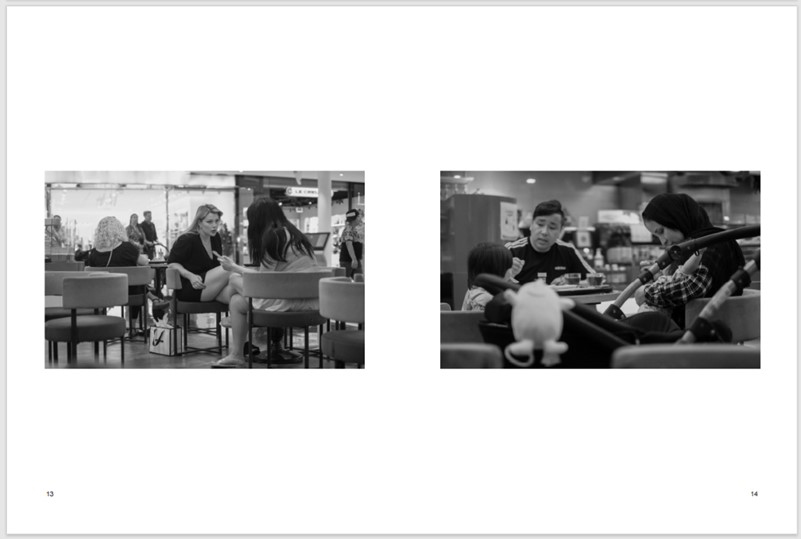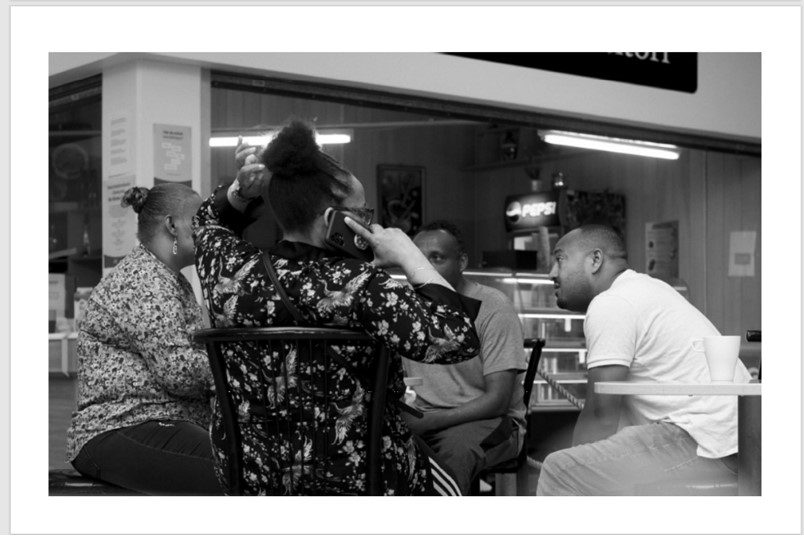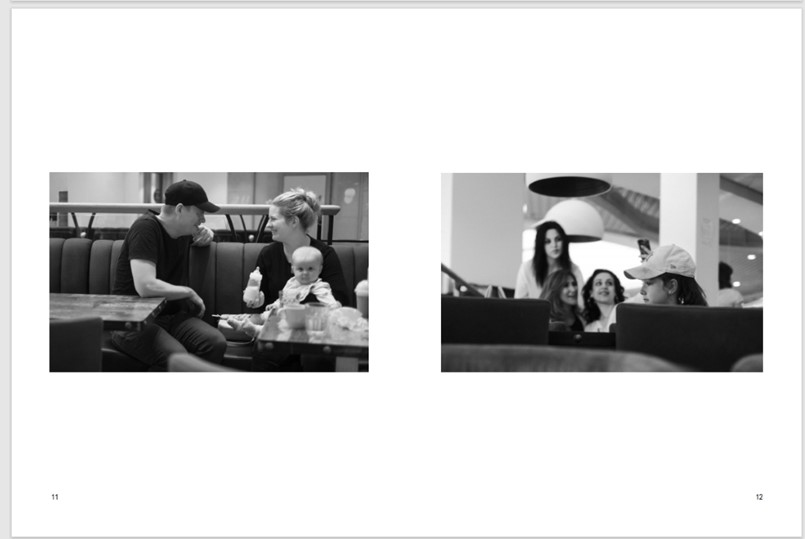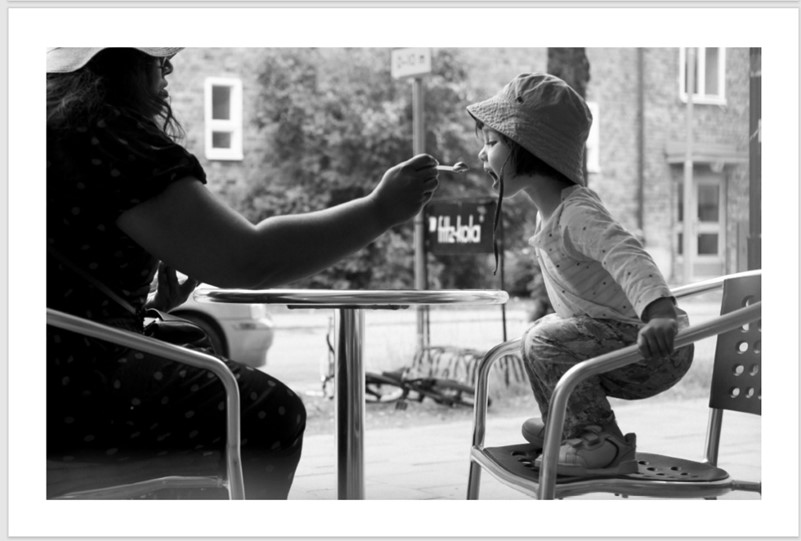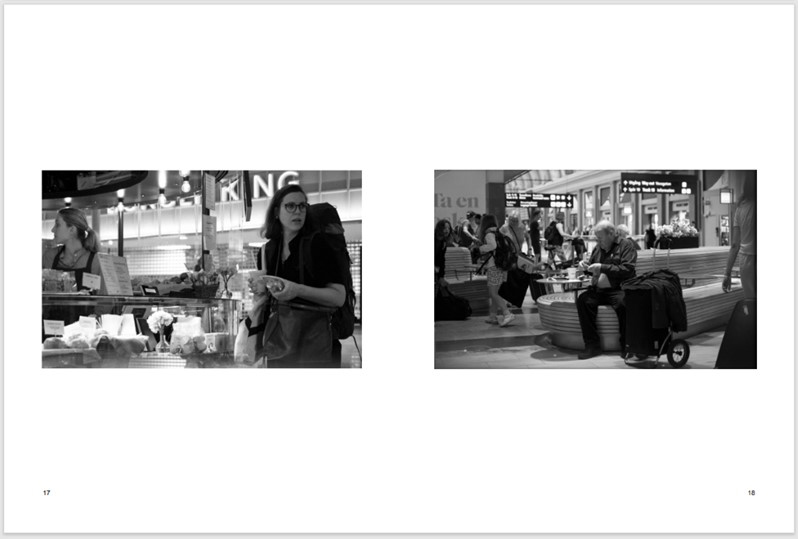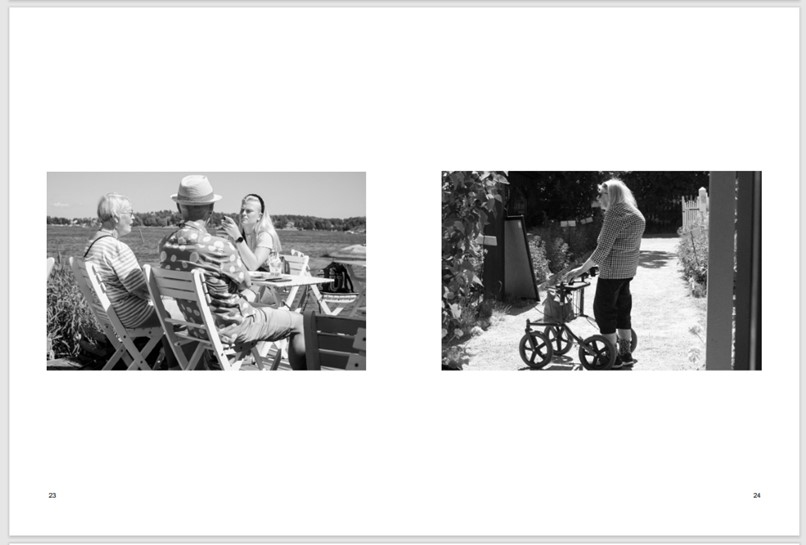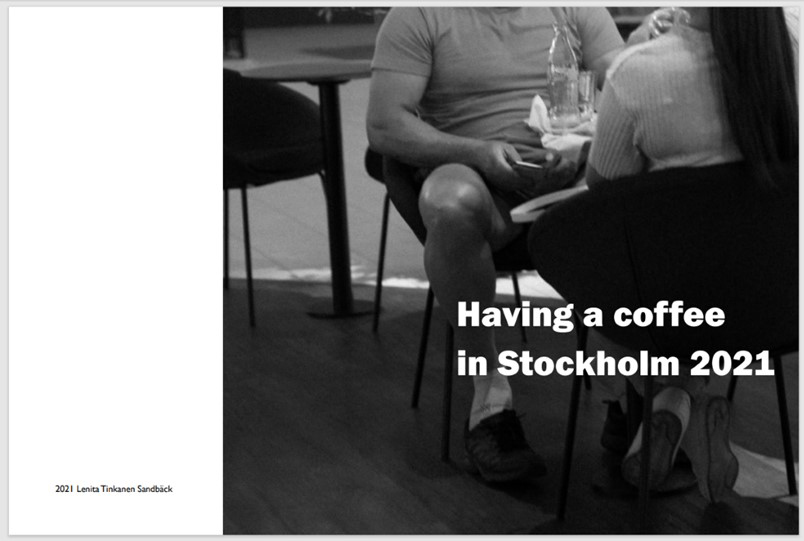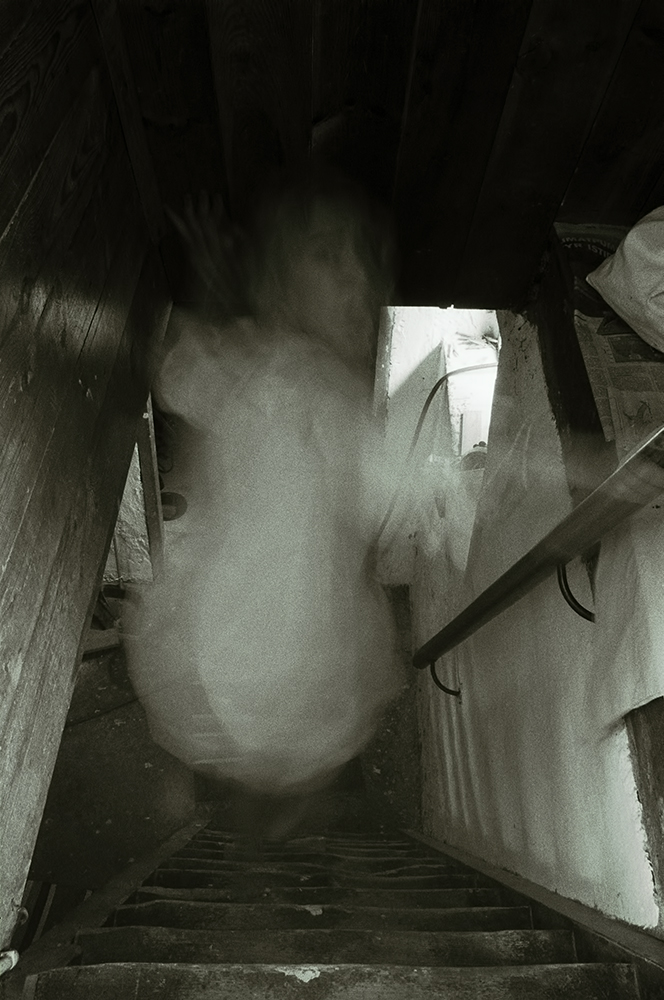
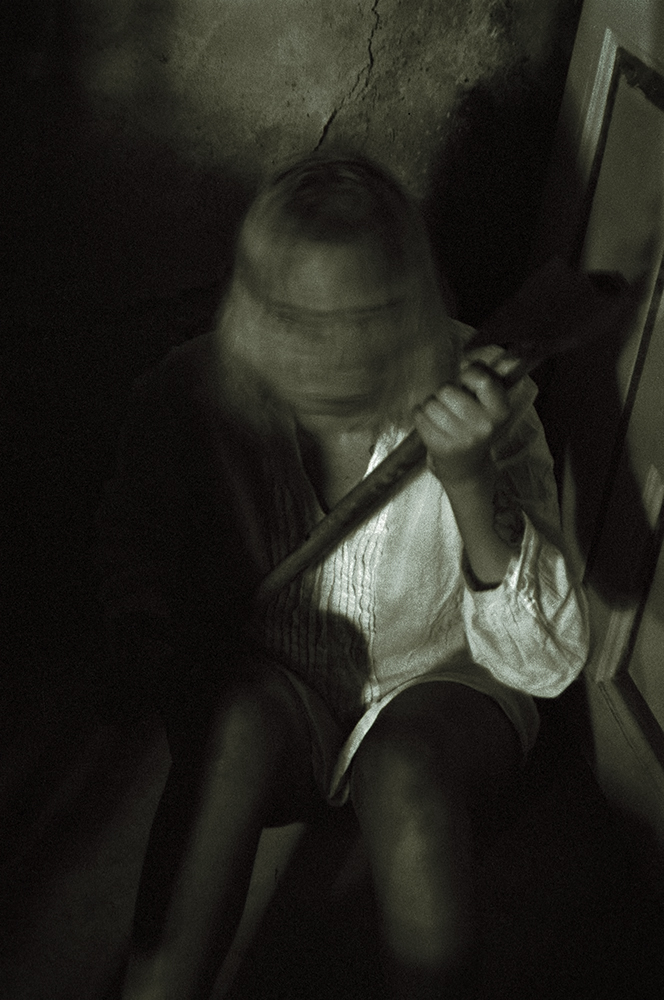
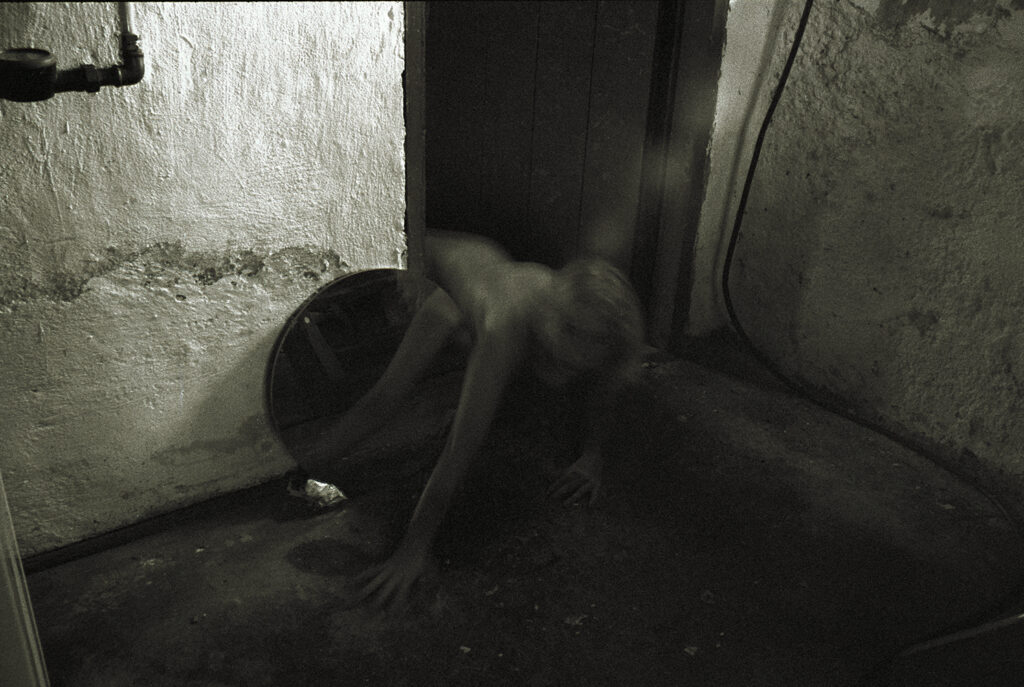
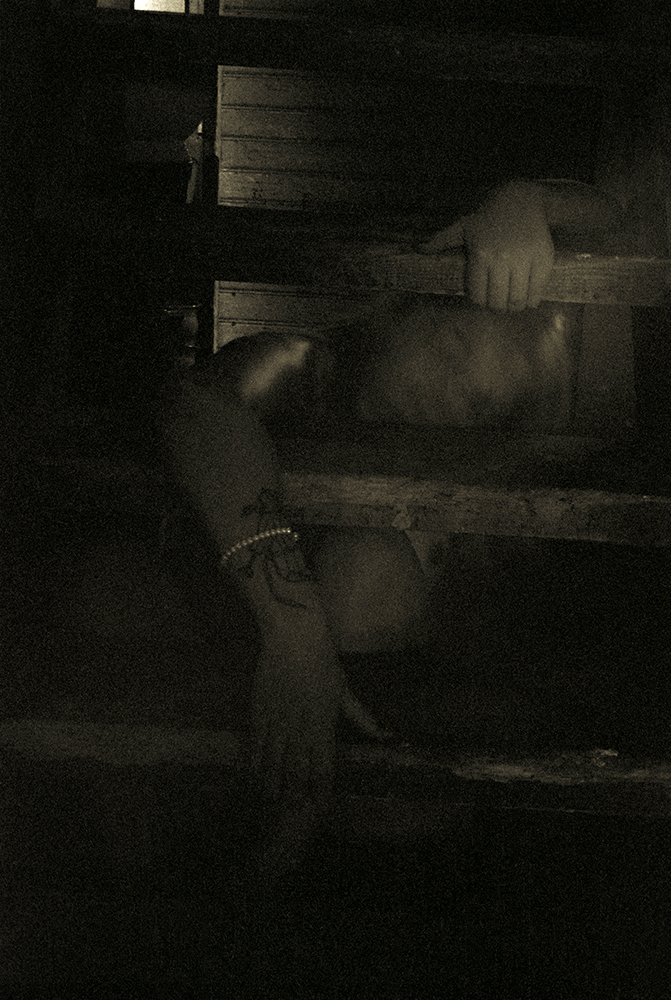
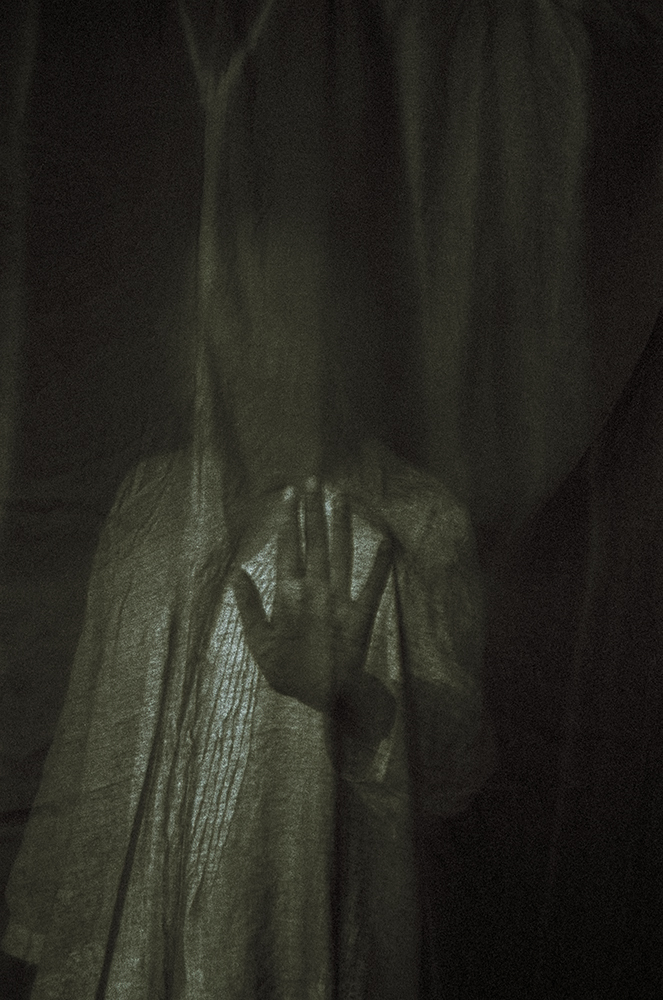
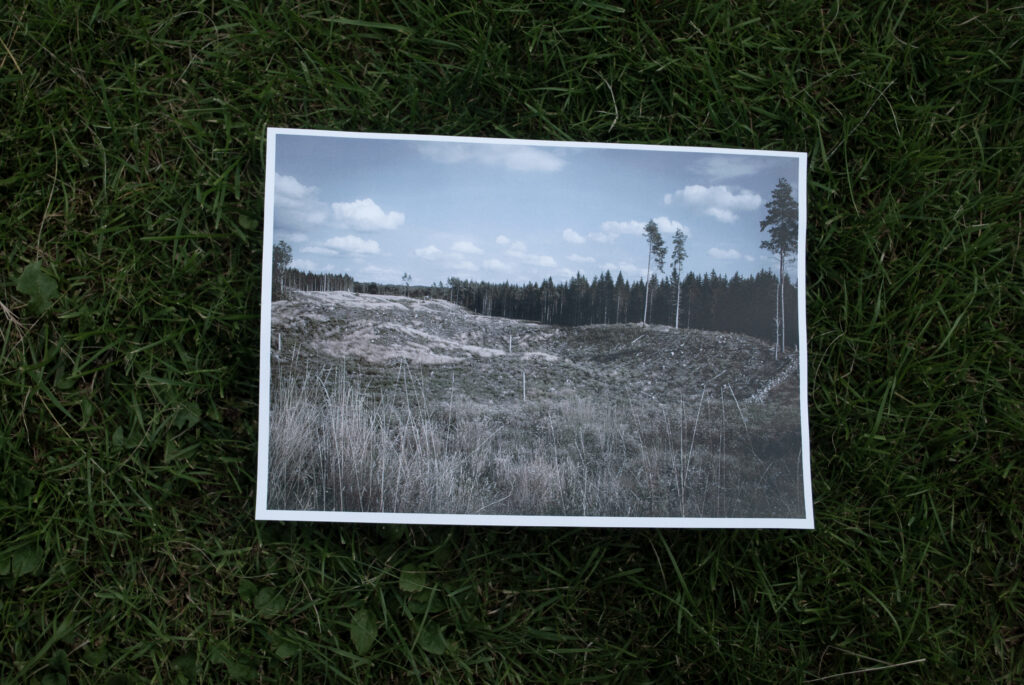
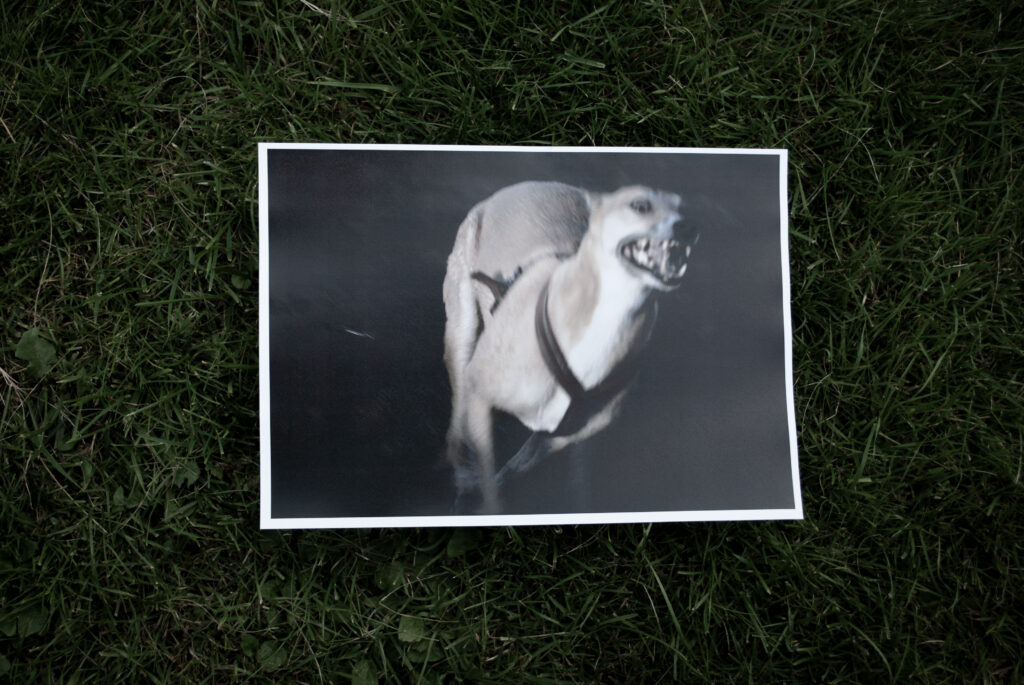
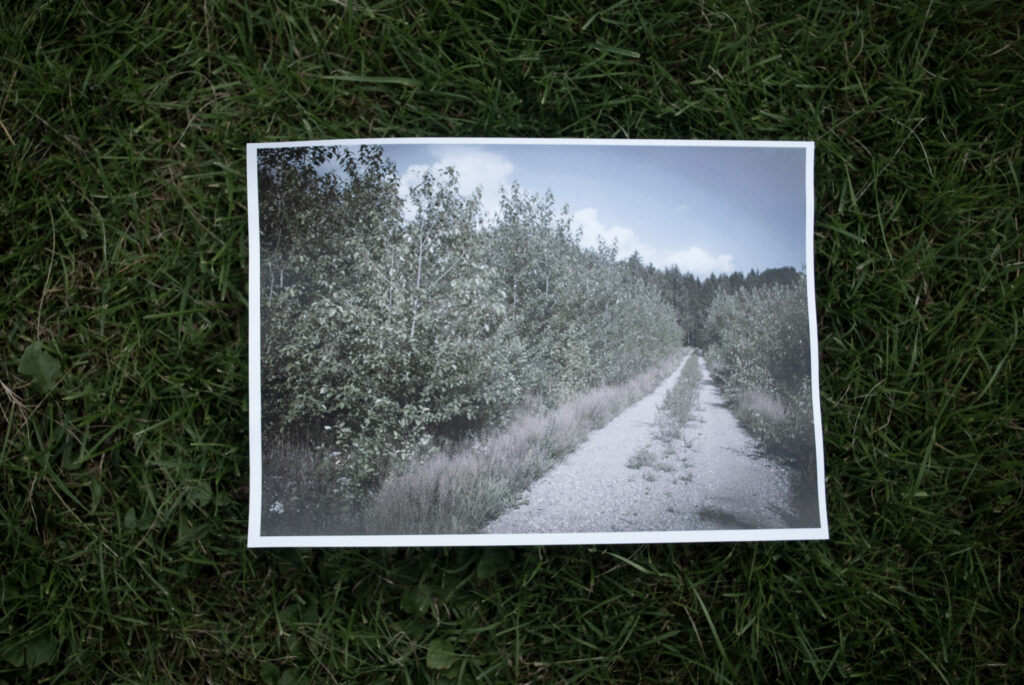
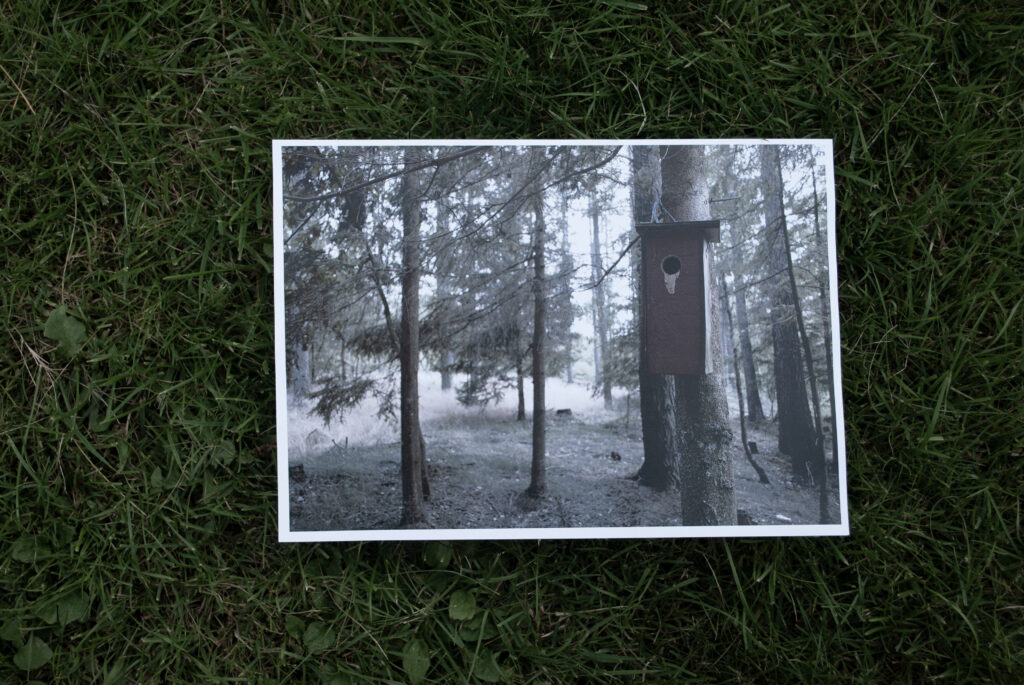
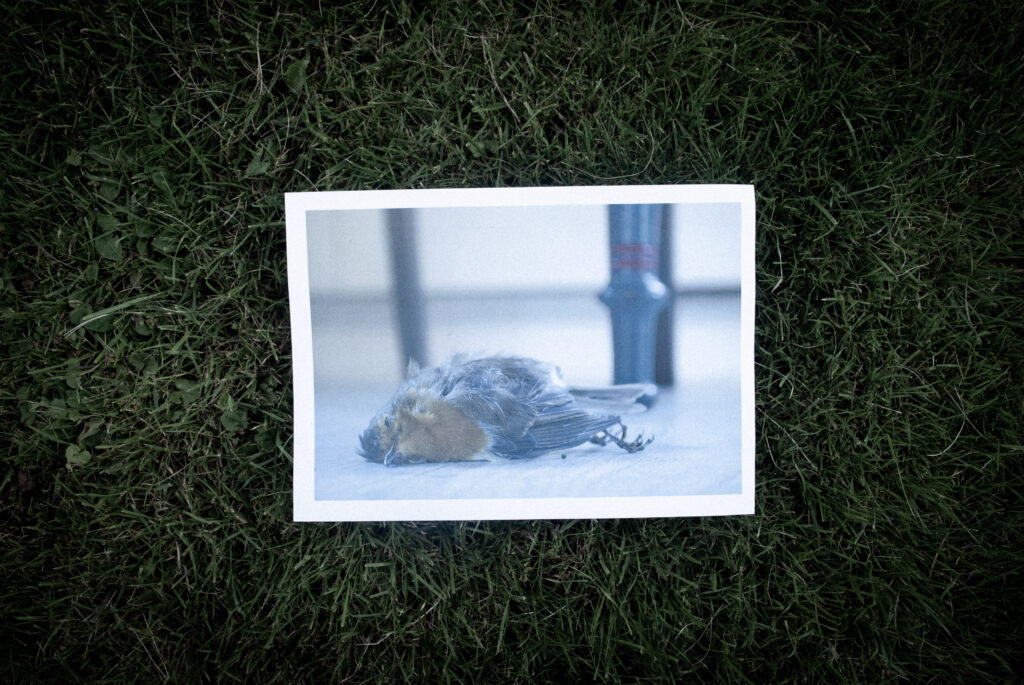
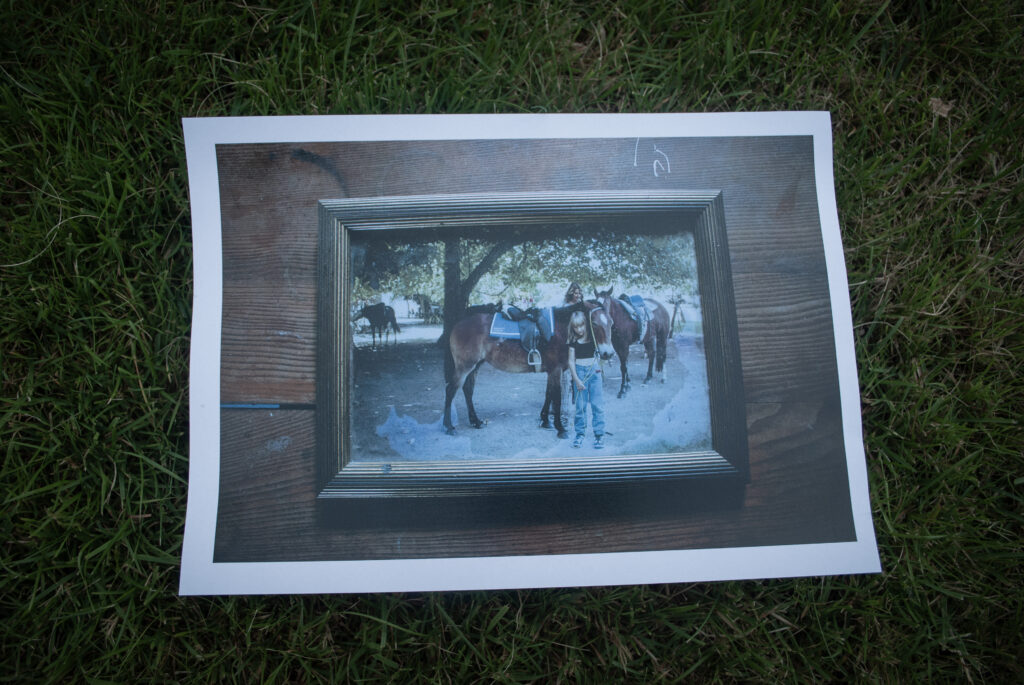
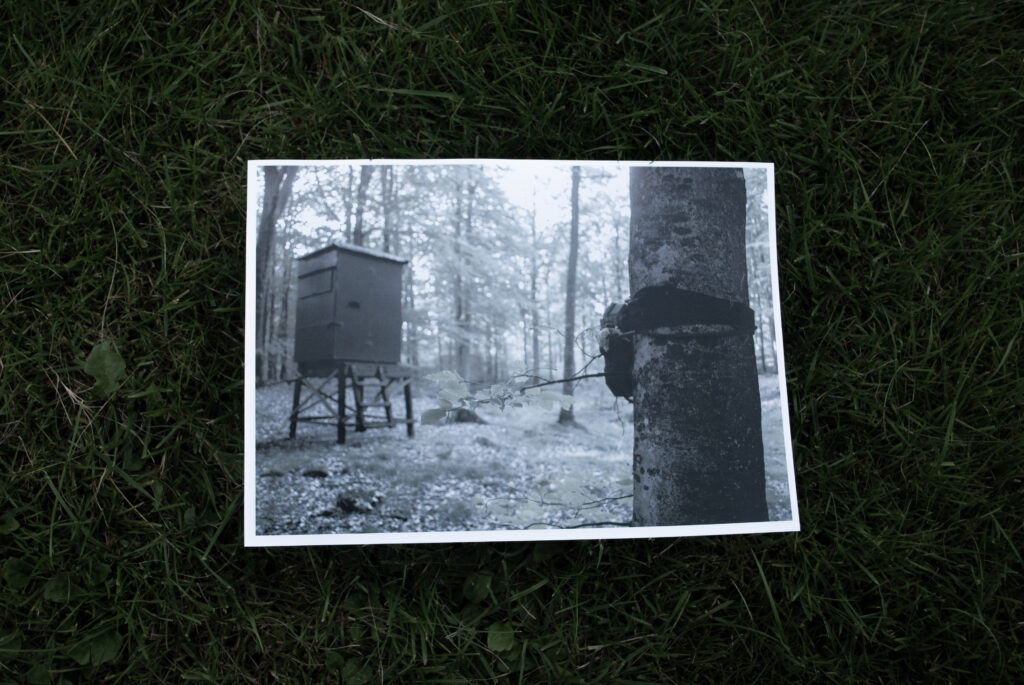
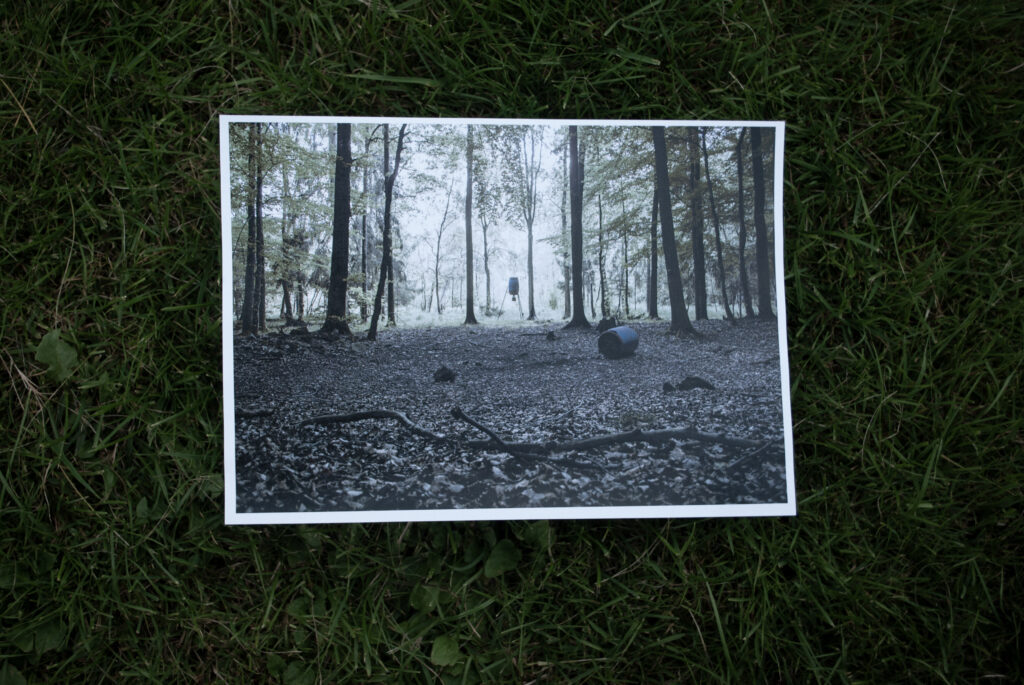
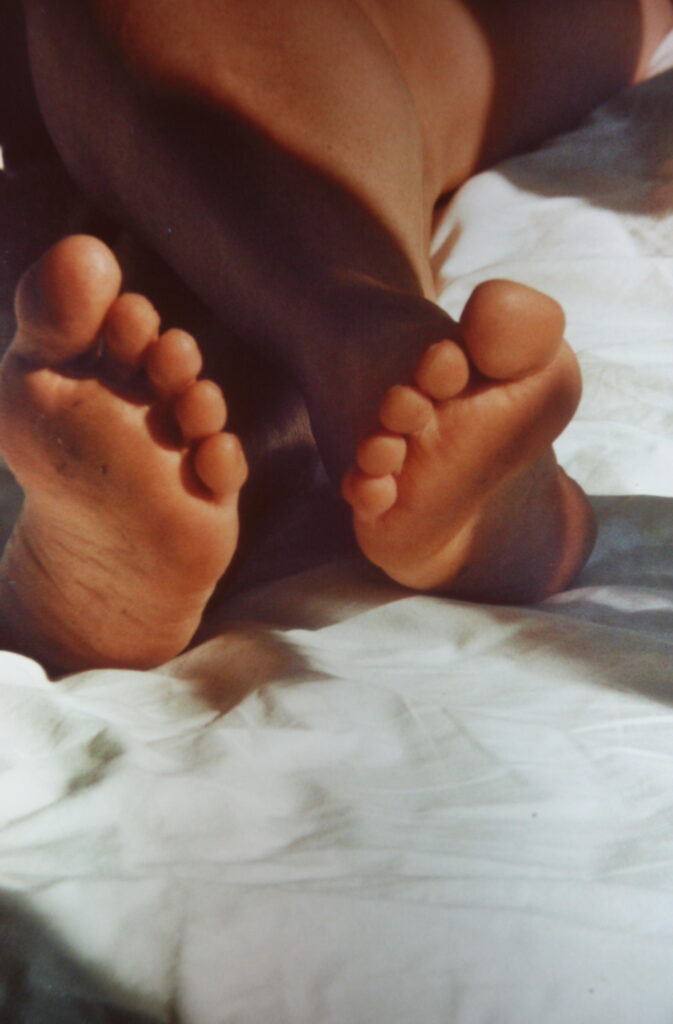
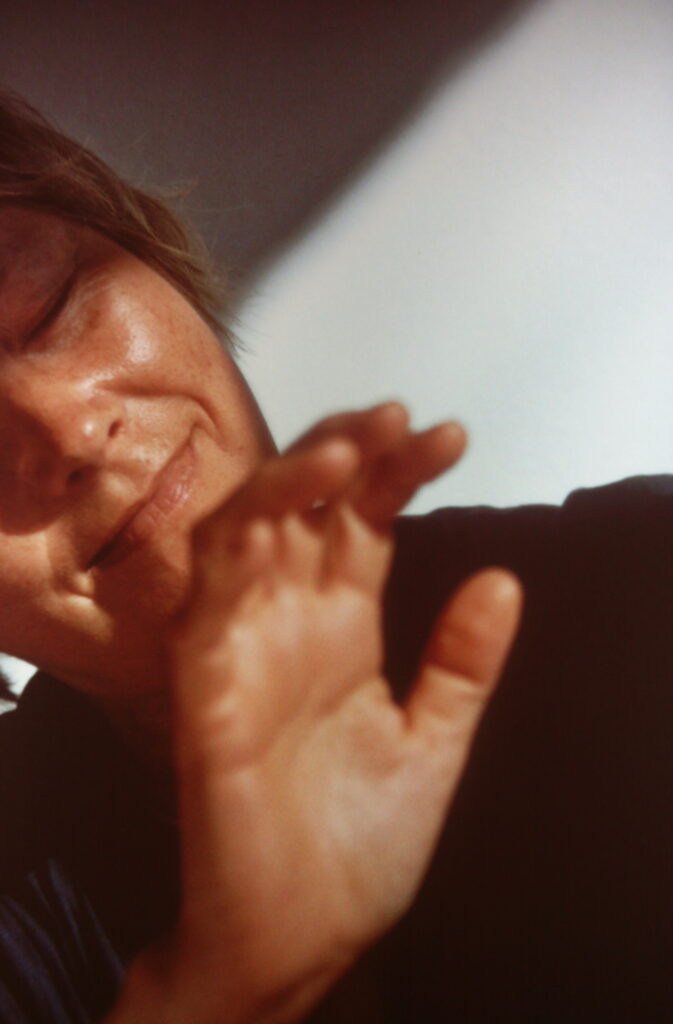
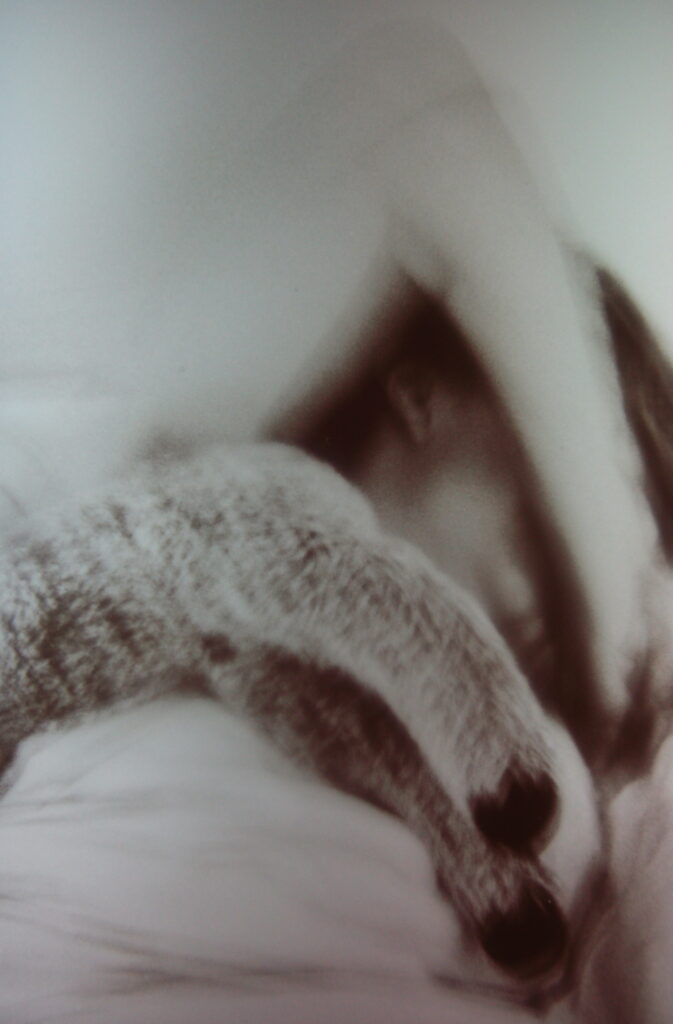
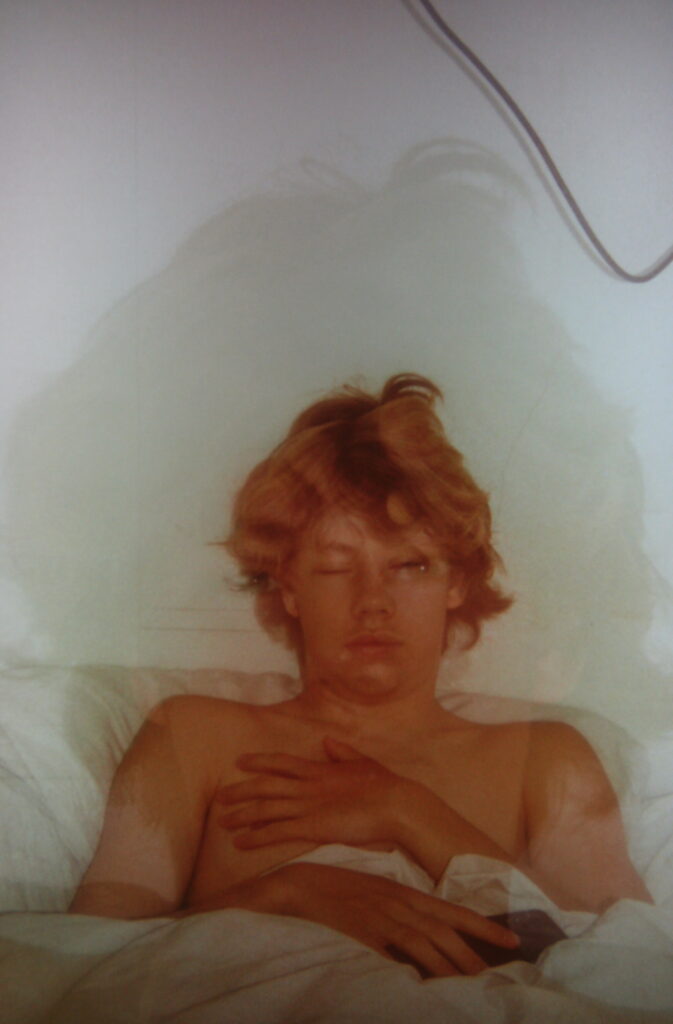
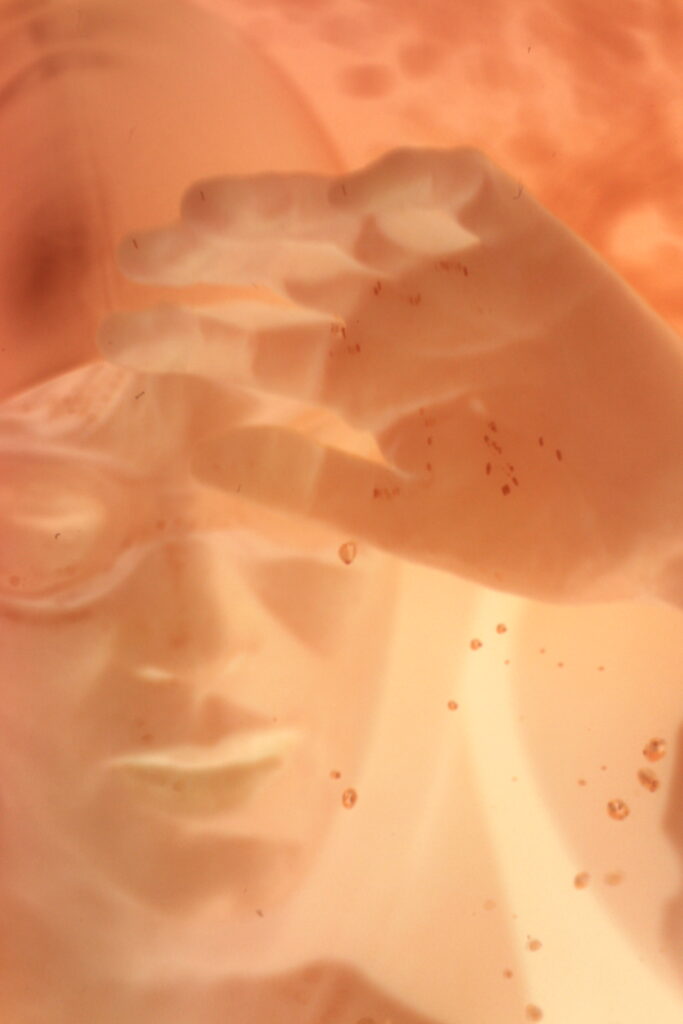
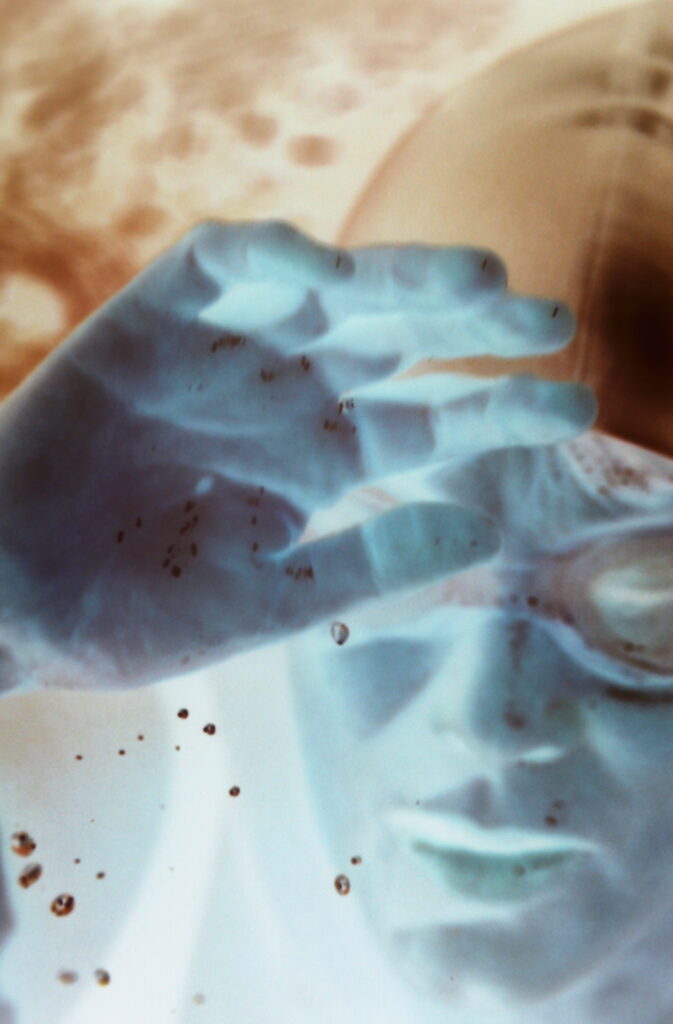
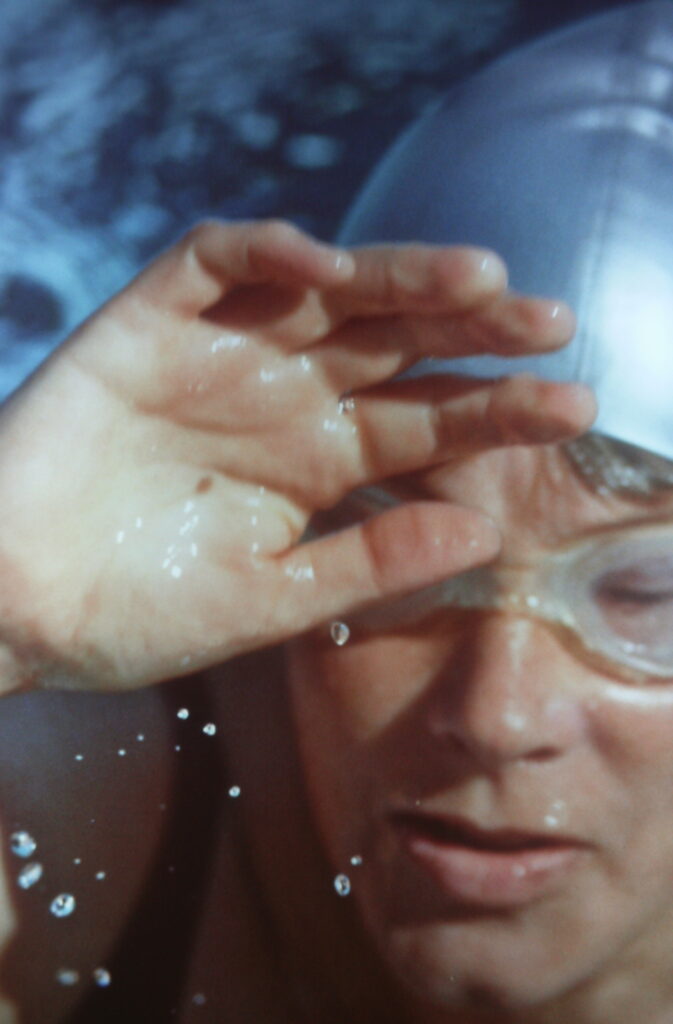
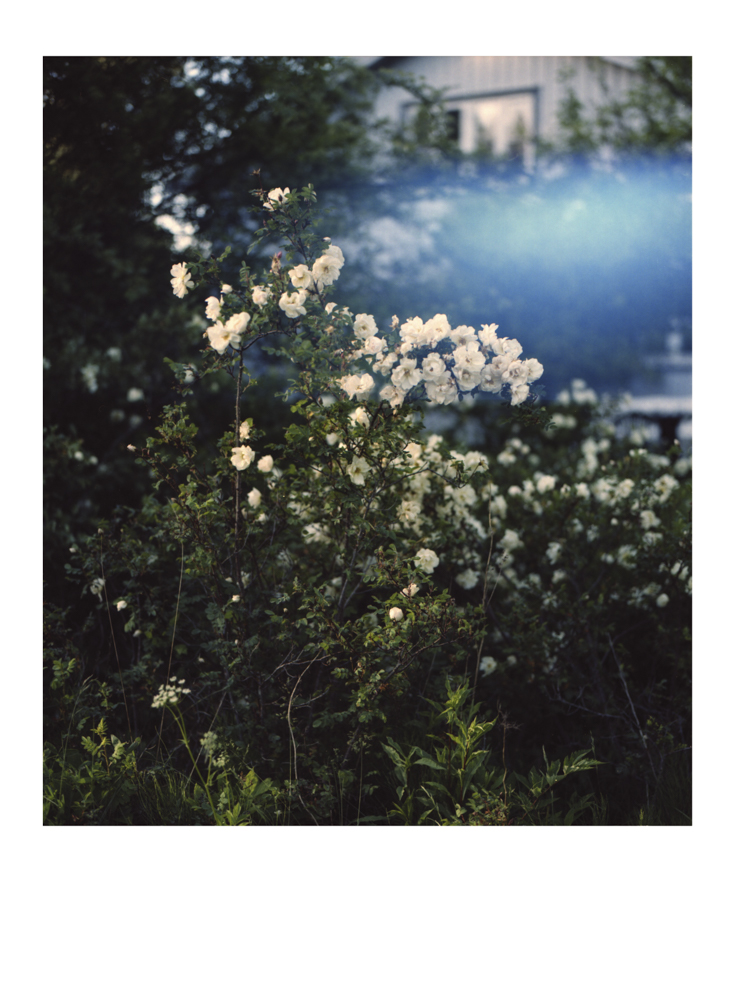

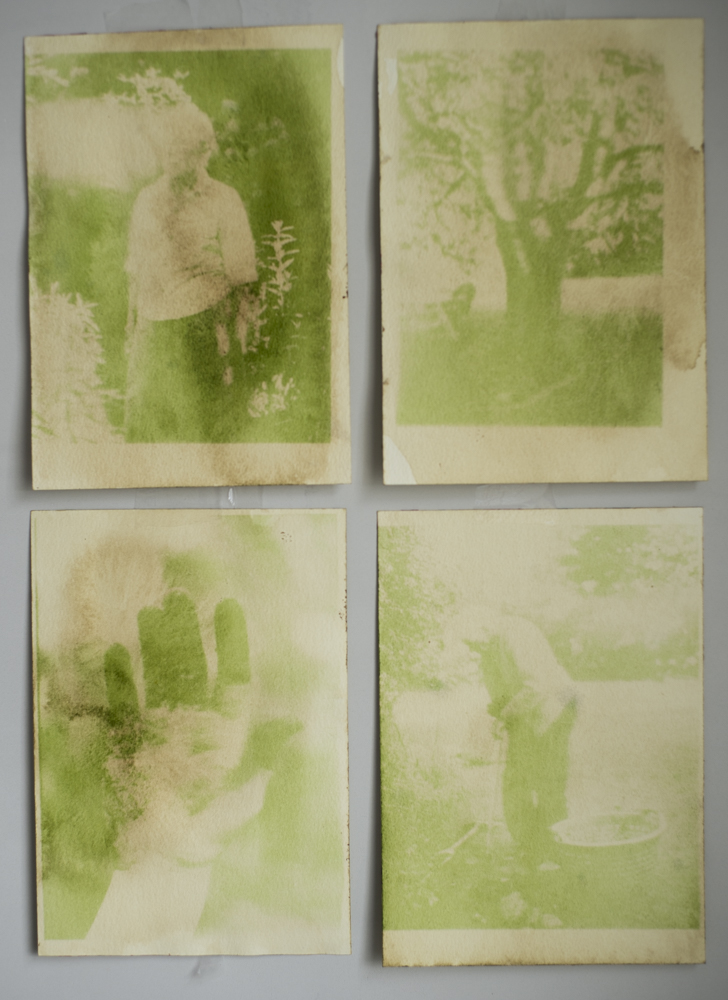
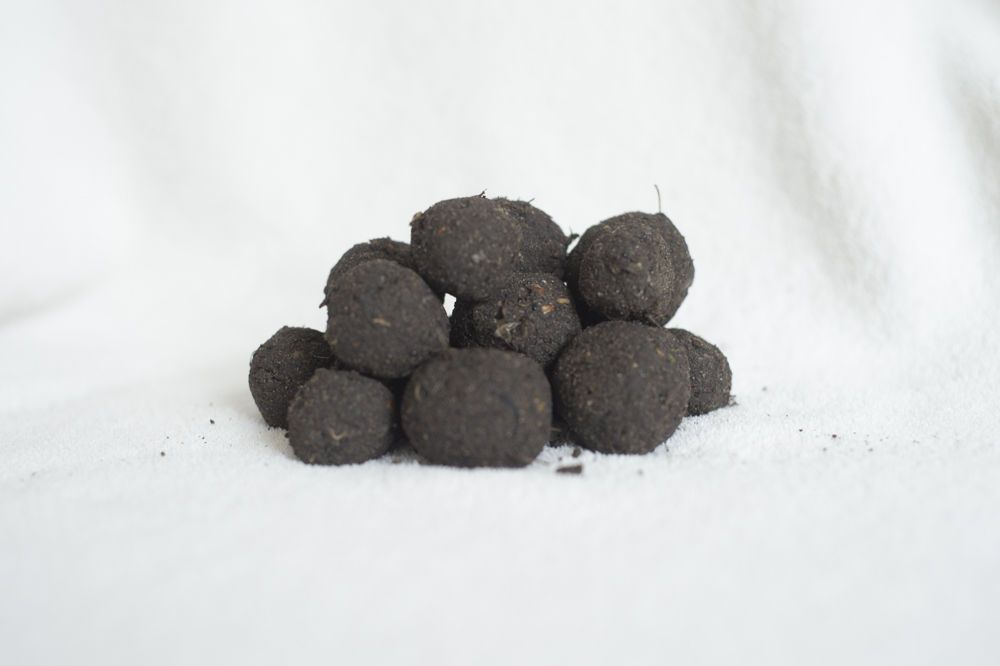
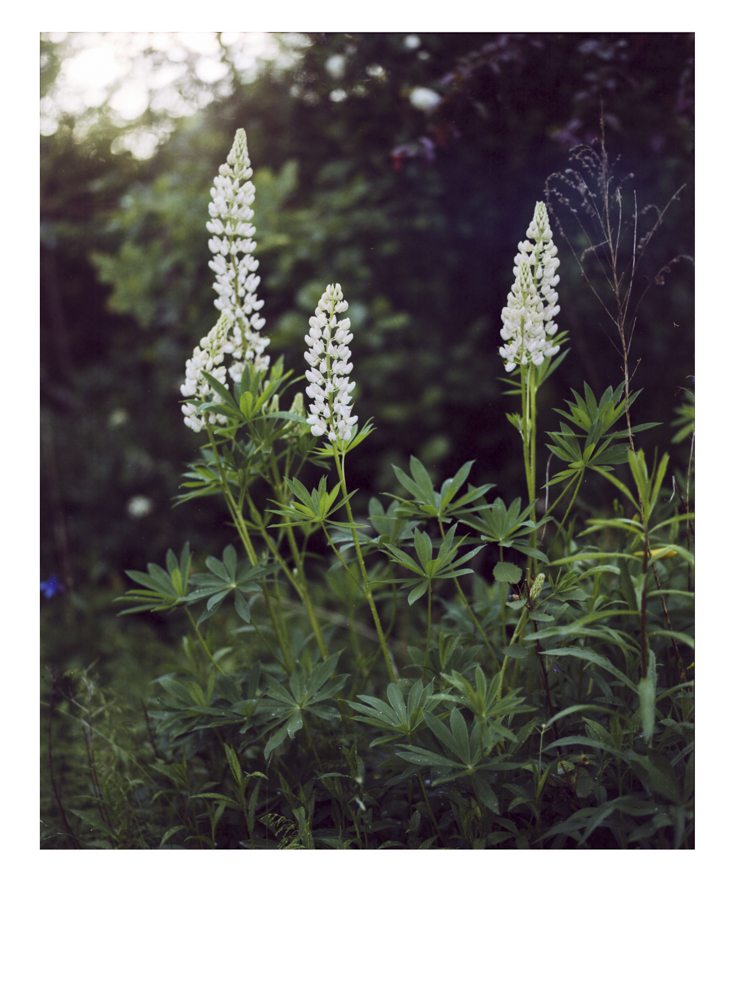
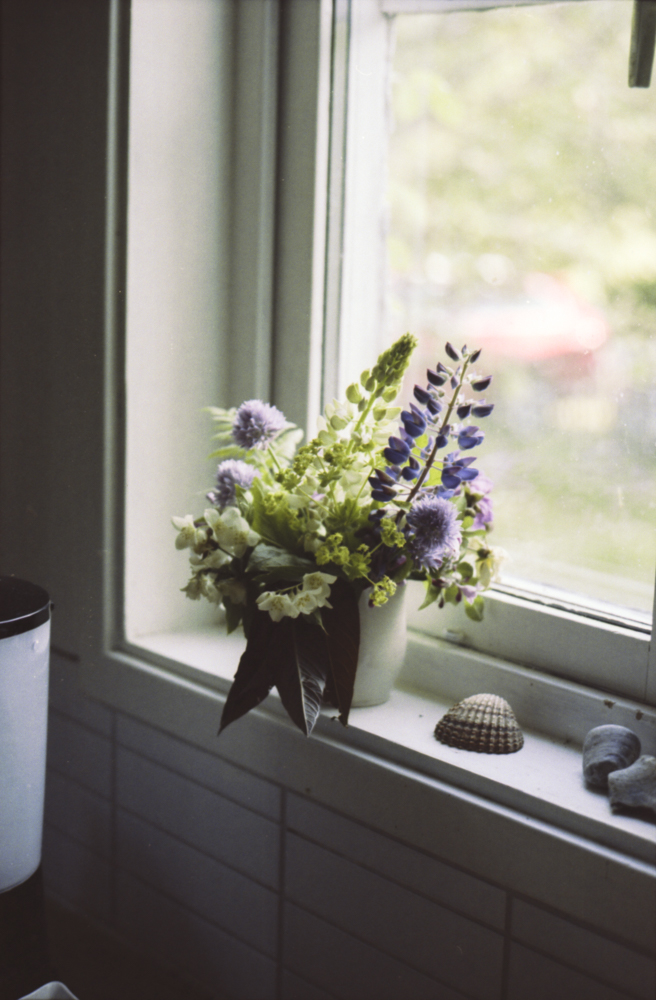

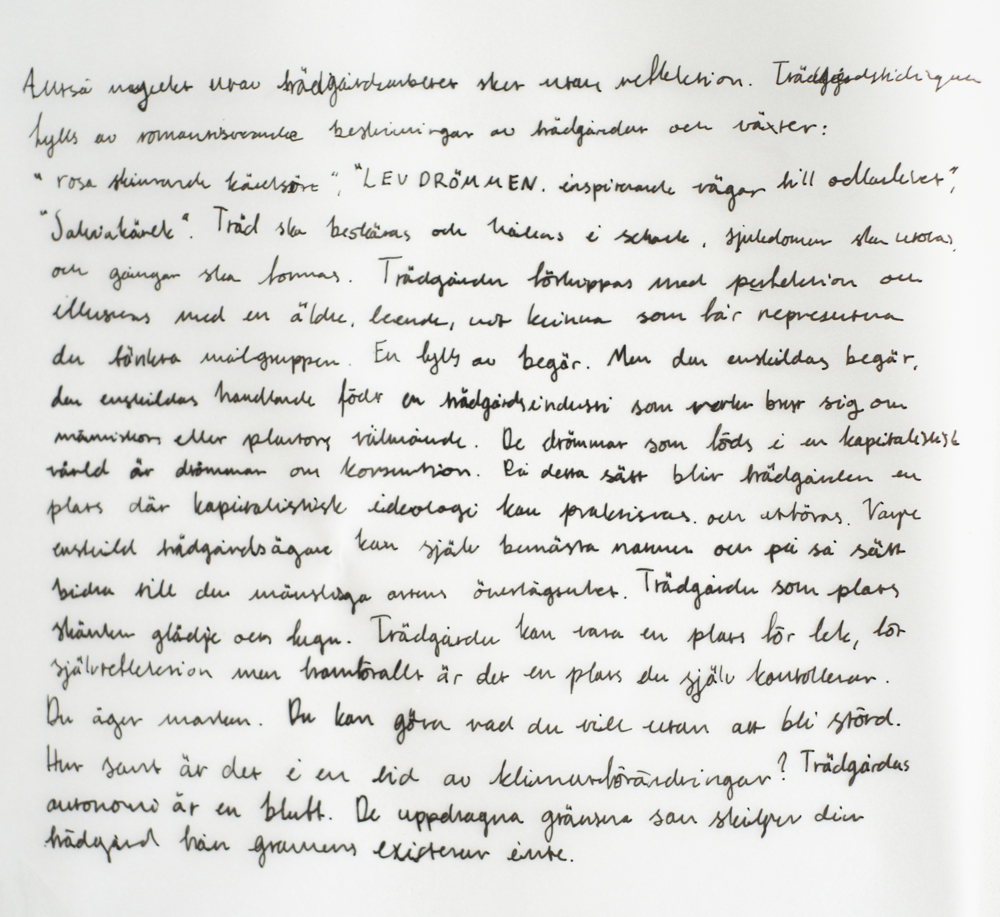
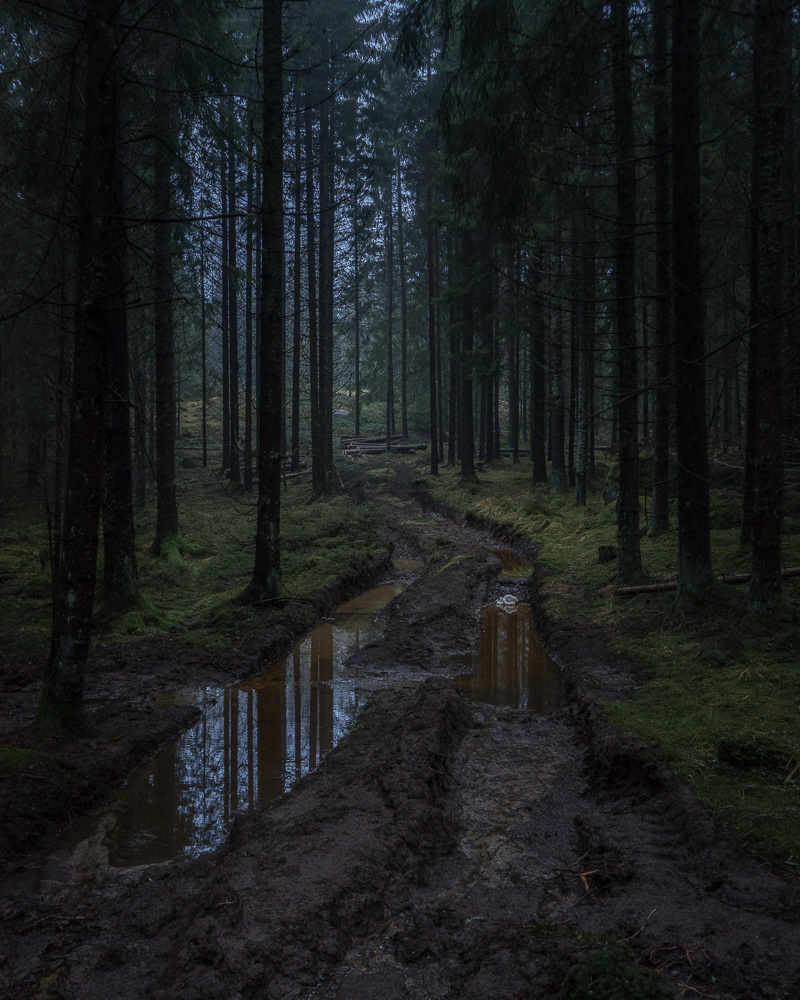

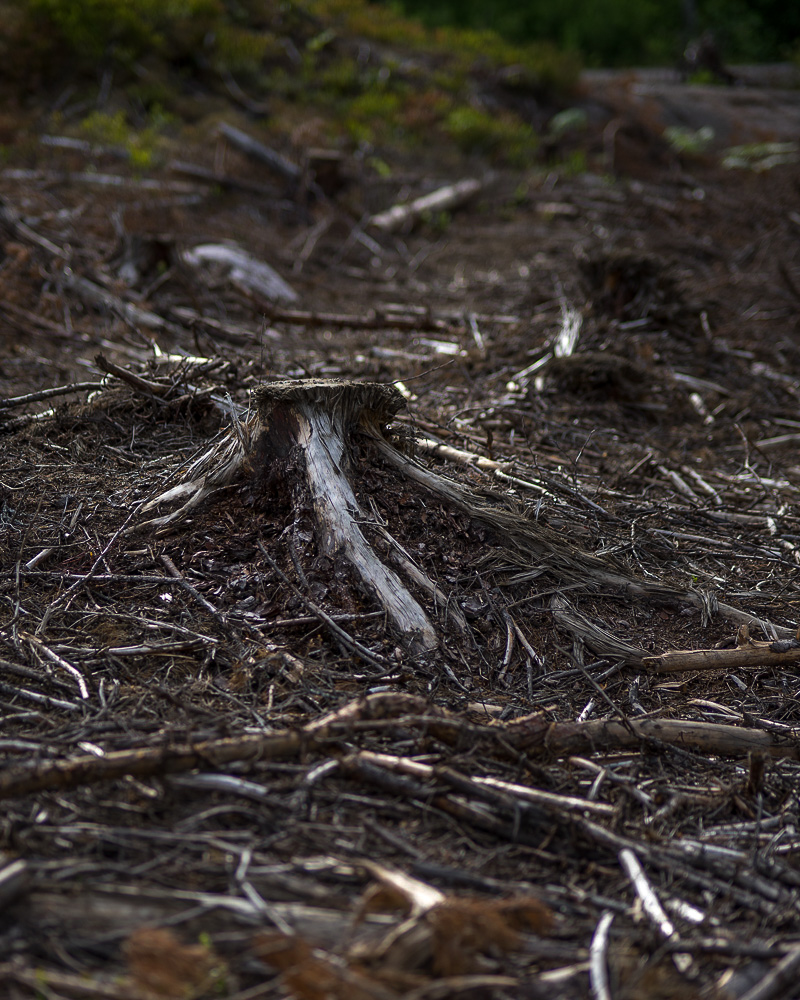
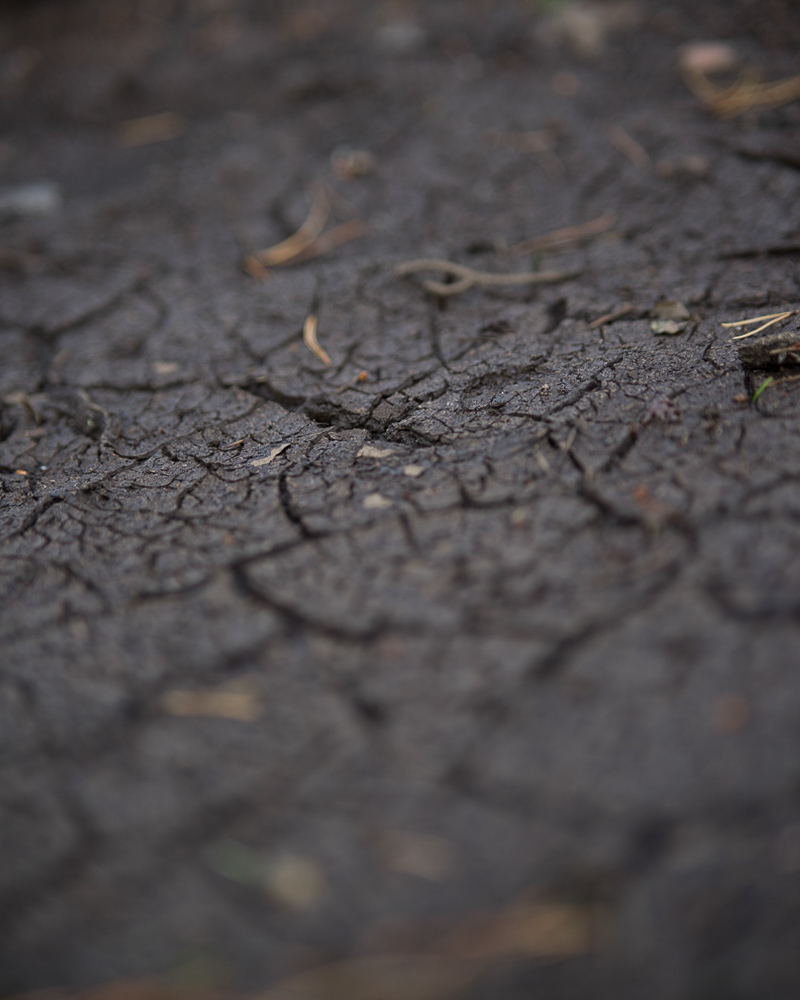
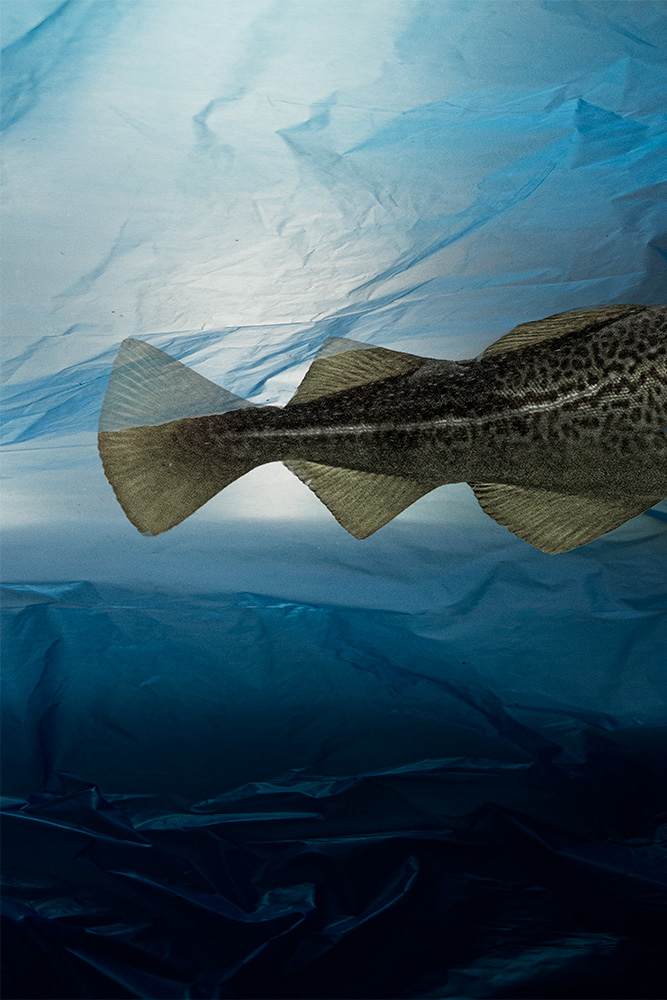
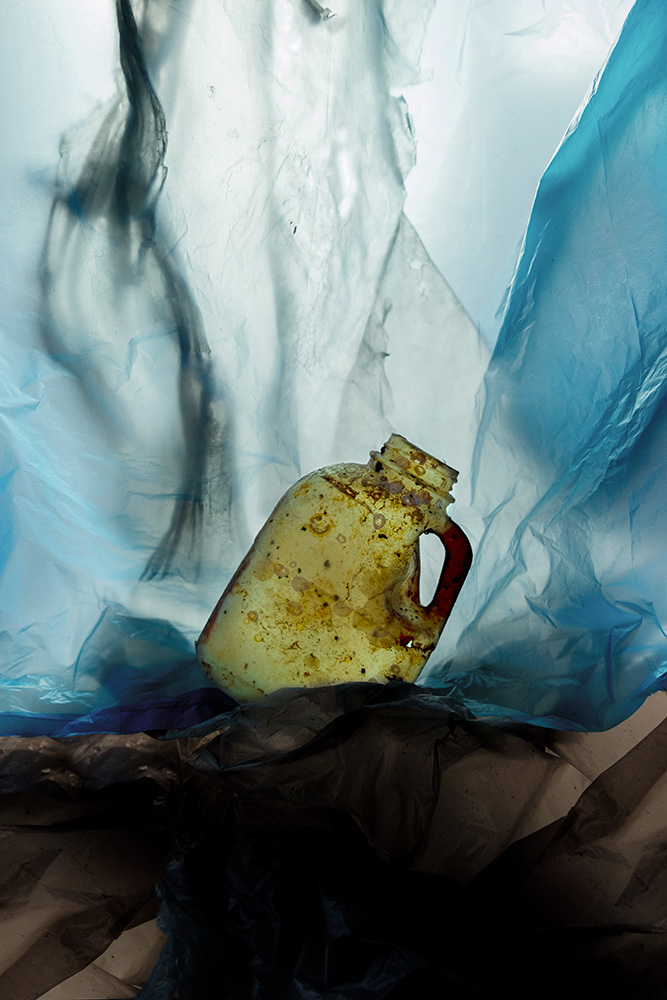
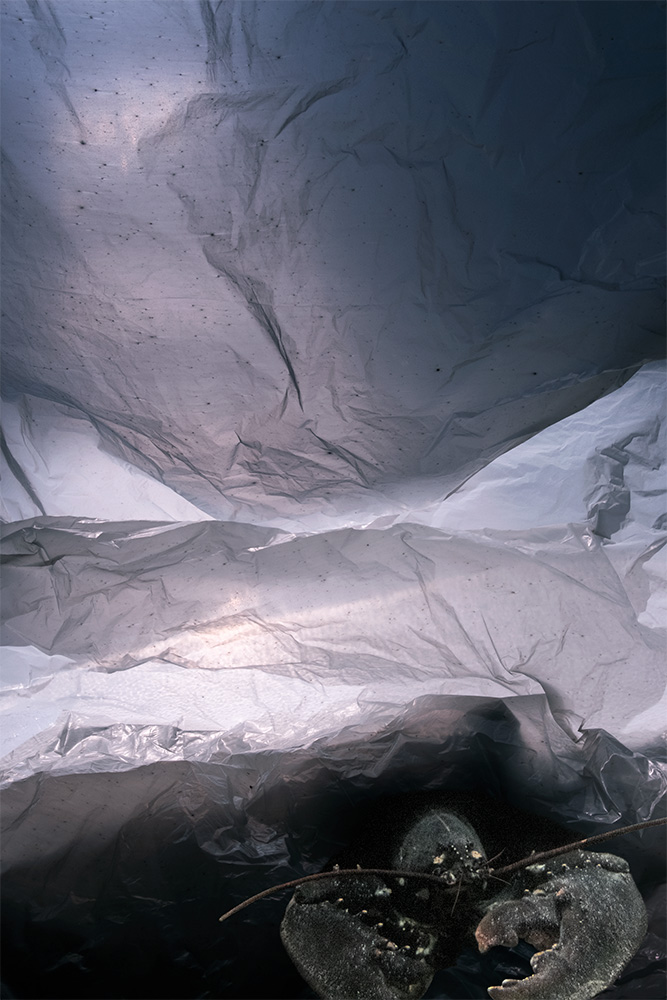
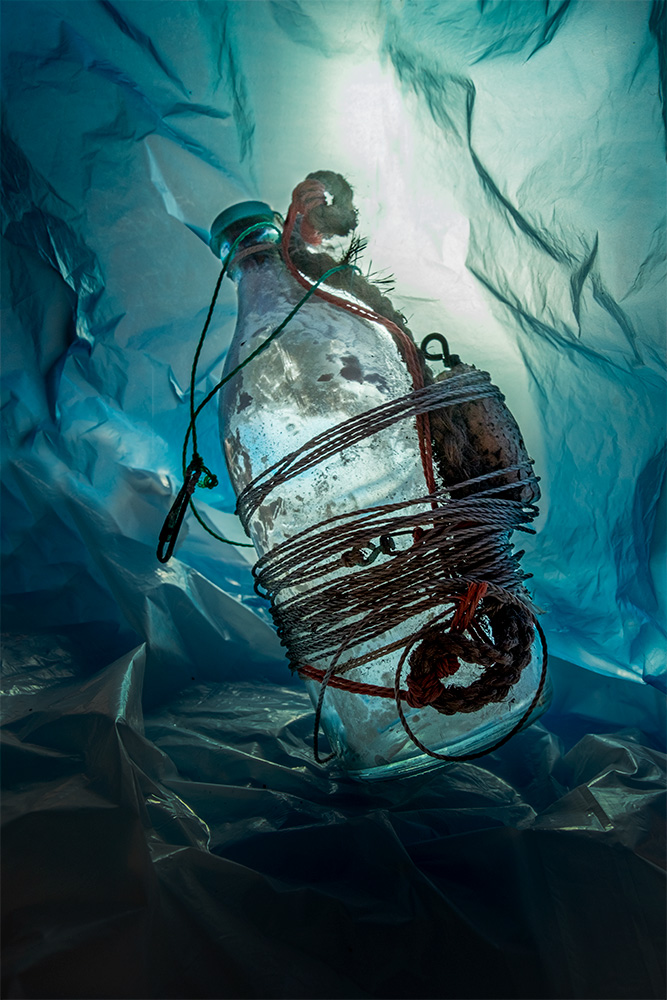
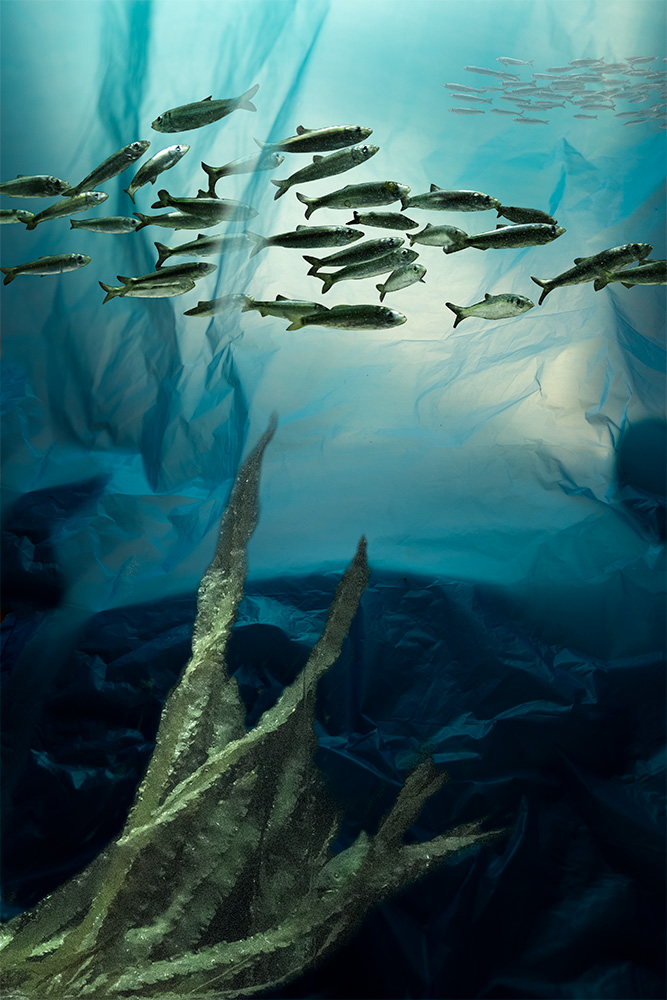
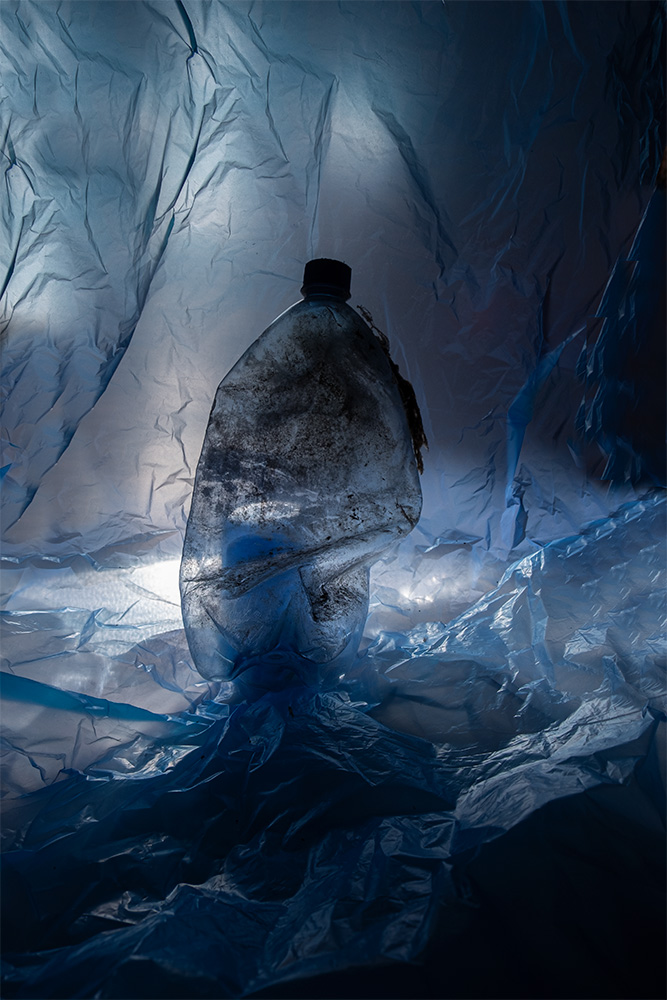
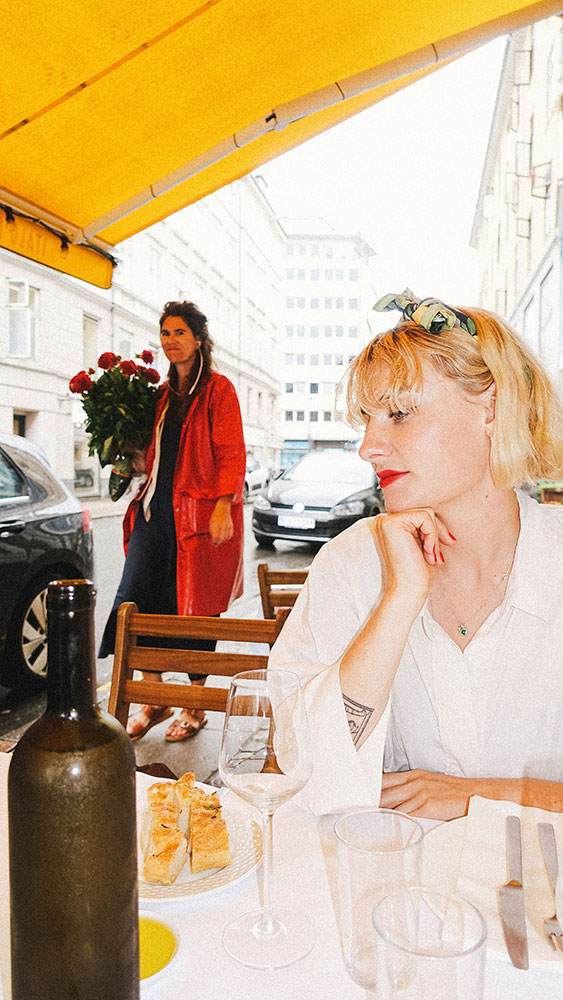
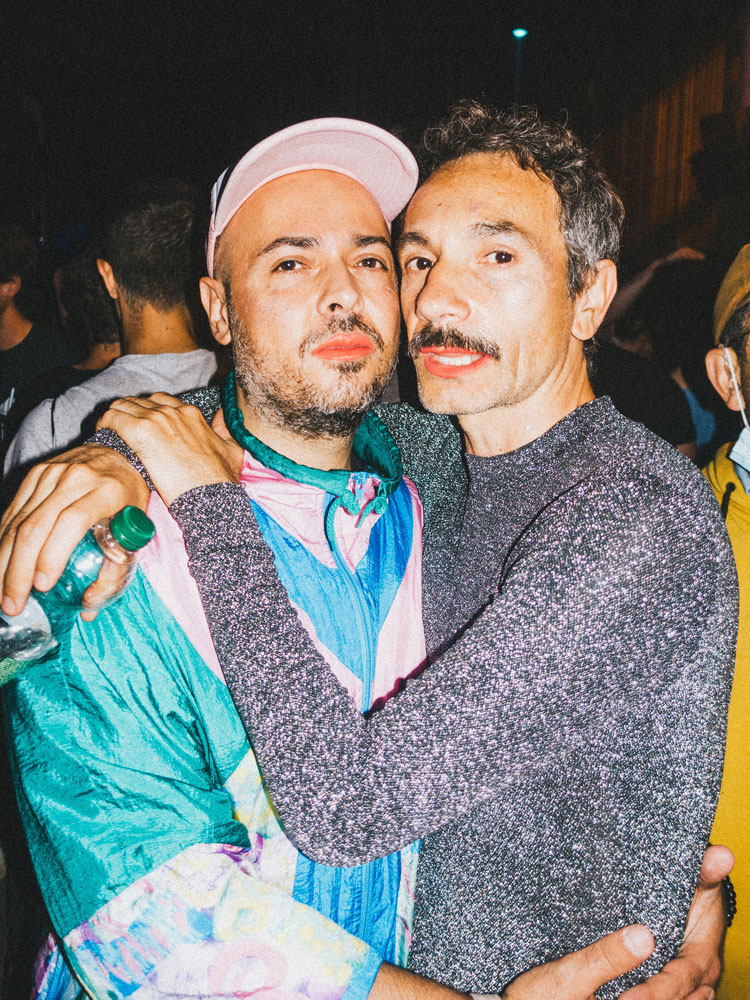
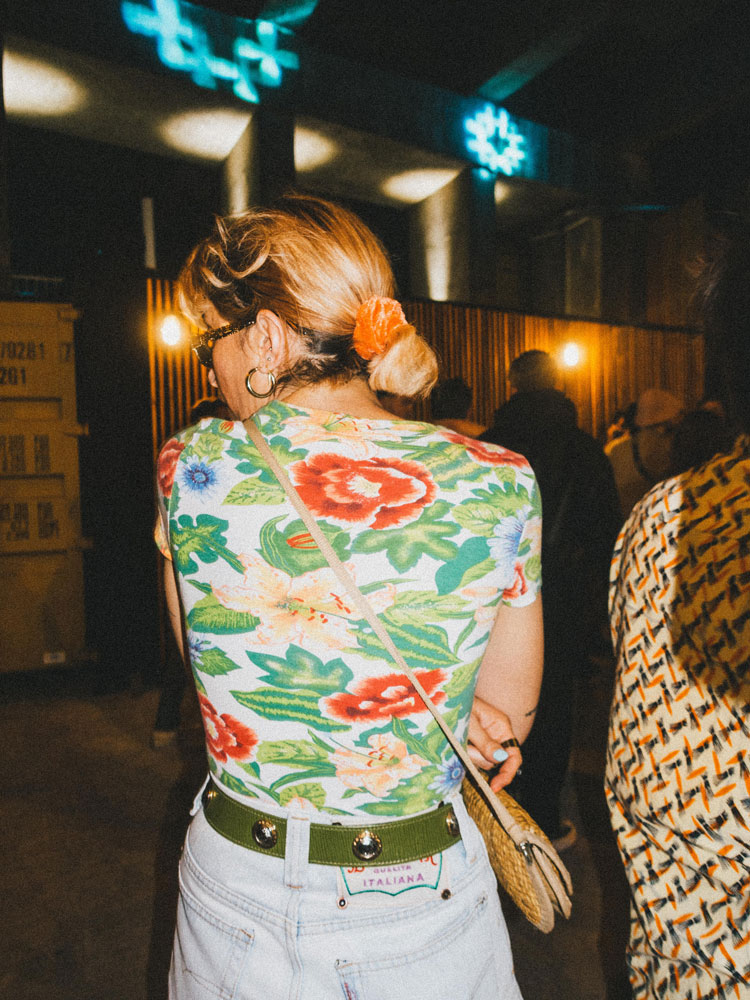
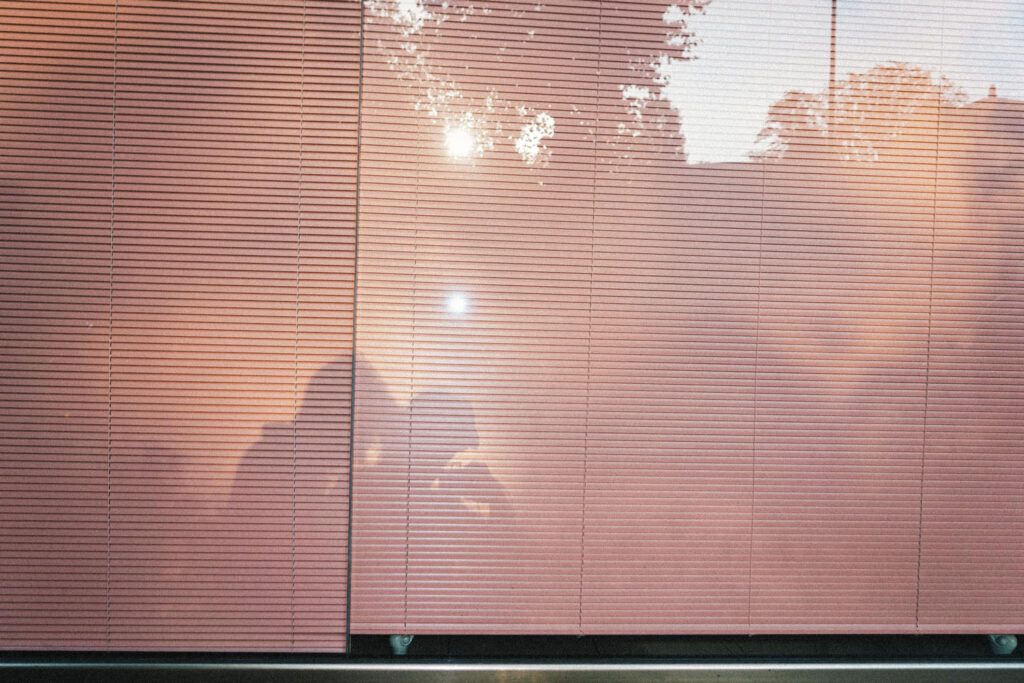
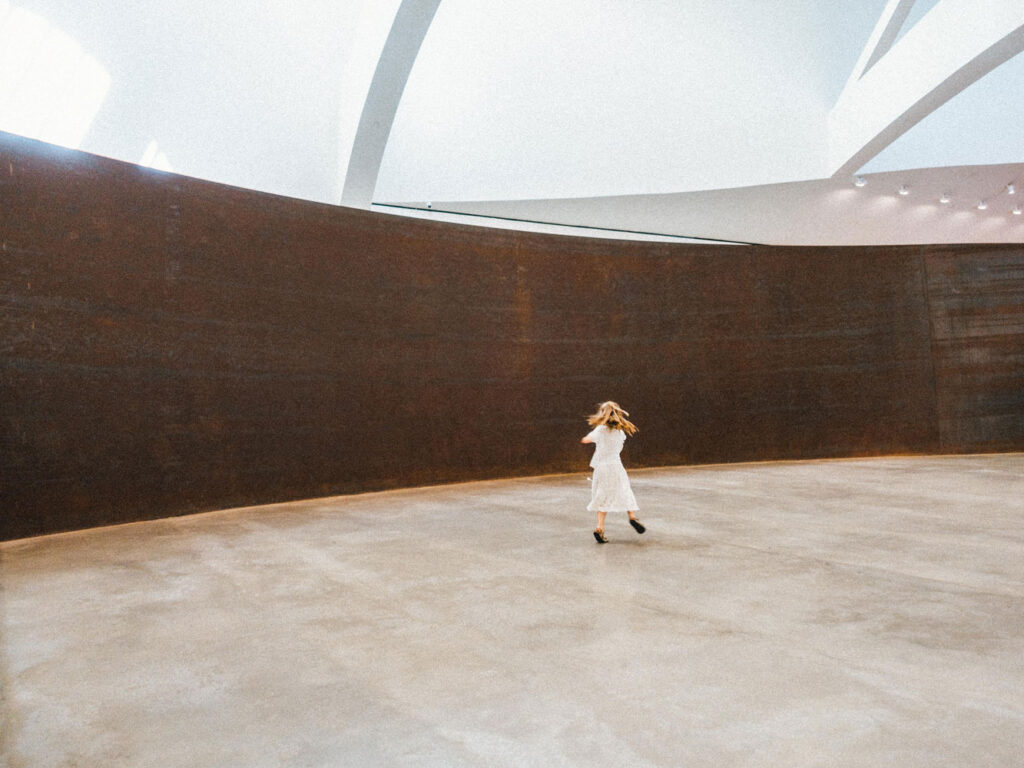
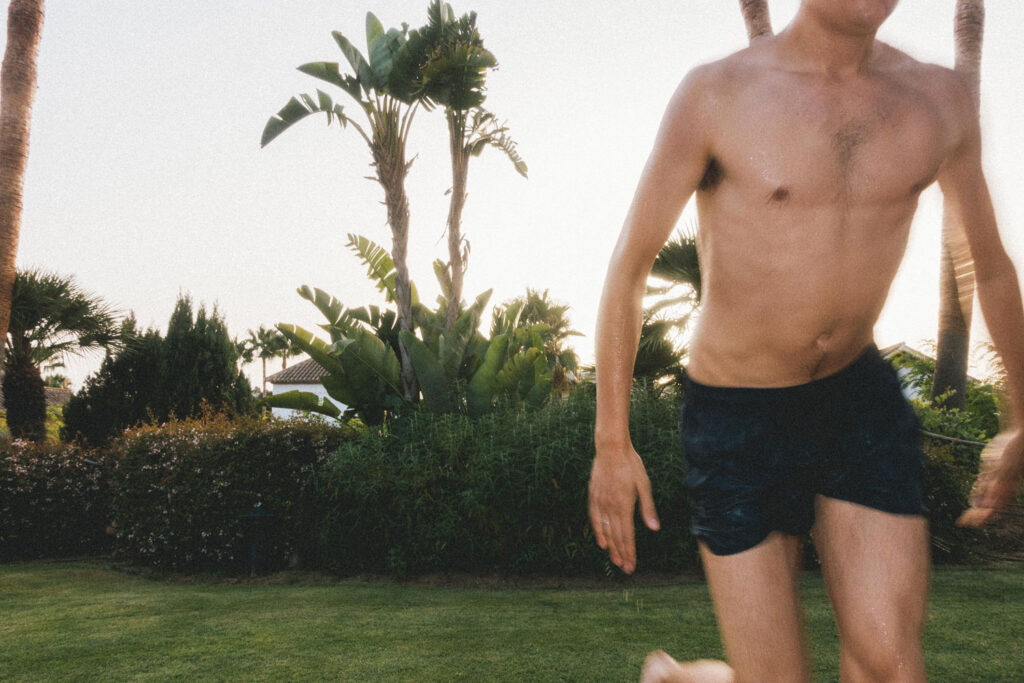
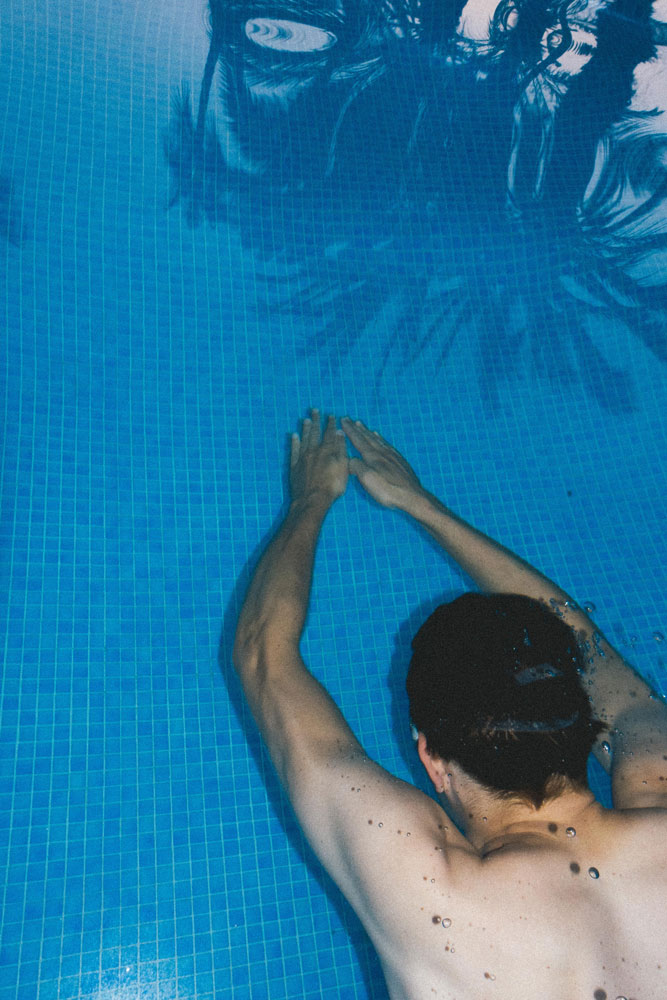

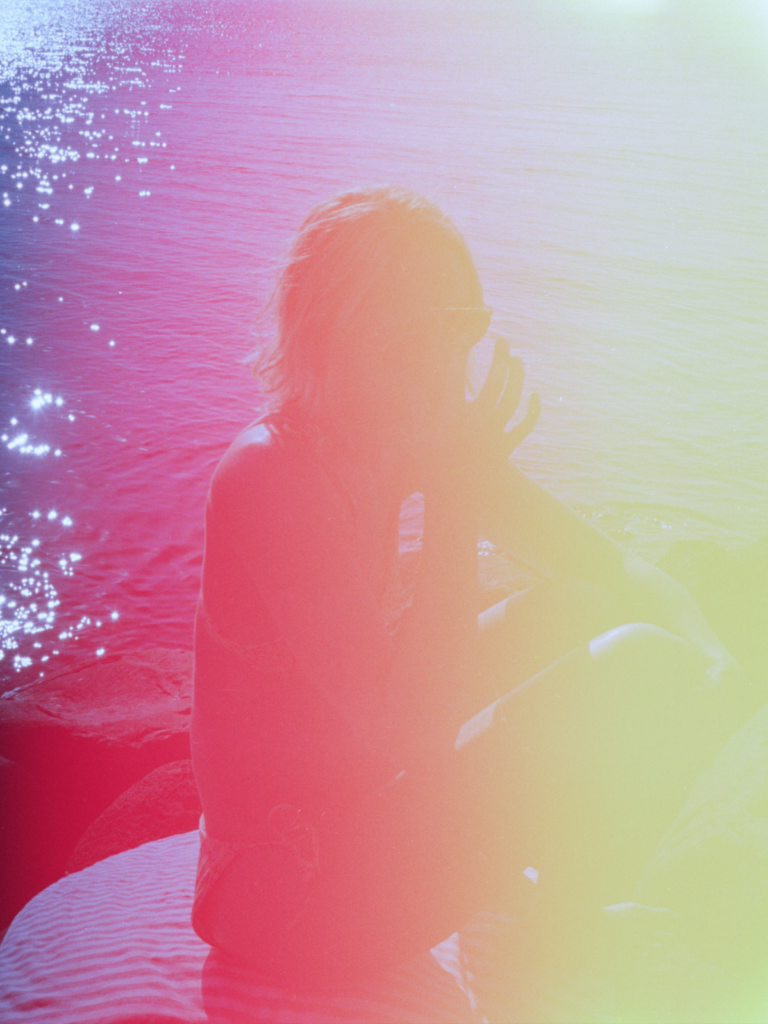
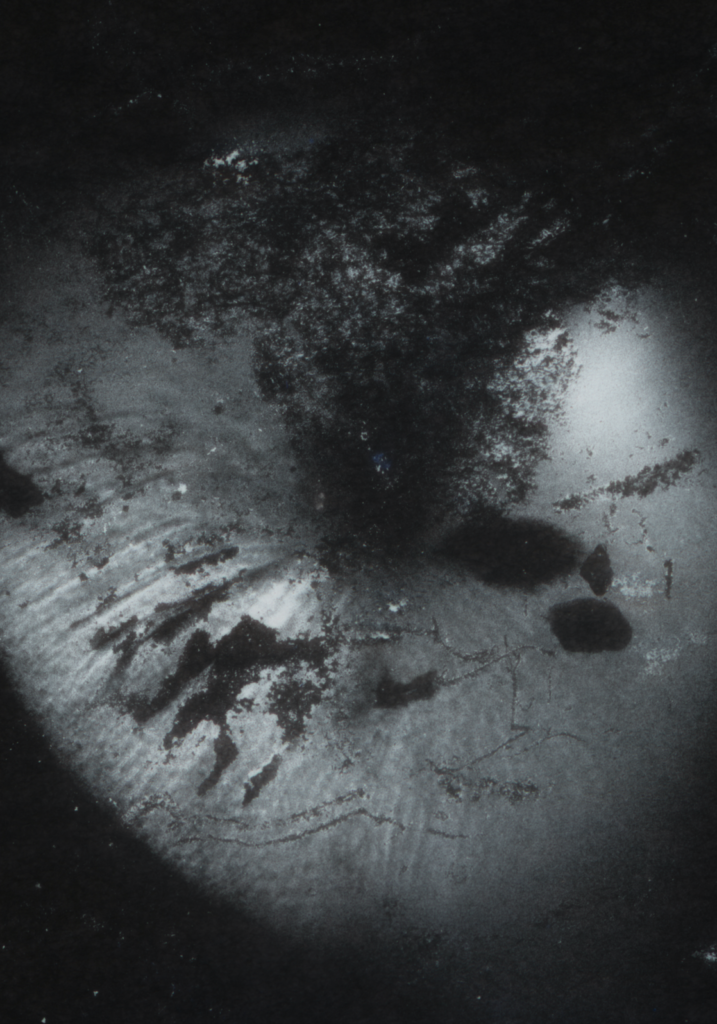
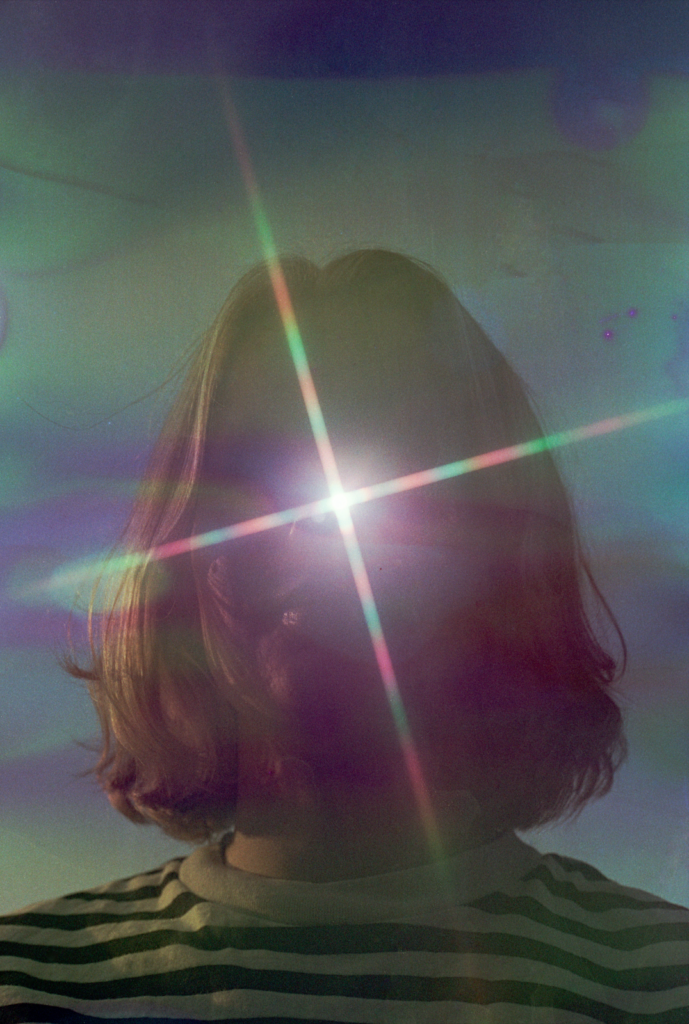
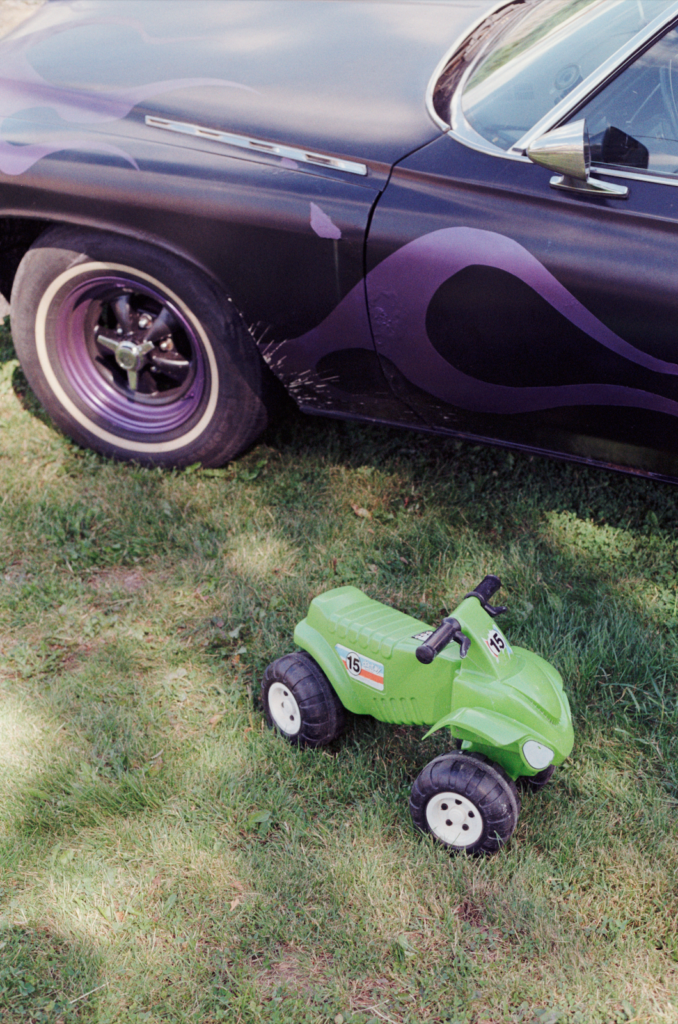
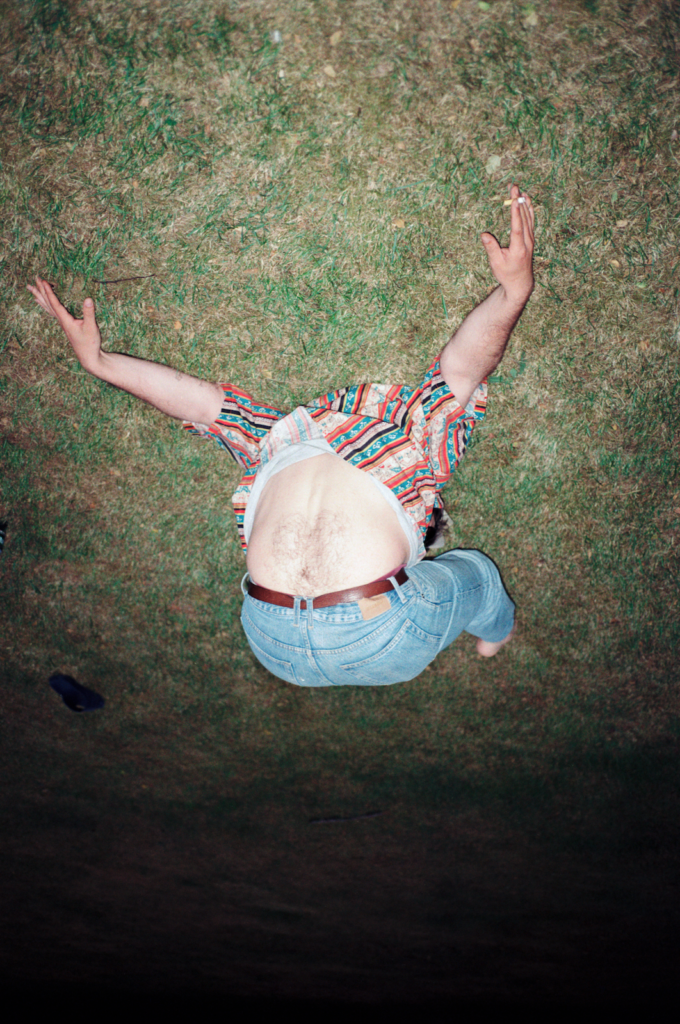
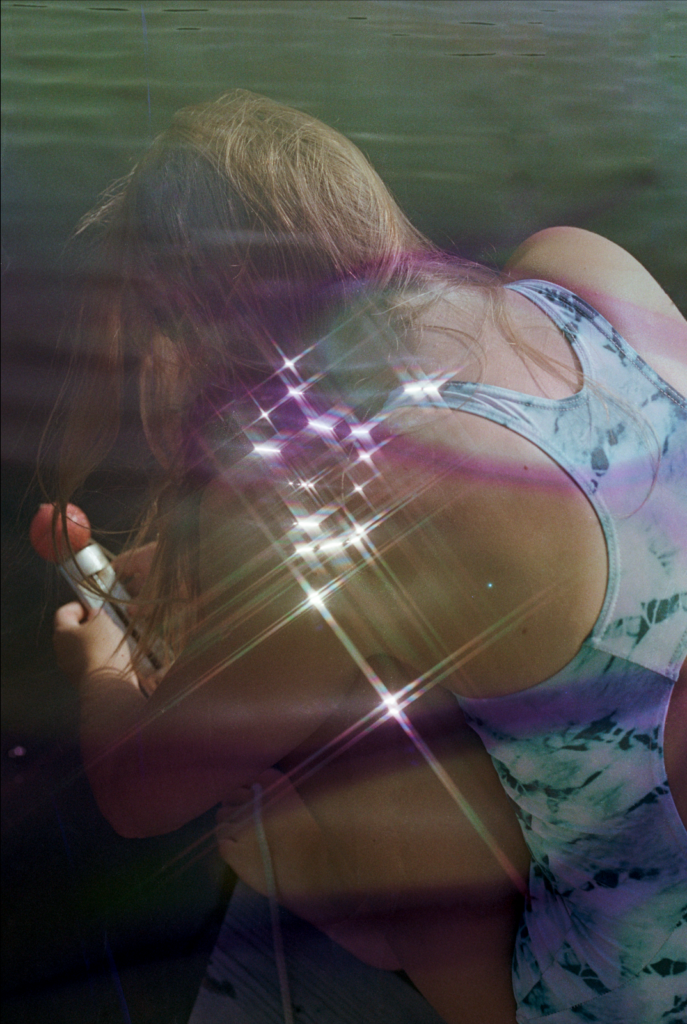
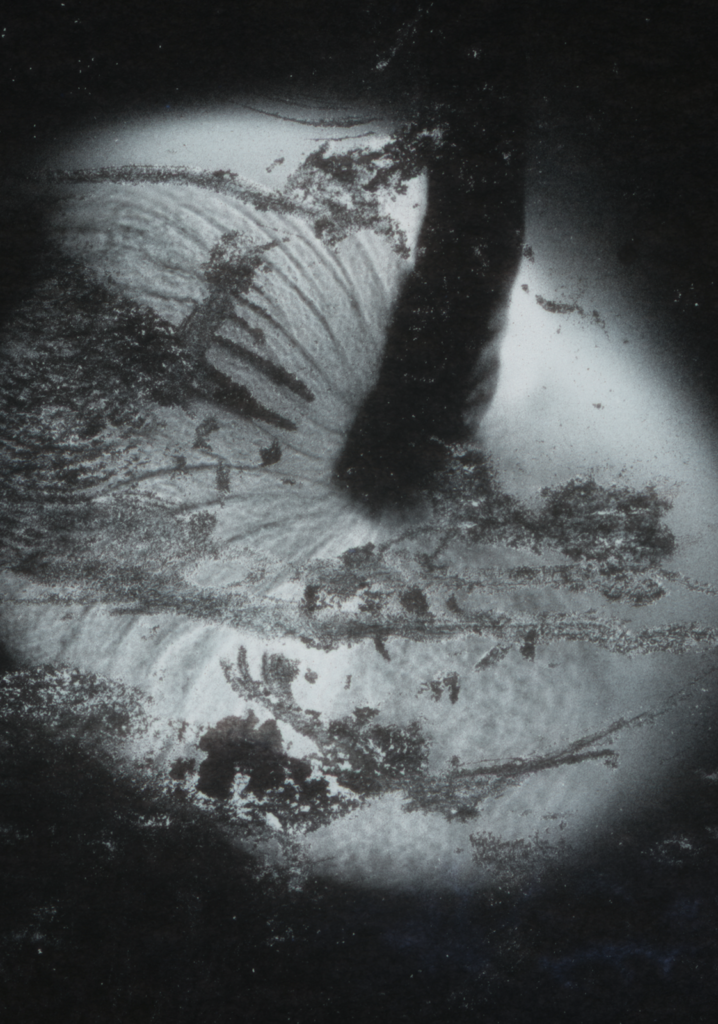
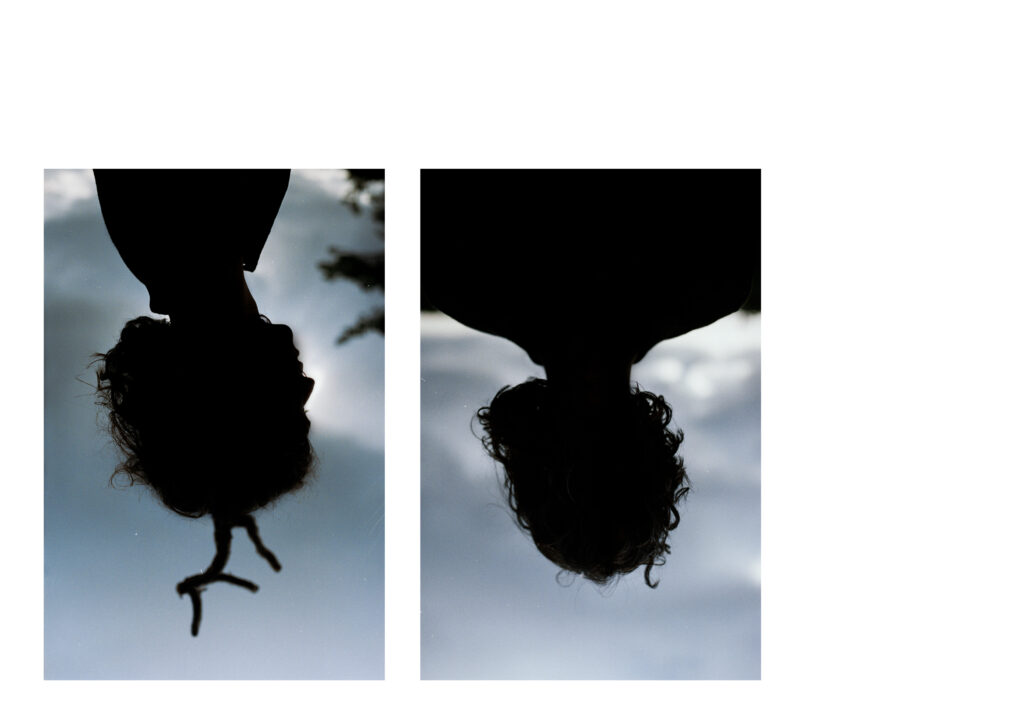
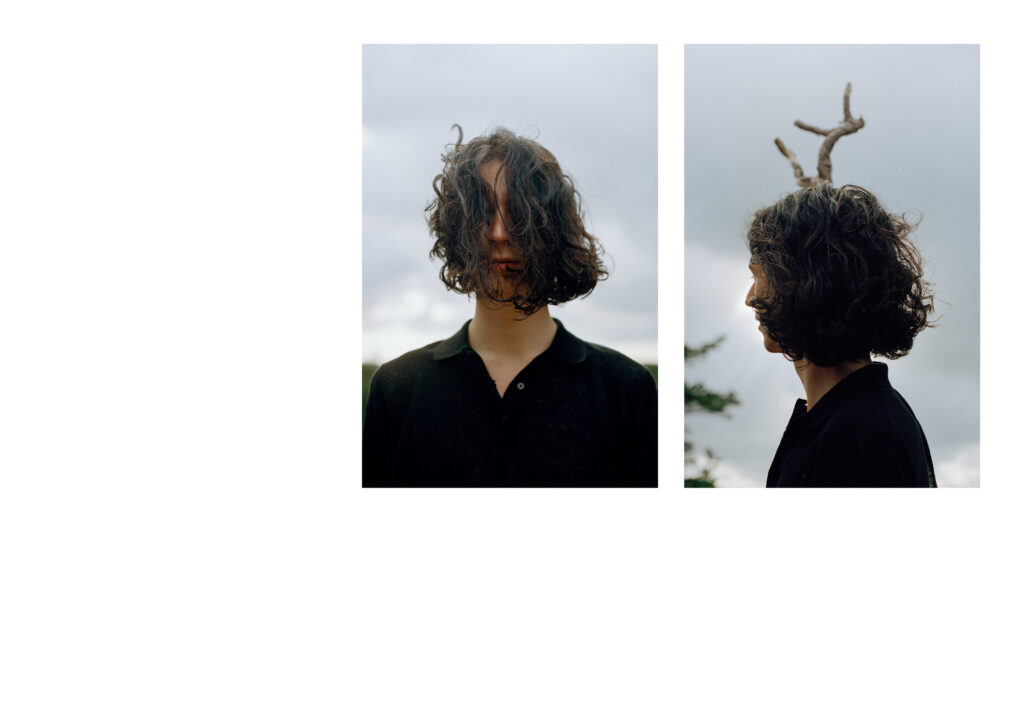
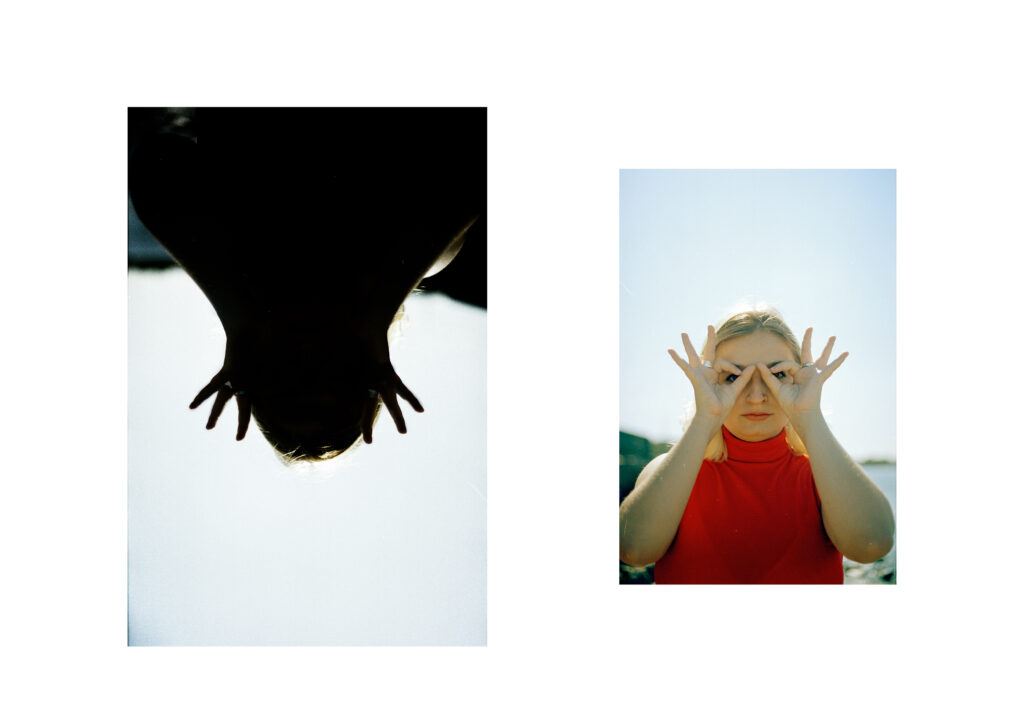
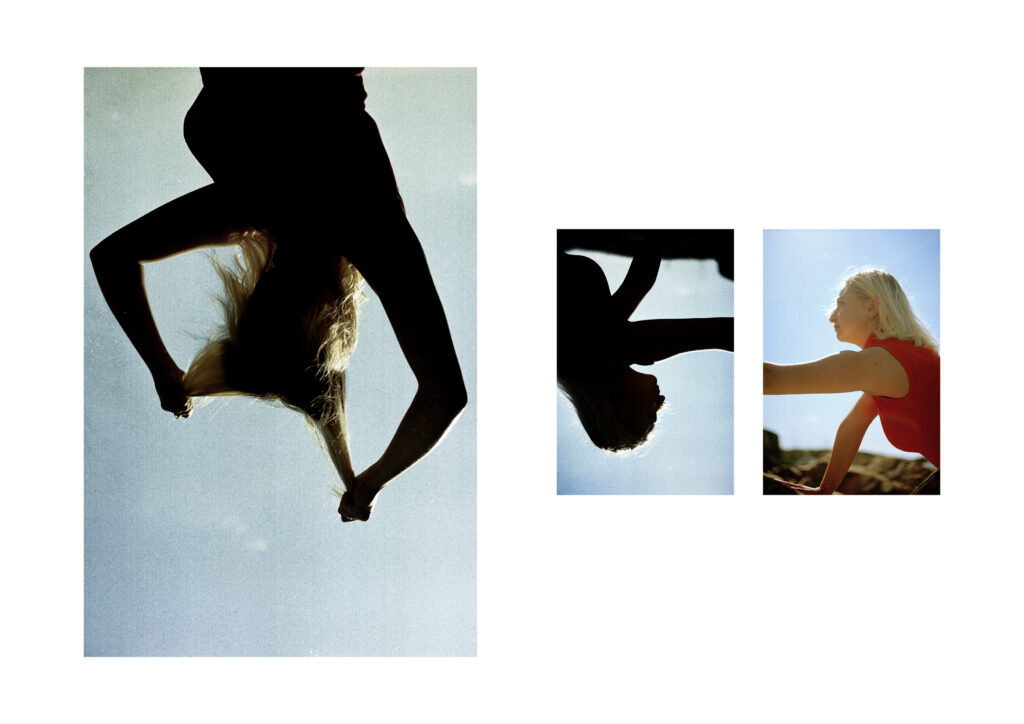
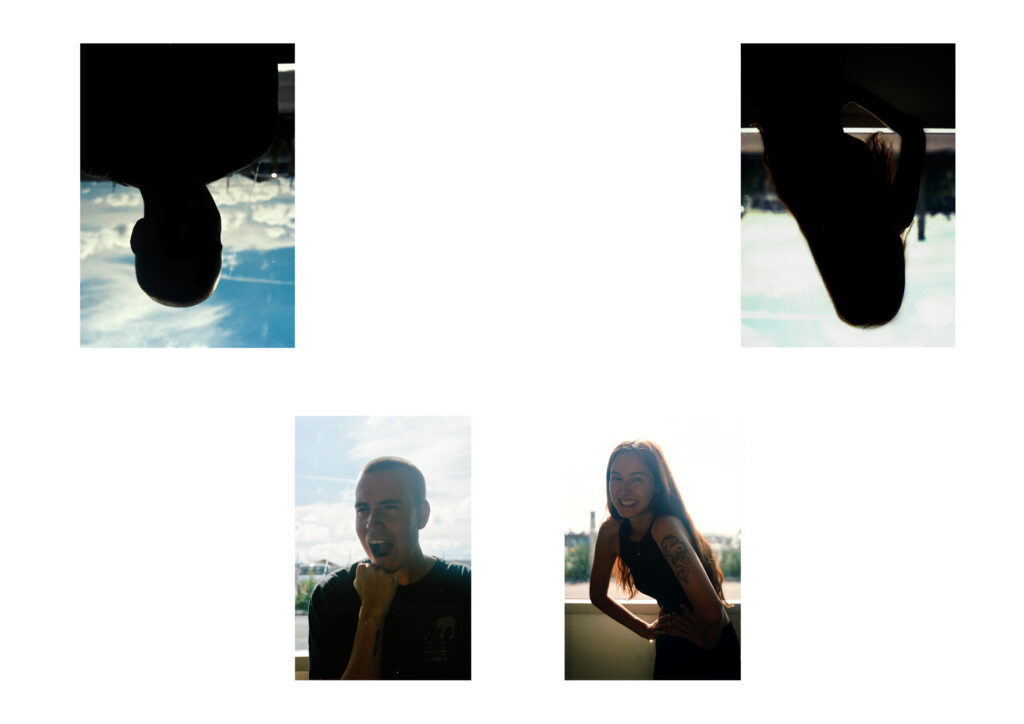
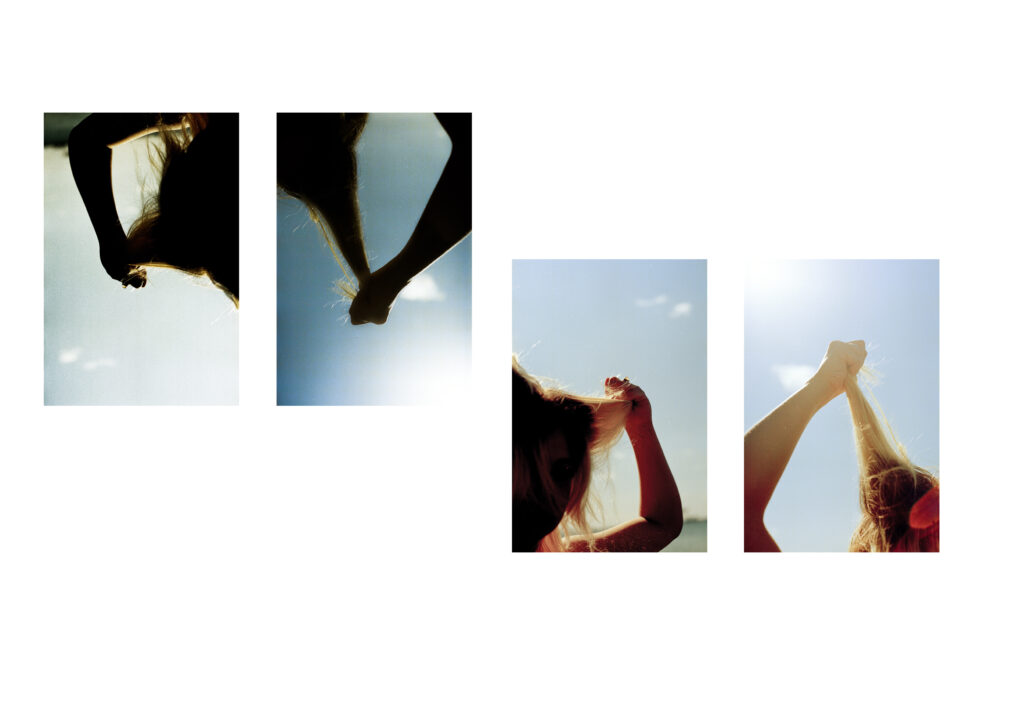
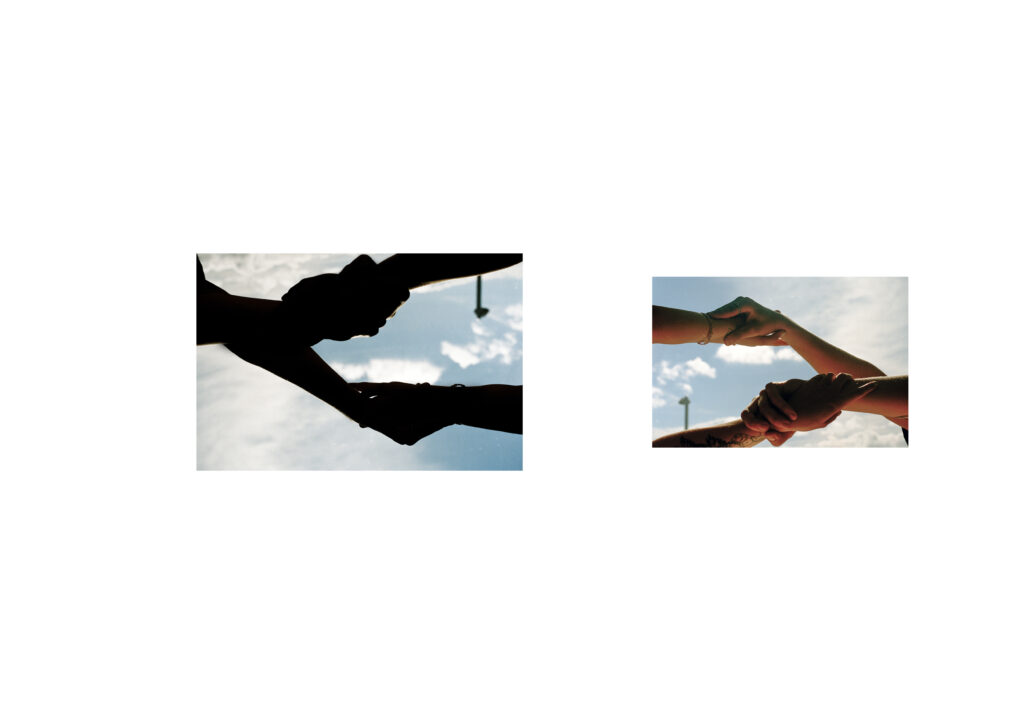
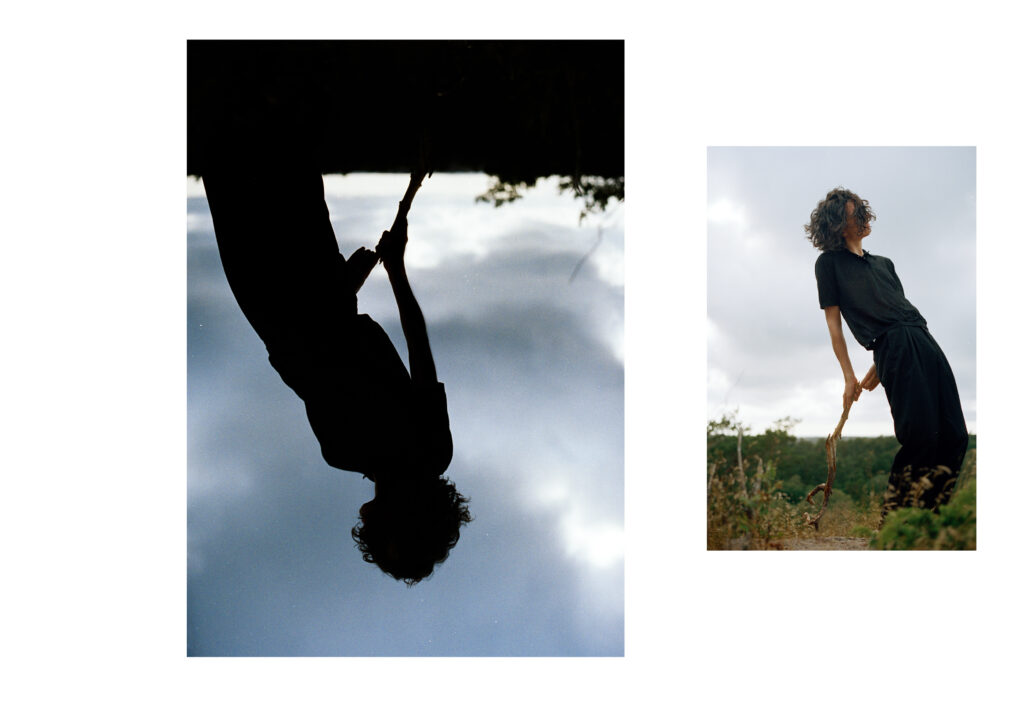
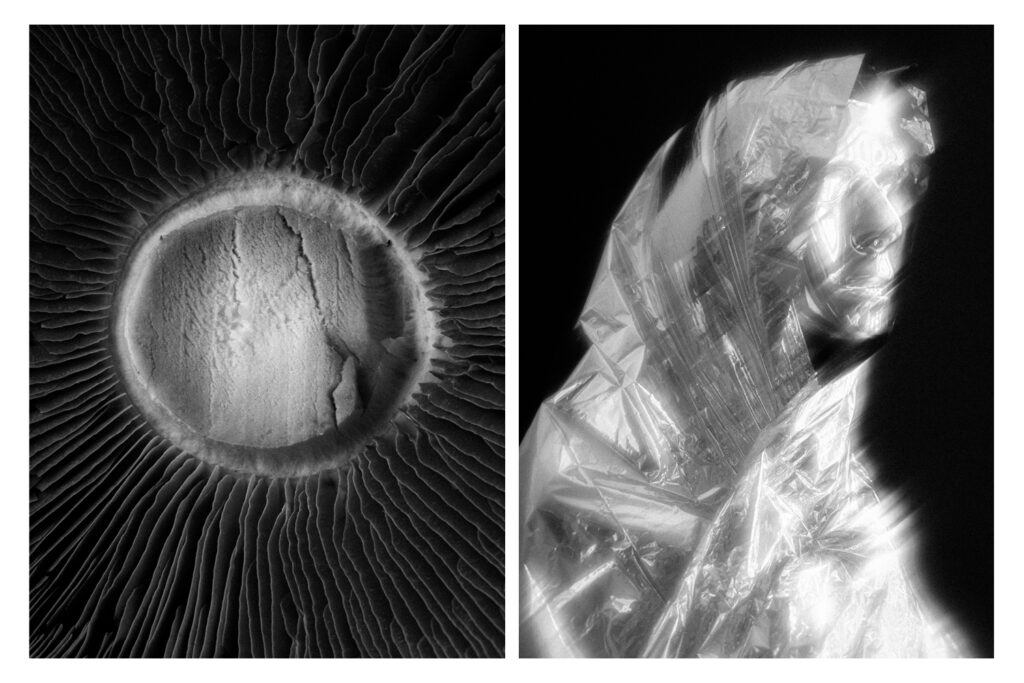
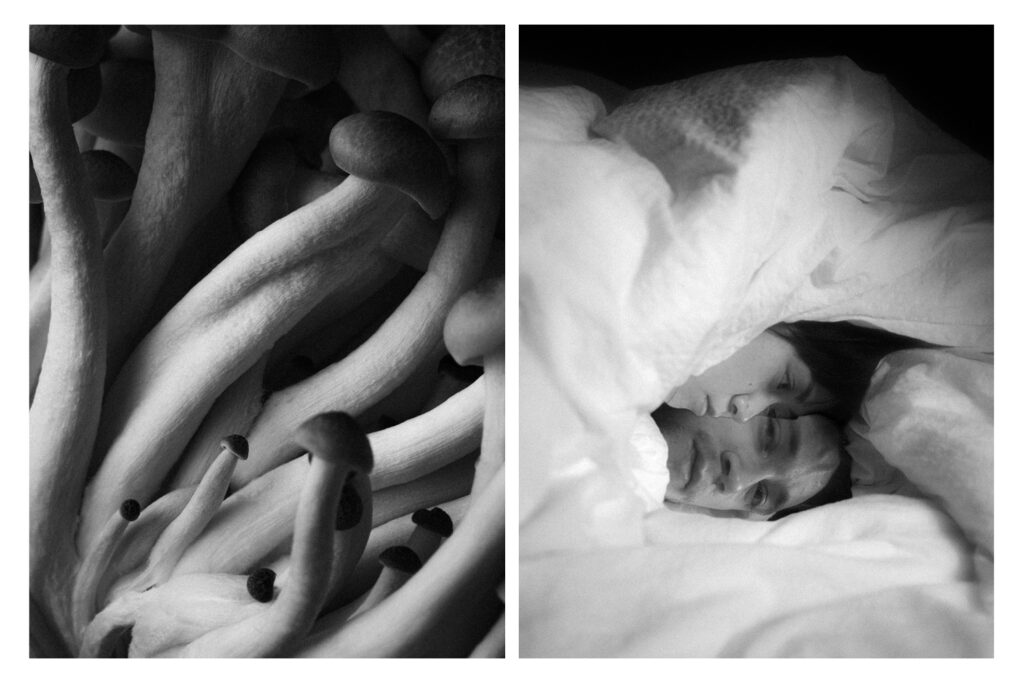
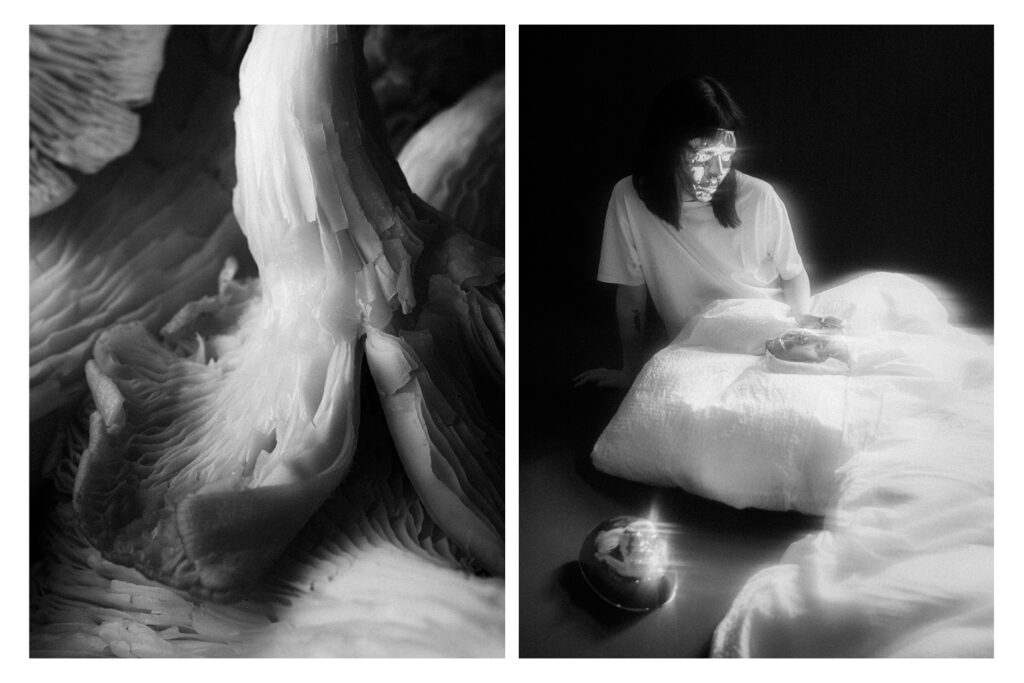
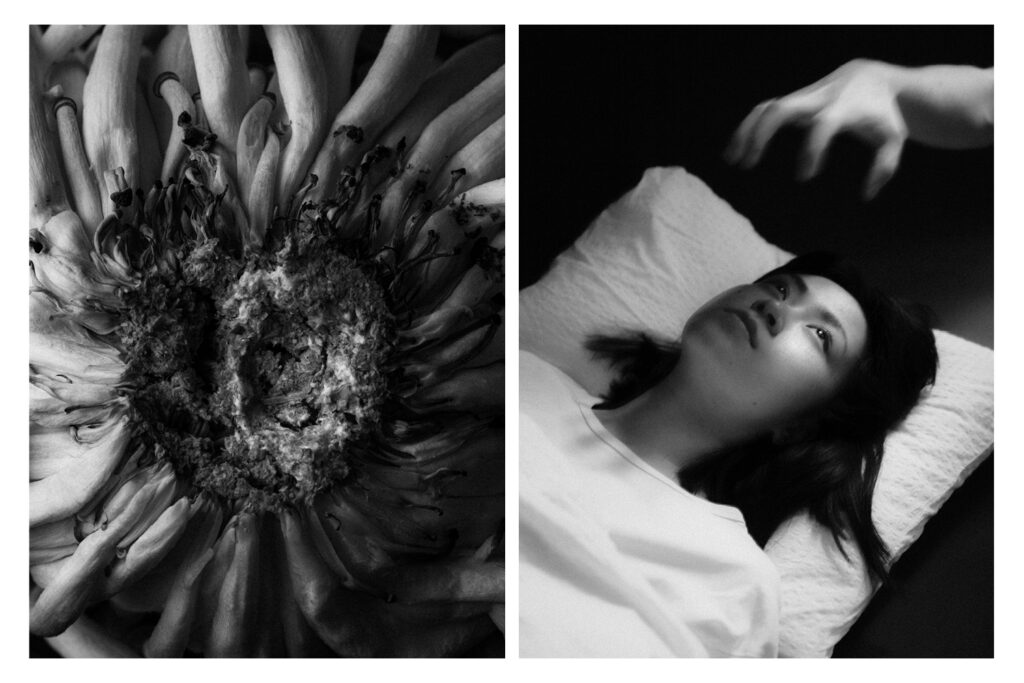
Photographic Project Work
During the summer of 2021 the students at the course ‘Photographic Project’ at HDK-Valand completed their photographic works. Through critique classes, discussion, and writing they responded to each other’s works and produced a varied array of photographic projects on a many different subject areas. You can read their artist statement and see their projects below. For more information on our courses please
click the link.
***
Ner och igenom
Clio Pavlidis Andersson
Jag har alltid funnit inspiration i mörker och skräck. Ner och igenom föds ur önskan av att skapa skräckfilmens obehag i stillbild. Obehaget uppenbarar sig i det obskyra och ovetande, men vad väcker en sådan känsla hos människor? I projektet står denna känsla i fokus, jag undersöker vad jag som person finner obehagligt och skrämmande.
Betraktaren får följa en desperat flykt ner i källaren där huvudkaraktären interagerar med något okänt. I analogt fotografi låter jag mjuka former till följd av lång slutartid ge rörelse i bilden samtidigt som rörelseoskärpan bidrar till det obskyra.
Utan att nyttja filmens medel vill jag skapa obehag i fotografi. Filmens redigering besitter förmågan att styra hur länge betraktaren tillåts exponeras för varje bild. En stillbild kan tas del av i obestämd tid. Stämning är en viktig faktor för att bygga upp känslor av rädsla hos människor, men hur byggs en sådan upp i fotografi? Filmen använder verktyg som är viktiga för visuellt berättande. Bland dessa verktyg finner en ljudet som påverkar stämningen med ett annat sinne än det visuella. Med en vilja att ge bildserien en förstärkt stämning ackompanjeras den med ljud. Detta då ljud har en förmåga att framstå på ett mer abstrakt vis än bilder. Jag har dessutom valt att använda ljud som kan framkalla viss misofoni hos människor. Betraktaren uppmanas att lyssna på tillhörande ljudfil i hörlurar när denne tar del av serien.





***
Dominans
Maja Bergström-Svahn
Jag återkommer ofta till frågor om natur, ekologi, ekosystem, rättvisa, klimatfrågor och djurrättsfrågor i mitt skapande. Jag har ett akademiskt och praktiskt intresse av ämnet humanekologi där ekosofin tar stor plats. Att reflektera över vår kollektiva och min indiviiduella plats på jorden. Till en början låg mitt intresse i att försöka förstå världen i stort. Men nu har det utvecklats mer till att jag försöker förstå min egen plats i världen. Det kan handla om fundringar kring var jag bor, hur jag lever eller vad jag konsumerar. Jag börjar ofta med att försöka förstå en lokal plats genom regelbunda och återkommande promenader.
Jag arbetar inom flera olika medium, där digitalt fotografi är ett av dem. Genom foto känner jag att jag har ett stort handlingsutrymme i mitt visuella uttryck. Jag kan vara berättande, detaljerad och specifik samtidigt som jag kan välja att abstrahera och manipulera, beroende på vad som bäst passar min idé.
Jag arbetar ofta långsamt med processer över långa tidsperioder. Jag behöver tid att känna in den miljö eller fråga jag vill förstå. Jag behöver samla mina intryck och förstå varför ett projekt har fångat mitt intresse. Ofta återkommer jag till en plats flera gånger under ett år och tar bilder ur flera olika perspektiv. Jag bearbetar bilderna i efterhand och ”skissar” f ram ett stort antal varianter på samma motiv innan jag påbörjar min urvalsprocess.
Projektet Dominans började med att jag undersökte delar av skogen där jag bor, med fokus på de spår av jakt som är vanligt förekommande och som jag upplevde störde mina naturupplevelser i området. Jag var arg på alla dessa skräpiga spår och upprörd över att de approprierade känslan av att jag kunde röra mig fritt i skogen.
Under sommaren 2021 har jag promenerat i skogen där jag bor ( i mitten av Skåne) fler gånger än jag kan räkna och under dessa promenader har jag hunnit fundera mycket. Främst har tankarna vandrat kring antropocen, kring människans dominans på jorden, kring vad en skog är, kring hur vi behandlar det vilda djurlivet och min egen roll i det hela. Jag är också en som brukar naturen, jag konsumerar den för egen vinning och jag skapar en egen moral kring den som jag förhåller mig till.
Mina funderingar har utmynnat i en serie bilder som alla berör frågan kring dominans i relation till människa och natur. Mot en bakgrund av den domisticerade gräsmattan visas en samling av objekt, minnen och observationer kring vad det kan innebära att dominera naturen och försöka förstå sin egen plats i ekosystemet.
Dominans är ett work in progress och kommer att byggas på i takt med att jag gör fler observationer. Det är ett samlande och tänkande som pågår över tid.








***
FISHEYE
Anna Filippa Bünemann
How does photography captures reality?
This is the main question I am focussing on. And how does photography creates our way of seeing?
The title fisheye refers on one hand to the lens called fisheye, were you can can capture a wide perspective with a focus on the middle. As well as I am playing with the idea of looking through another perspective, through the eyes of a fish.
Through this project and the help of analyzing „framing bodies“ I figured out which photographic tools I will take use of. To start with different perspectives and sections

that a human eye can barely frame. For example looking from deep down, along peoples legs, holding the camera close to the feet. Or with the help of a zoom objective to frame a specific section, of what I think is interesting.
Composition

was important to me. How to lead a persons view through the image. What could be achieved with the help of leading lines through black and white contrasts, or light and shadow.
Another tool I took use of to questioning reality is a long exposure time

. While seeing a movement in a picture you understand you merge the time. It is more than just one moment.
To merge two images into one I double exposed

the film. What can effect associations: How does those two images come together, have they something to do with each other? You can bring things together that otherwise wouldn’t be seen in this constellation.
To use a color filter



makes the image feel unreal. Something is dipped in one color, it almost feels like a dream, more far away, you are looking through something. I tried different methods to create this effect. In those examples I converted negative and positive in different ways.
What is reality?
***
Dekonstruktion av en trädgård
Fanni Olin Dahl
I projektet har jag utgått från postkolonial teori vilket tar sig uttryck i en självreflekterande och ifrågasättande process. Min intention har varit att förena ett strukturellt perspektiv med självreflektion och jag har därför tagit avstamp i min mormor och morfars landställes trädgård där jag spenderade mina somrar som barn. Jag har använt mig av fotografi, antotyper som är en alternativ process där växtsaft används för att framkalla fotografier samt samlat växter och fröer. Parallellt med de visuella och materiella aspekterna av projektet har jag arbetat med texter som konkret återknyter till den kritiska utgångspunkten.
Genom användandet av text i kombination med fotografi, alternativa processer och föremål vill jag ge en mångfacetterad bild som uttrycker trädgårdens komplexitet. I presentationen konkurrerar fotografierna om uppmärksamheten med de materiella och textbaserade aspekterna av projektet. Fröbomberna ställs framför fotografierna medan textens innehåll tar udden av fotografiernas romantiska undertoner. Antotypernas kladdiga process, diffusa uttryck som försvinner med tiden står i kontrast mot fotografiets skärpa och funktion. Syftet med presentationen är att förmedla en kontext som sträcker sig förbi det fotografiska mediets kategoriserande och objektifierande funktion som är relaterat till fotografiets koloniala arv. Samtidigt finns det en dualitet i projektet där det personliga, kärleken till och oron för den egna trädgårdens framtid, lyser igenom. Går det att äga och ifrågasätta på samma gång? Fröbomberna kan å ena sidan ses som en uppmaning till motstånd och å andra sidan som en egoistisk handling som grundar sig i en vilja att bevara den egna trädgården.








***
The Forest
Viktor Hermansson
The idea of the Swedish forest as big and untouched has always fascinated me. The forest has always been wild and beautiful. It has been a place where we can find peace and rest as well as a place for reflection and recovery. It has also been a place where we are allowed to explore and learn new things about ourselves and the environment that surrounds us.

After a few years of photographing mostly forest and nature pictures I started thinking about what kind of image of the forest I created? I realized that I only went to the most beautiful places such as nature reserves or national parks to be able to capture the best image of nature that I could. All those places were protected against deforestation. I rarely visited the other parts of the forests that didn’t have any oficial protection against deforestation.

My main objective in this project is to make the unprotected forest and its deforestation process in Sweden visible. I want to photograph the parts of the forests that I see almost everyday but never photograph. The forests that are a part of an industry.

The forests that aren’t there anymore or the forest that one day will become a product to make money from. I would also like to return to the places that I photographed and take the same picture in five years to see how the landscape changes.

***
Fula fiskar* – Bad Guys
Jannike Holmberg
I want to know and to show what happens under the ocean surface.

I want to uncover that which we only see signs of. I see different types of signs all around me. Some are clearly visible, while others are invisible, covered up, revealed, false or true.

I’ve documented signs with my camera and what we see becomes real. Behind the photos there are other pictures, a different reality.

My goal is to capture people’s attention and to a certain degree entertain them although the message is serious. My ambition is to represent reality through fantasy, It is not the truth but the message is true.

We, are the bad guys. The ones who throw plastic bags in nature that blow out to sea and eventually end up on our beaches and rocks.

It’s about how plastic takes over the oceans. The plastic is broken down into tiny particles that never disappear. The fish eat plastic, mistaking it for jelly fish.

The ocean floor is plastic that gradually is taking over our oceans, a danger, a threat, a darkness. Even when the light is beaming through and the ocean looks like it is blue, fresh, and free of plastic, we can perceive that something diabolical is going on.
We look out over the water and it looks calm and peaceful, while under the surface there’s an on-going struggle that I want to visualise. It is a game of darkness and light.
It takes 600 years for a fishing line to brake down to microplastics, a plastic bottle 450 years and a plastic bag 10-20 years. Microplastics are less than five millimeters long.
*”Fula fiskar” is a Swedish idiomatic expression for ”Bad Guys”
***
A Trip Across Europe 2021
Robin Iborn

When I first saw the news about the Corona virus on television, it didn’t strike me as anything bigger than the previous or next news. But when I saw Swedish national television show people being locked in their homes in Wuhan, or dragged out by men in emergency contamination suits, I began to realise that this is not our everyday virus. This is serious.
The virus came to Europe, to Sweden, and so did the lockdown. The year 2020 / 2021 has been more or less a tragedy for all of us. Collectively on this planet, we’ve all wished for the same thing, for it to end, for us to be able to do what is crucial for our survival, to socialize and to be close with one another.

So when I got the job of delivering a car to Marbella, Spain in july 2021, driving it from Sweden through Europe with one of my closest friends, well, let’s just say that I wasn’t very hard to convince.
Now that a big part of the world is vaccinated, and Europe has opened up again, at least a little bit. It was a pleasure to be able to travel, to meet new people and to share the joy of being free once again.

We started driving from Sweden and drove to Amsterdam where we lost a few credit cards, passports and some spirit. Some days later we touched down in a beautiful orange afternoon sunny Paris, perfectly timed to see all the Parisians settling in the streets to celebrate Bastille, France national day.

We picked up a dear friend of ours living in Juarés, along with some beers and drove up to Sacre Ceour to view the city from above. Then found our way down the hill and cruised Av. des Champs-Élysées and while playing Non, Je ne regrette rien from the car speakers while cruising past thousands of people in central Paris.

We drove to Bordeaux, Biarritz, San Sebastian, Bilbao, Madrid and finally touched down Marbella to deliver the car.

These photographs show how important it is for me to explore, to be curious and to meet people from all over the world for the first time since the Covid-19 pandemic started.

With my camera I’m able to work hard to describe how colorful life is, and how life can evolve if one is allowed to move and socialize (again).

***
In the Borderlands
Carmen Picado Jackson
This project is a collaboration between me as head of concept and the landscape photographer Viktor Hermansson, who contributes with his photographic skills.
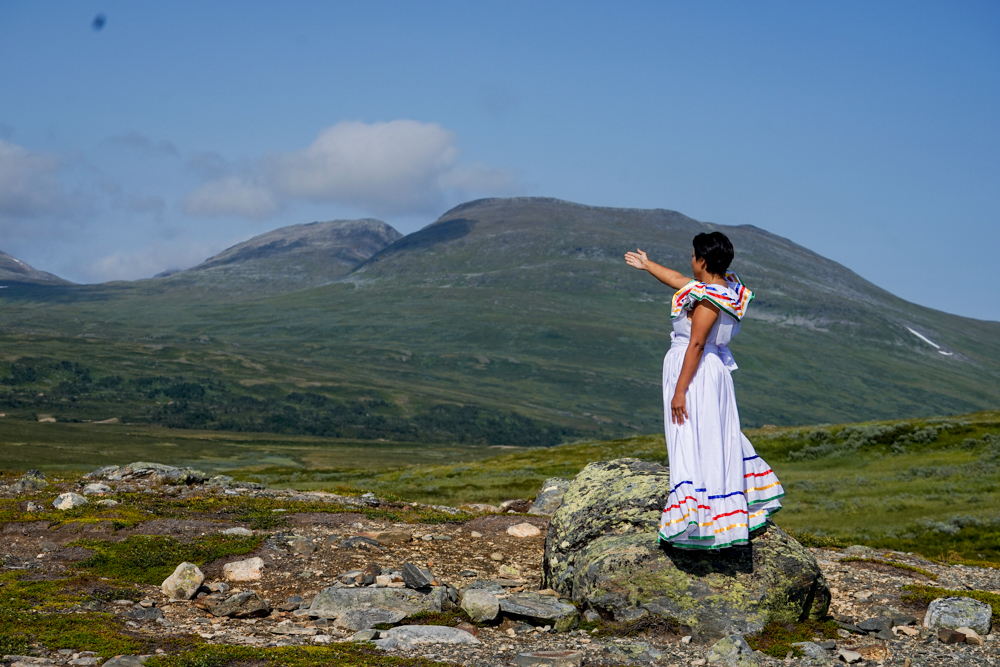
This is our first collab and our first public project where portrait and landscape photography is mixed. Whilst there’s a distinct direction in this picture, there’s also a lot of symbolism and meta symbolism to be studied. As a facilitator I wanted to lead the audience into the concept of The Borderlands, but I didn’t manage to keep all levels of symbolism together, there is plenty of work to do before it’s ready to be printed and exhibited.
I am an interdisciplinary artist who has been studying classic art with painting as a major subject. In 2015 I joined a queer feministic art performance group which I made several artistic collaborations with , my work also includes programming combined with light installations, recent years my work has been focused on writing decolonial intersectional feministic texts.
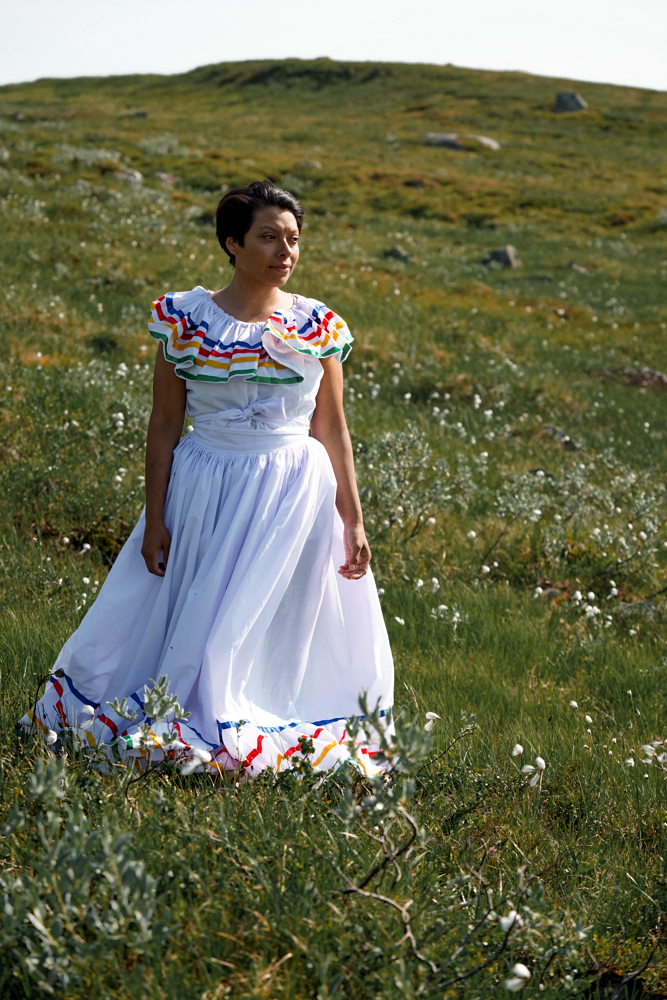 As the curator of this project, when looking at the outcome, there’s an apparent connection between my practise as a performance artist and how I visualize my concept through the lens of a camera.
As the curator of this project, when looking at the outcome, there’s an apparent connection between my practise as a performance artist and how I visualize my concept through the lens of a camera.
In the Borderlands is my interpretation and an attempt to visualize the anthropological concept of “third culture kid”. The notion of “in betweenness” has a similar connotative meaning. 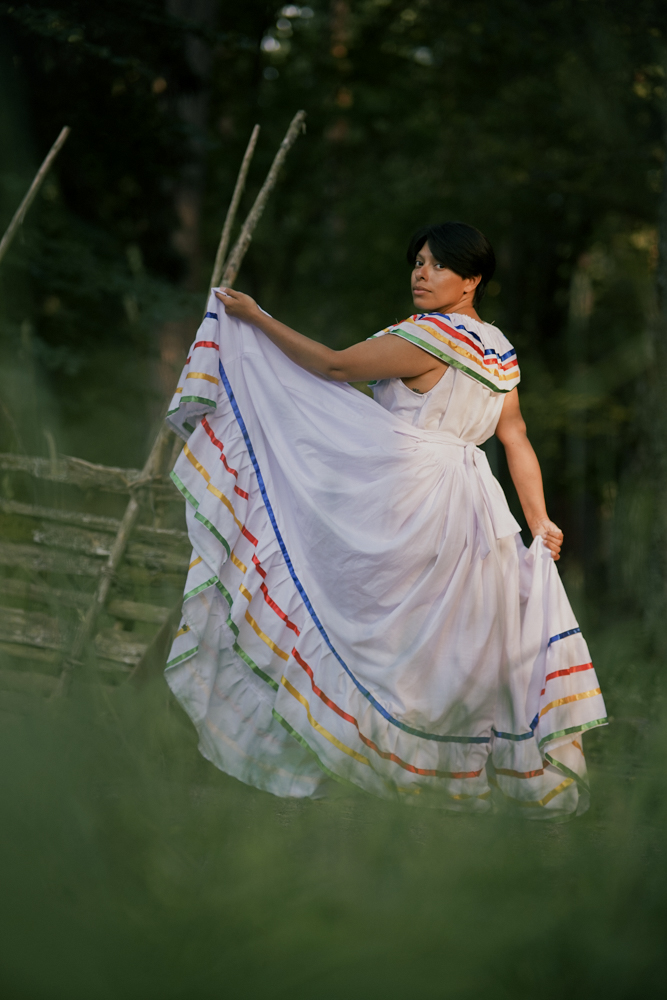 By centering a folkloric dress and letting it have a dialogue with the landscape and the surroundings, I’ve attempted to make the third culture visible.
By centering a folkloric dress and letting it have a dialogue with the landscape and the surroundings, I’ve attempted to make the third culture visible. 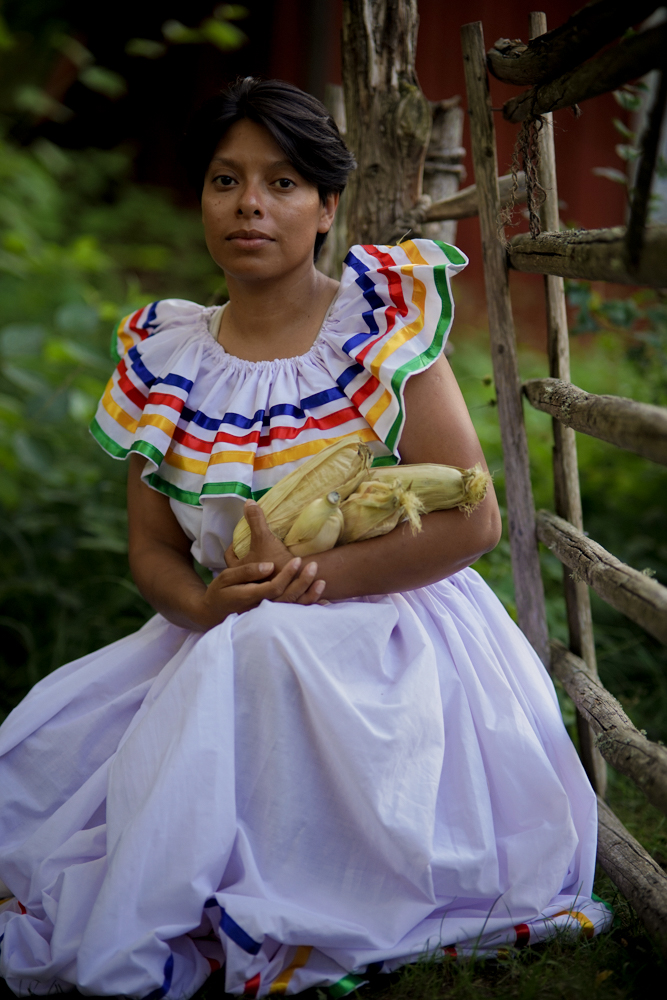 By mixing different objects with different cultural properties there’s an attempt to narrate the properties of a space.
By mixing different objects with different cultural properties there’s an attempt to narrate the properties of a space.
In the Borderlands is an invitation to recognition for those who grew up as third culture kids or who did and does navigate the space of “in betweeness”. 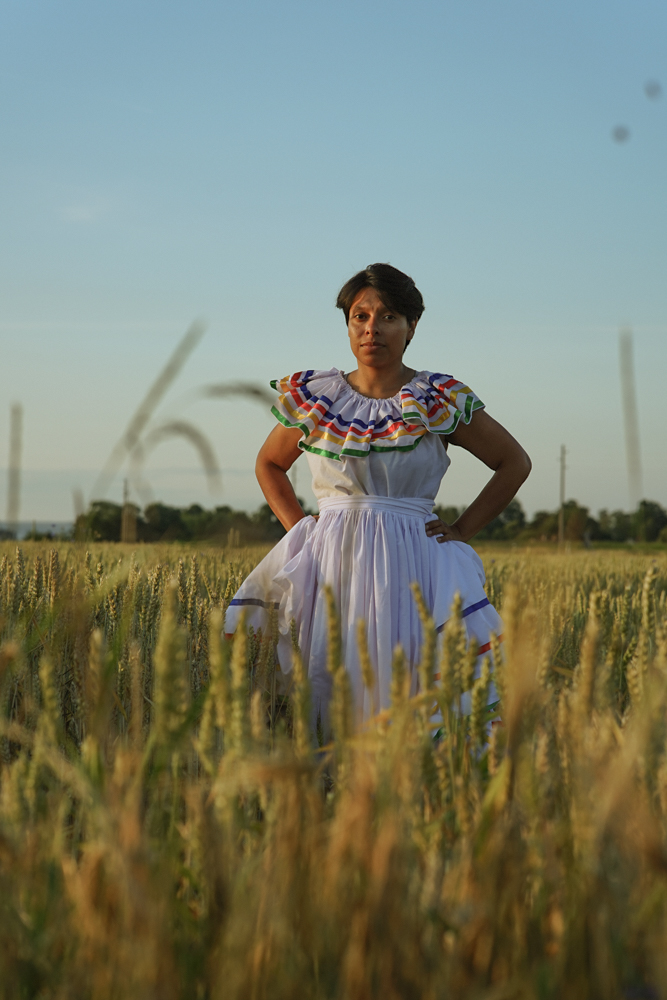 It’s a space where I navigate, in the intersection of a central american and nordic cultural legacy.
It’s a space where I navigate, in the intersection of a central american and nordic cultural legacy.
It’s also an invitation to acquaint oneself with this experience, if this is of unknown ground. 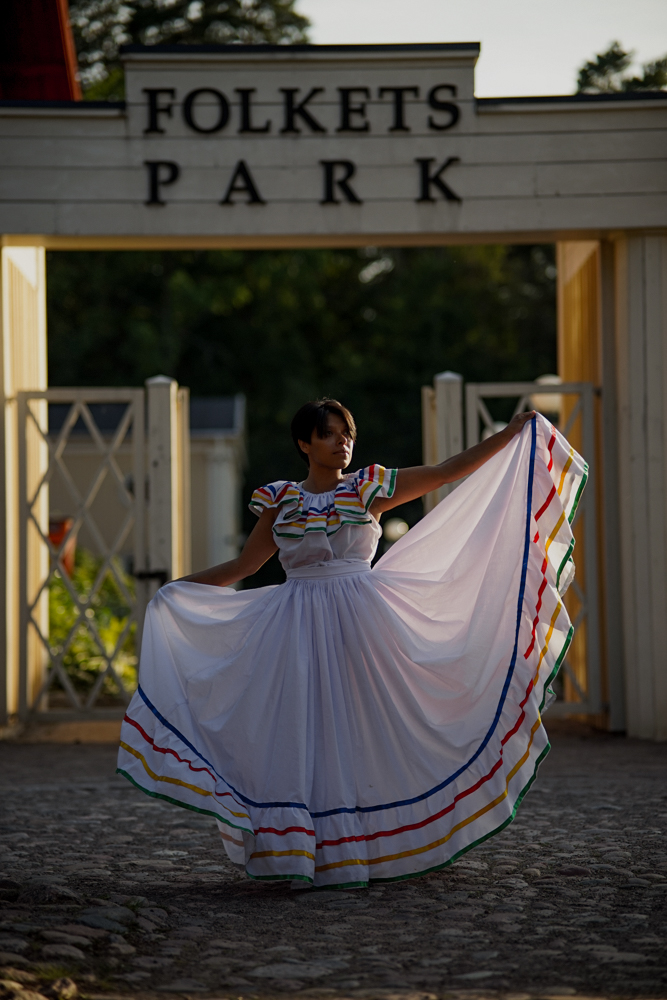
In the Borderlands wants to include, explore and expand perspectives.
Images No title 1 – 6 was captured by Viktor Hermansson, 2021, and edited by Carmen Picado Jackson, 2021.
***
Faero 2021
David Karcenti
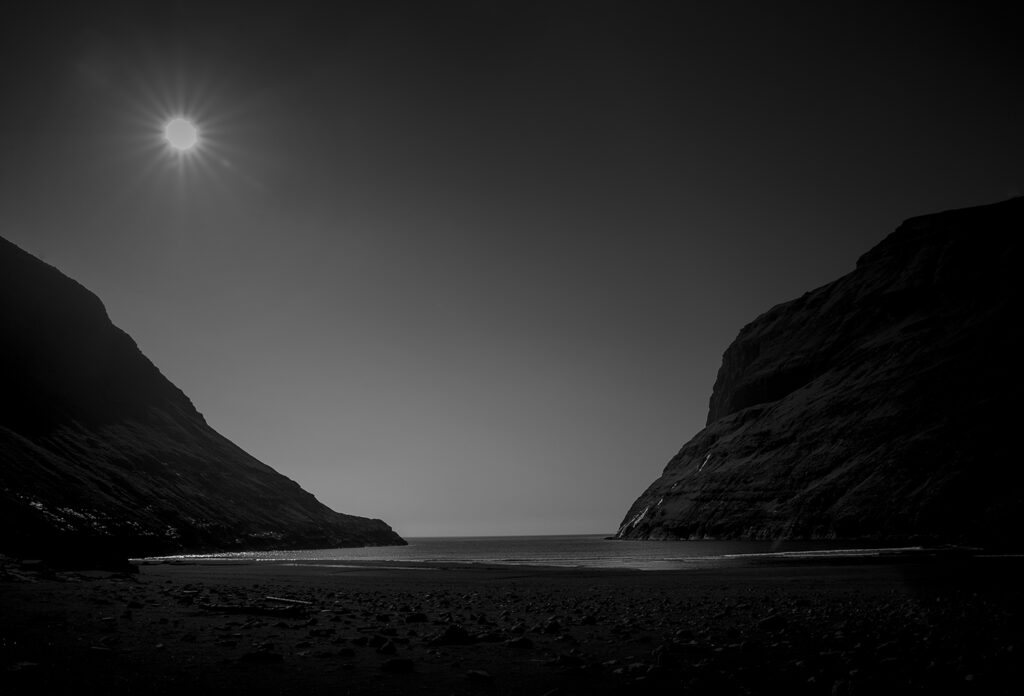
Att betrakta och skapa fotografiska bilder är en viktig del i utforskandet av min mentala värld, min fysiska omvärld och min historia. Bilden av min familjs bakgrund blev i ung ålder uppriven och upplöst på grund av bortgång, krig och flykt i mina föräldrars liv. Fotografi har alltid varit och är fortfarande en väg för att hitta tillbaka till deras liv och skapa en bild av en verklighet som jag inte visste fanns. En parallell väg i skapandet av min verklighet är även måleriet, ett medium som låter mig skildra ett inre process i abstrakt form. I den fotografiska processen uppstår en starkare förståelse av identitet i relation till miljöer, rum, landskap och texturer som jag avbildar och betraktar. Skärpan som fotografiet erbjuder med urvalsprocessen av motiv och fotografiska element, ger mig en drivkraft som lever parallellt med måleriets abstrakta form.

Innan jag reste till Färöarna så var det för mig ett okänt landskap. Färöarna består av 18 öar som man kan tillgå från slingriga branta vägar genom tunnelsystem under vatten, helikopter, bilfärja och motorbåt. Färöarnas placering långt ut i Atlanten med sina nakna klipplandskap skapar en stark känsla av isolation från omvärlden. Skog och träd lyser med sin frånvaro. Landskapet har endast små skiftningar i vegetationen, med massiva förändringar i dess konturer och topografi. Naturens element som moln och vågor är i ständig rörelse, varje timme, minut och sekund. Här skapas en längtan efter att leta i sökaren och trycka av vid rätt tidpunkt både mentalt och fysiskt. Jag kämpar med att bemästra ett ständigt föränderligt ljus i en skiftande miljö. Man kan inte beräkna landskapets förlopp eller väderlek, men man kan studera dess rörelse, känna, lyssna och ta in vart det är på väg och vart det kommer ifrån. Jag kan inte påverka naturens riktning men jag kan följa den. I den fotografiska naturbilden uppstår rörelsen och drivkraften före och efter det tagna fotografiet. Jag tar en bild som representerar ett utsnitt av något som är obeständigt. Det utsnittet är inte för mig en skildring av det geografiska landskapet. Utan ett segment av mitt inre tillstånd när jag betraktar och fokuserar på landskapet.
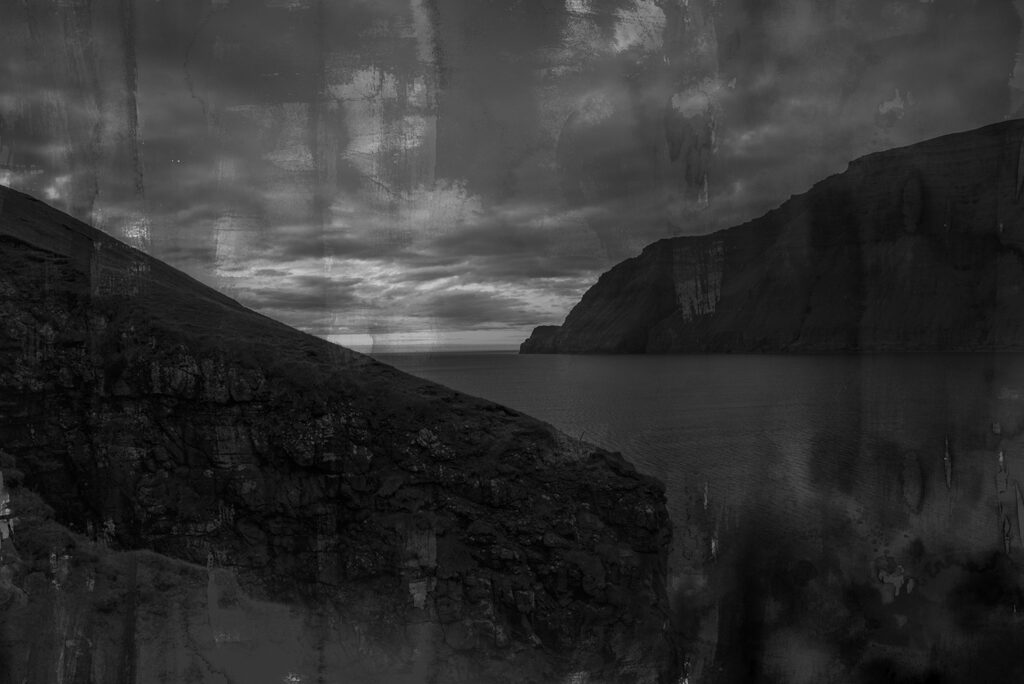
Med tiden uppstår en vilja att gå vidare och utforska vad som sker när den fotografiska landskapsbilden möter den abstrakta måleriska bilden. En ny form av rörelse träder in, en form av internt samtal uppstår mellan mig som fotografen och mig som målaren. Måleriets medium i dess abstrakta form är för mig en motsats till den fotografiska processen. I måleriet möter texturerna och materialen varandra och jag som målare flyttar, styr och driver fram färgen på ytan på en fixerad plats. Vid valda tidpunkter stannar jag upp i ett moment och låter tiden i stillhet frysa bilden. Färgen reagerar med ytan. Ytan och färgen skapar en fysiskt definierad stillbild först när jag och mediet väljer att sluta interagera med varandra.
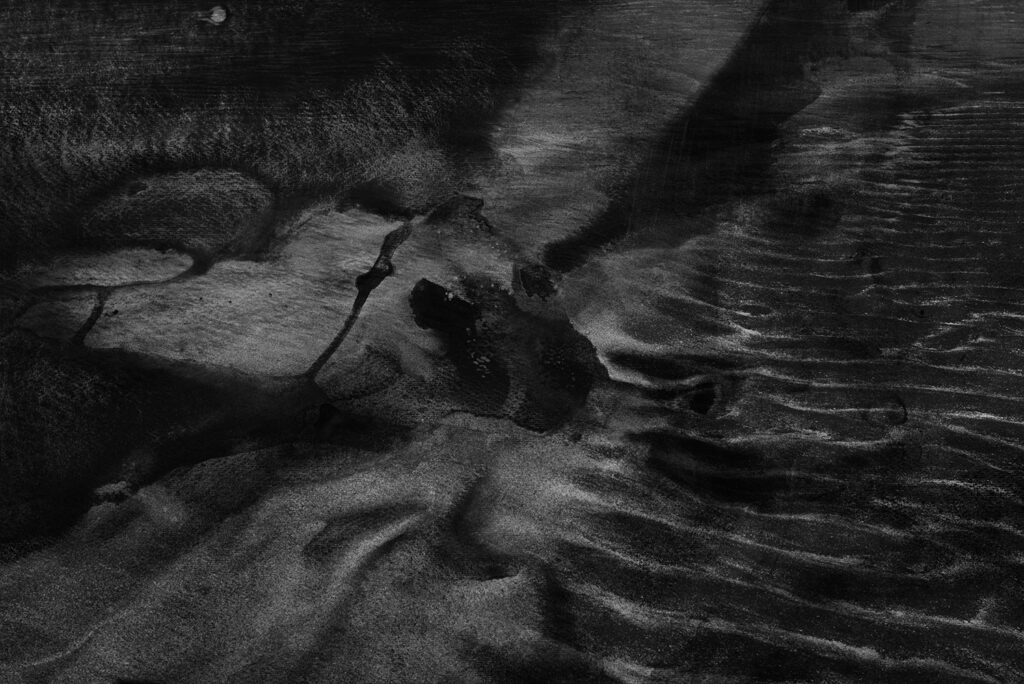
Projektet FAERO’s visuella uttryck och kompositioner är dramatiska, på gränsen till överdrivna. Vi ser stormiga moln som möter vindstilla dalar. Mötet mellan fotografiet och måleriet sker i en monokrom värld där bilderna leder oss till en förstärkt tidlöshet. Dom är exponerade och skapade i ett visuellt tillstånd där dagen möter natten och natten möter dagen. I mötet mellan fotografi och abstrakt måleri uppstår ett tredje lager med spår från den fotokemiska naturen.
Ett lager som leder tankarna till kemigrammet och det kameralösa fotografiet.
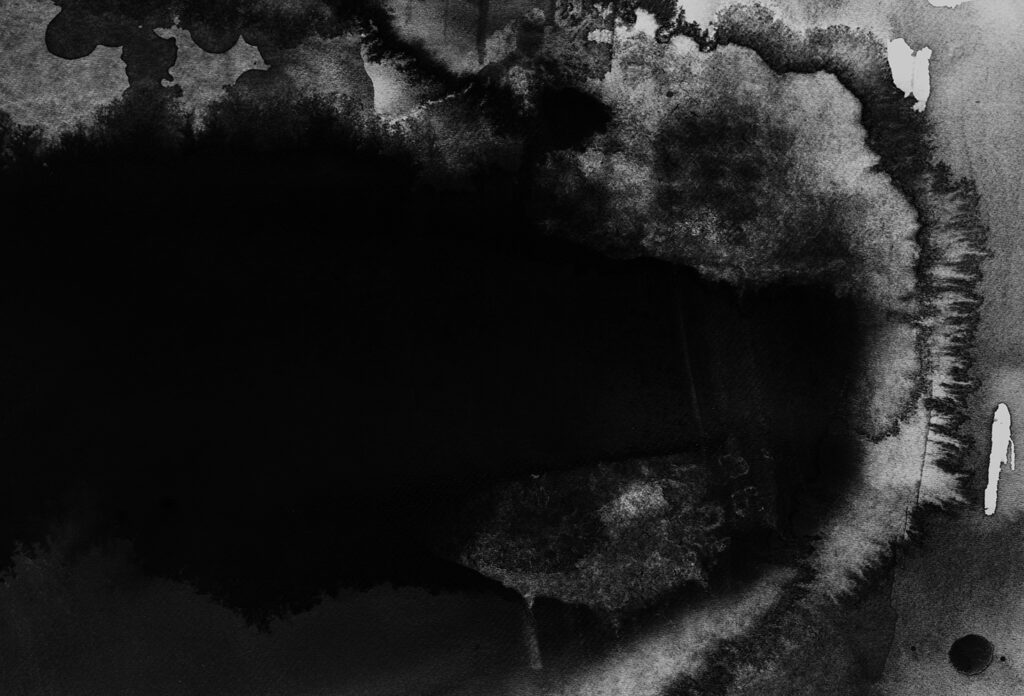
Jag betraktade fotografierna från Färöarna och lät dom stanna kvar i mitt undermedvetna under en längre tid. När jag senare skapade abstrakta målningar så letade jag efter en process där stämningen och strukturerna i det fotografiska landskapet möter dynamiken och texturerna i målningarna. Jag letade efter samband och mötespunkter. Jag arbetade med skala och riktningar och sedan fotograferade jag av målningen.
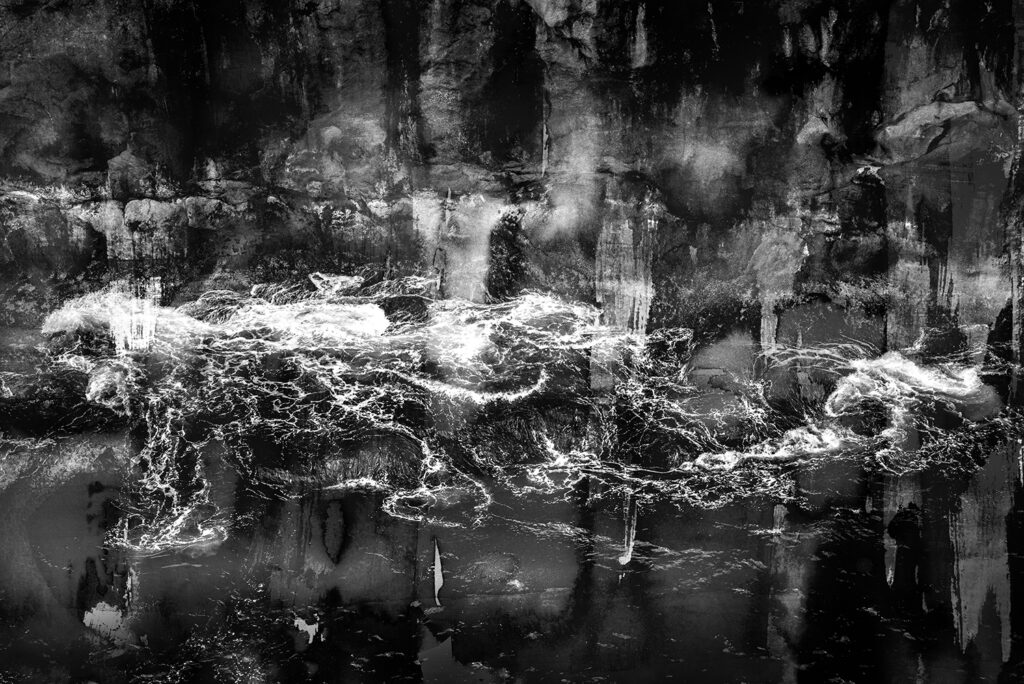
Fotografierna och målningarna möts nu i digital form för att skrivas ut i tryckt form. Dom blir integrerade och fysiskt ställda ovanpå varandra. Dom blir även placerade i en dialog bredvid varandra. Bilderna skaver, bråkar och stör parallellt som dom landar i samförstånd och mild harmoni. En samverkan och dynamik som påminner om vågornas brutala inverkan på de vulkaniska klippornas form. Eller molnets påverkan av hur ljuset spricker upp och strålar in på havets ytskikt.

Mitt förhållningssätt till Färöarna förändras drastiskt när jag betraktar mötet mellan dessa måleriska verk och dom fotografiska bilderna. Jag hamnar i ett nytt tillstånd. Det uppstår en känsla av att fotografierna inte längre är en del av min initiala subjektiva upplevelse. Jag betraktar inte längre en definierad plats eller ett dokumenterande av ett fysiskt landskap. Jag letar istället efter att förstå vart jag befinner mig i spektrumet mellan verklighet och uppdiktad landskapsfiktion. Jag vet inte längre var jag är när betraktar bilderna och drivs in i ett mentalt gränsland. Det är i detta upplösta tillstånd som jag kommer närmare mitt möte med FAERO.
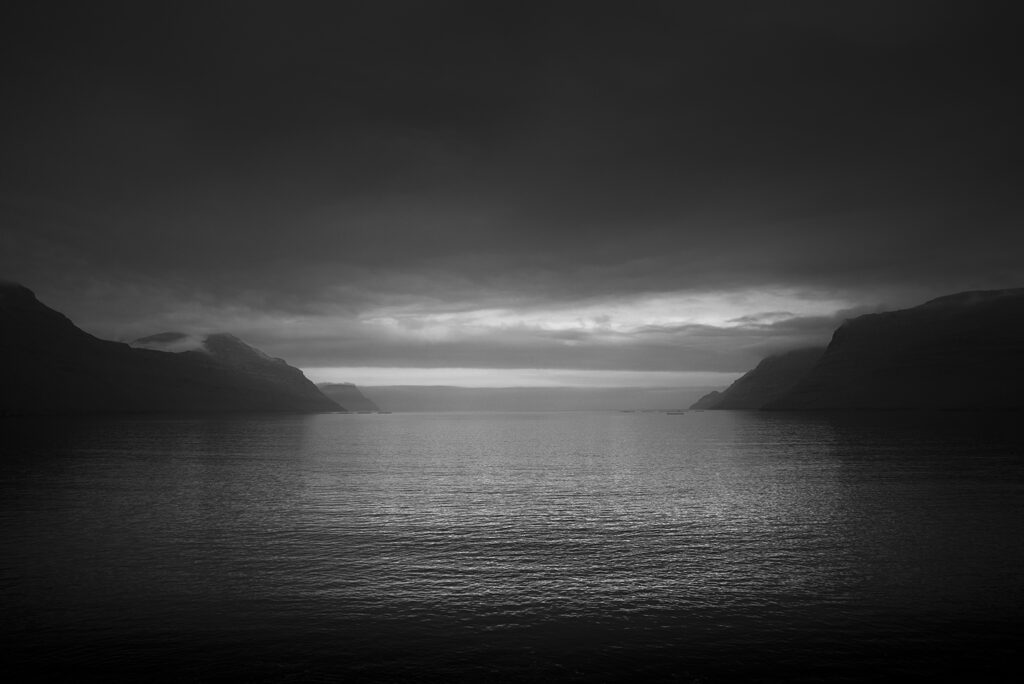
FAERO i sitt upprivna tillstånd, där betraktaren träder in och skapar sina egna inre landskap.
***
We never lost control
Hilda Lidén
This project started with the thought “what if I could capture two sides of me in the same photo”. I was tired of myself. Wanted to scream at me. And so I did. By using long shutter speeds I managed to act as the two sides of me and capture them in the same picture.
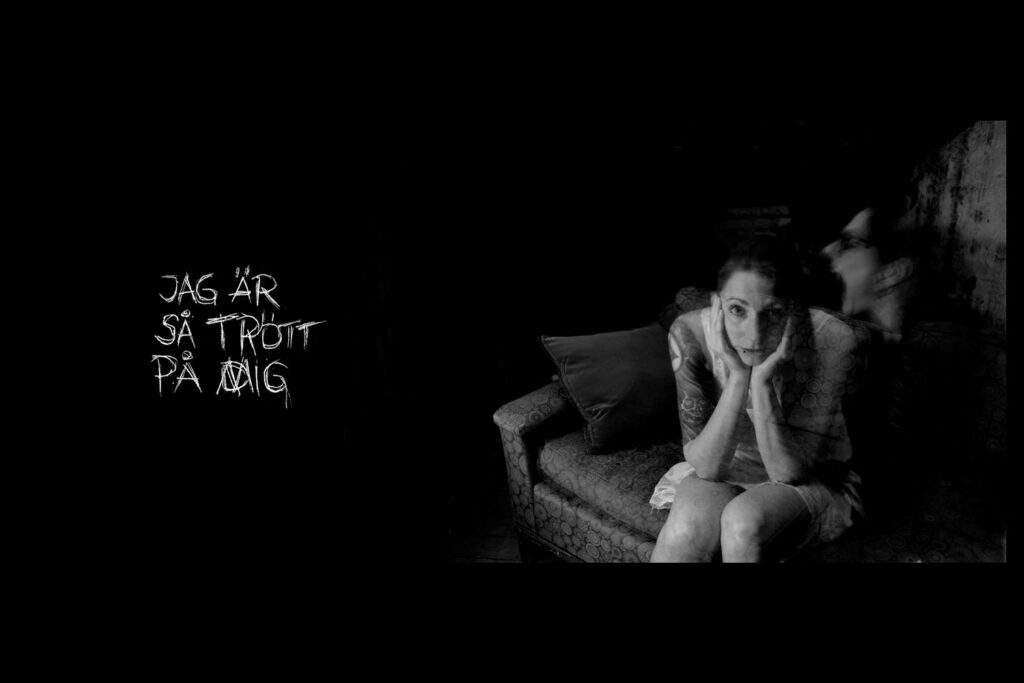
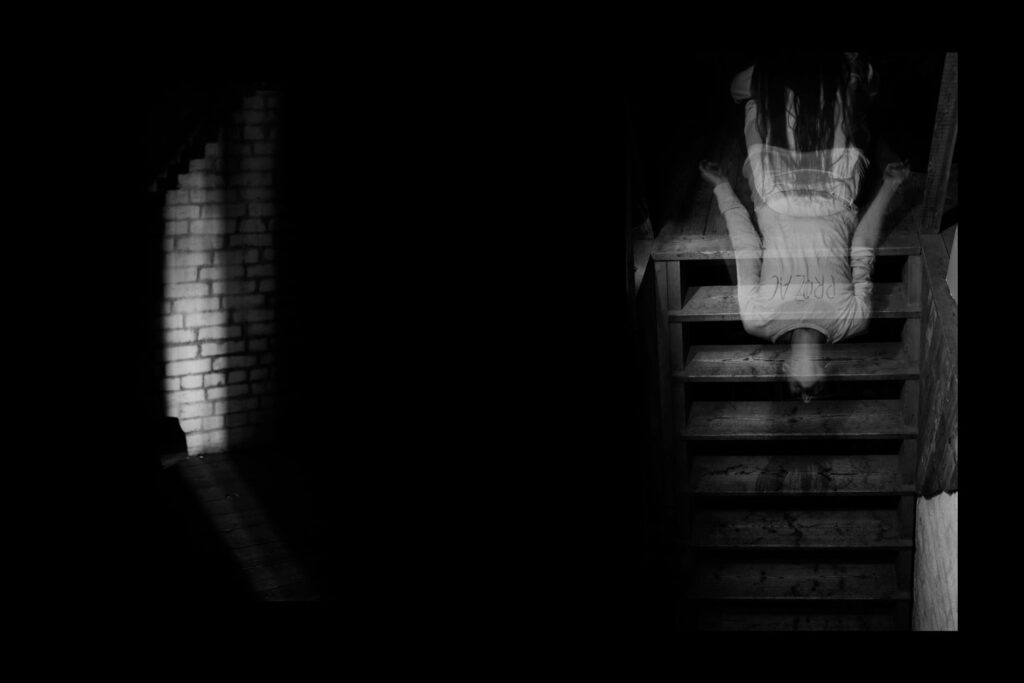
I quite liked the result and kept thinking about it. Could I use this for something more? To tell stories? To show sides of myself fighting? To portray different characters? Would I have time to change clothes? Could I act? I’m not even fond of taking pictures of myself.
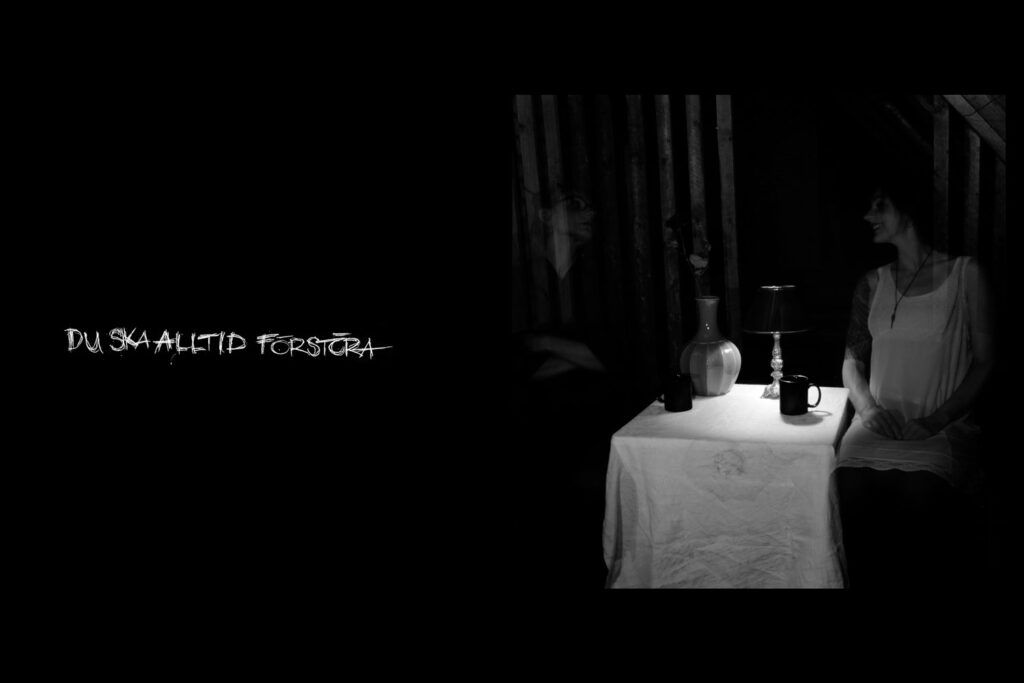
Enter the two characters Imz and Rez. Inspiration for their names come from the mathematical field of complex numbers, representing one imaginary and one real part. Which one is real and which one is not? Which one is me and which one is my subconsciousness? Maybe both. Maybe none. I do not know and I do not care. It is not important.
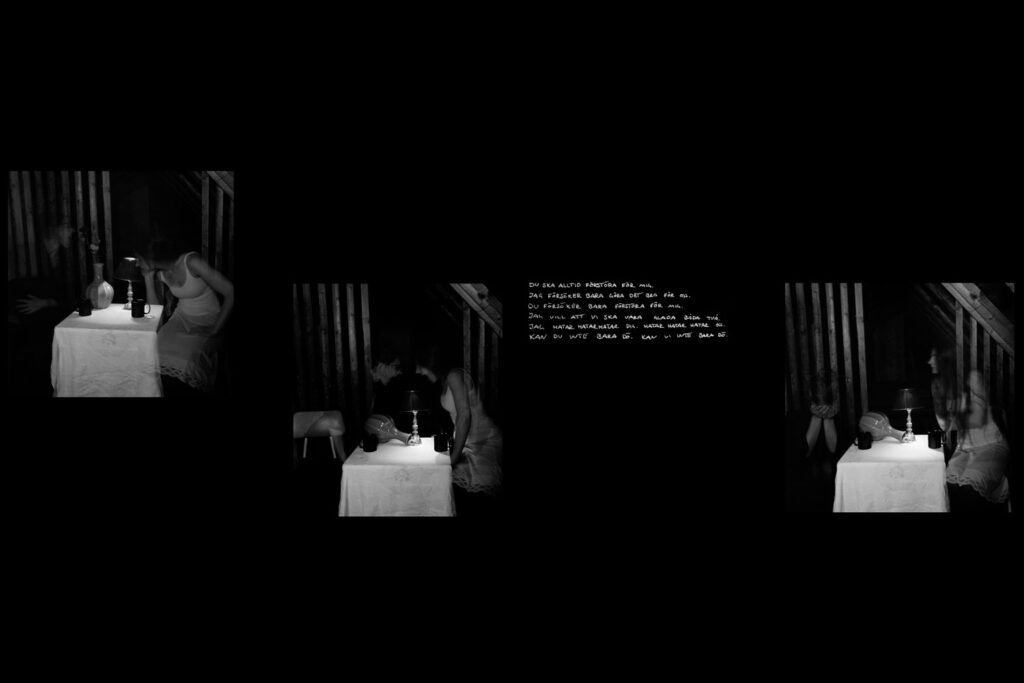
I wanted a way to show different voices and contradictory thoughts. Maybe even use words that distort the photos. I took inspiration from the graphical novel “The Crows”[1] where they use doodles and post-its to create a space between proper text and picture. And the idea of making a graphic novel using photos was born.
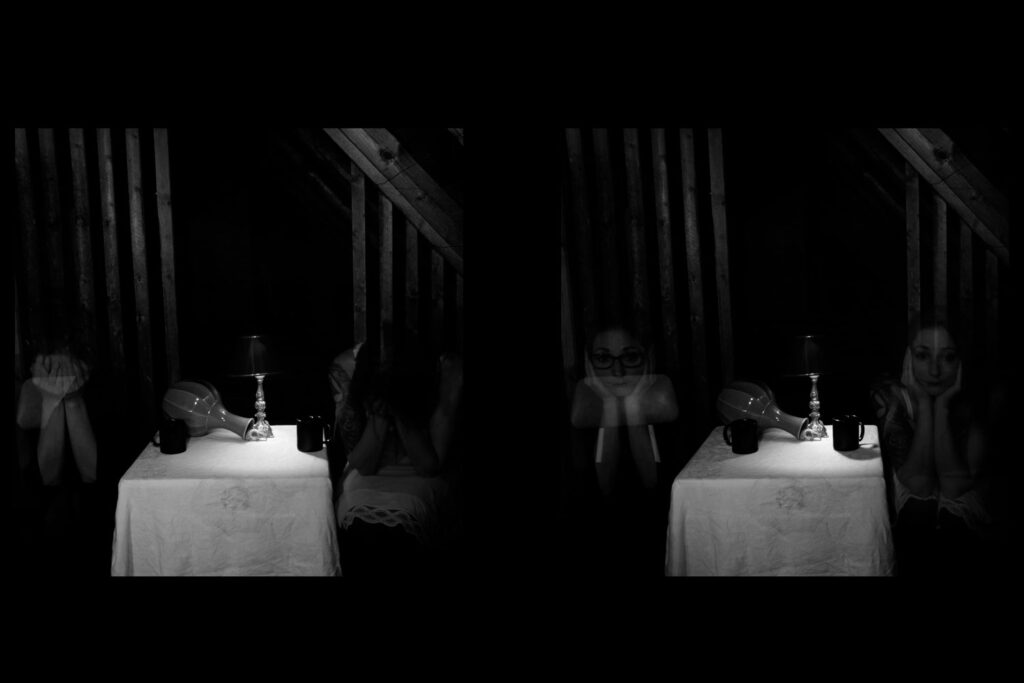
I am still working on the techniques. Both regarding using long shutter speeds, and how and when to use text. I am also still working on what to tell in a longer story.
This is a part of the first draft and a fantastic journey.
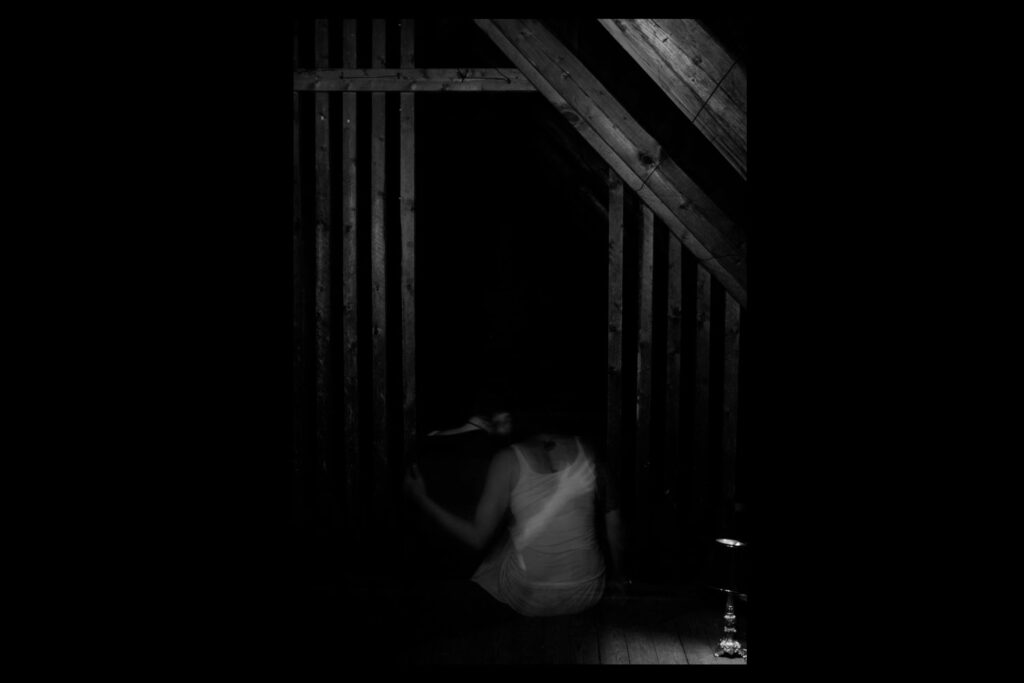
[1] Anders Fager and Peter Bergting, Kråkorna, Natur & Kultur, Stockholm, 2020
***
Cheap Vacation
J Lindkvist
I wanted to evolve as a photographer. I wanted to evolve my photo’s on Google Maps,. User interaction is poor there. I therfor decided to have a Cheap Vacation, ”Hemester” theme, inspired by Folkhälsomyndighetens pandemic restrictions of summer 2020. Only travelling could cost money, but all places should have to be reached within 2 hours by car, bus, train or tran. Wanted to create a almost free vacation. I invite those that cannot travel to places. Google Maps is the right publishing plattform. I retouch images.
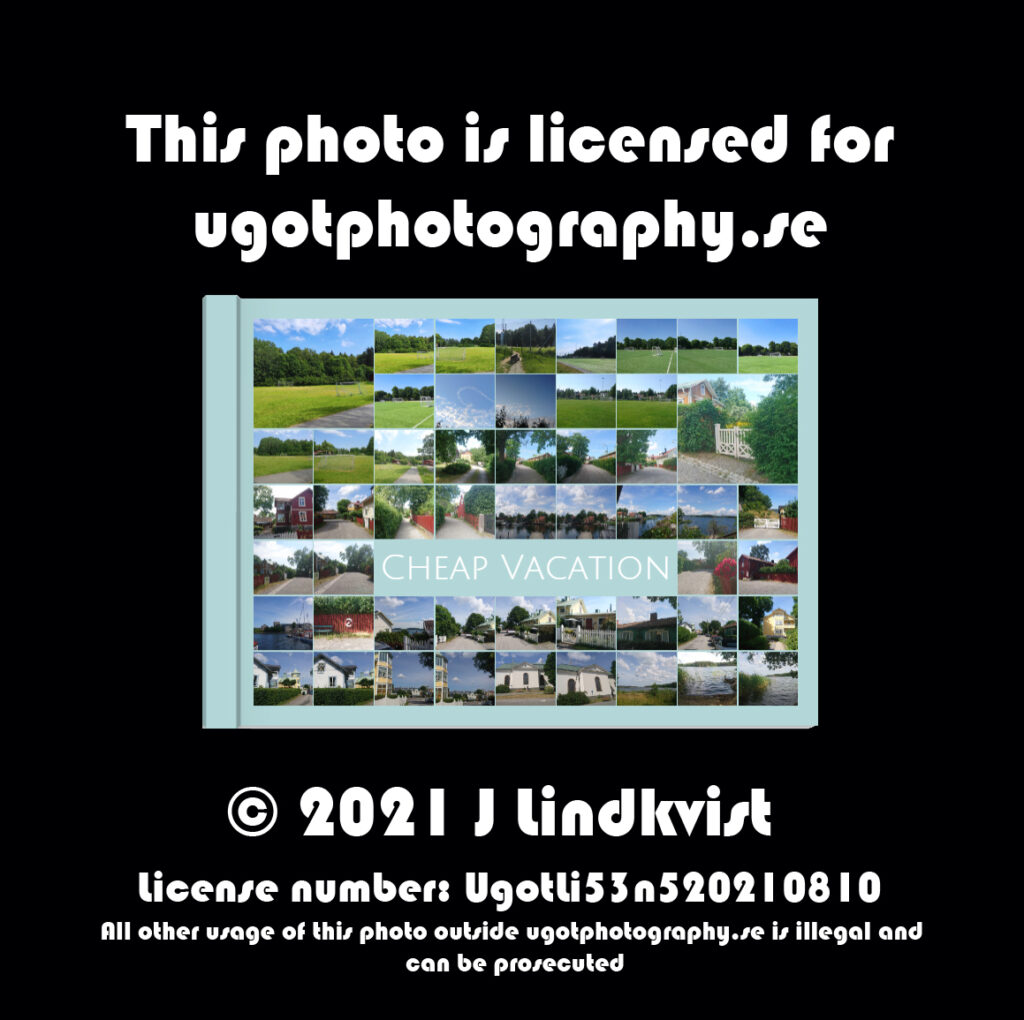
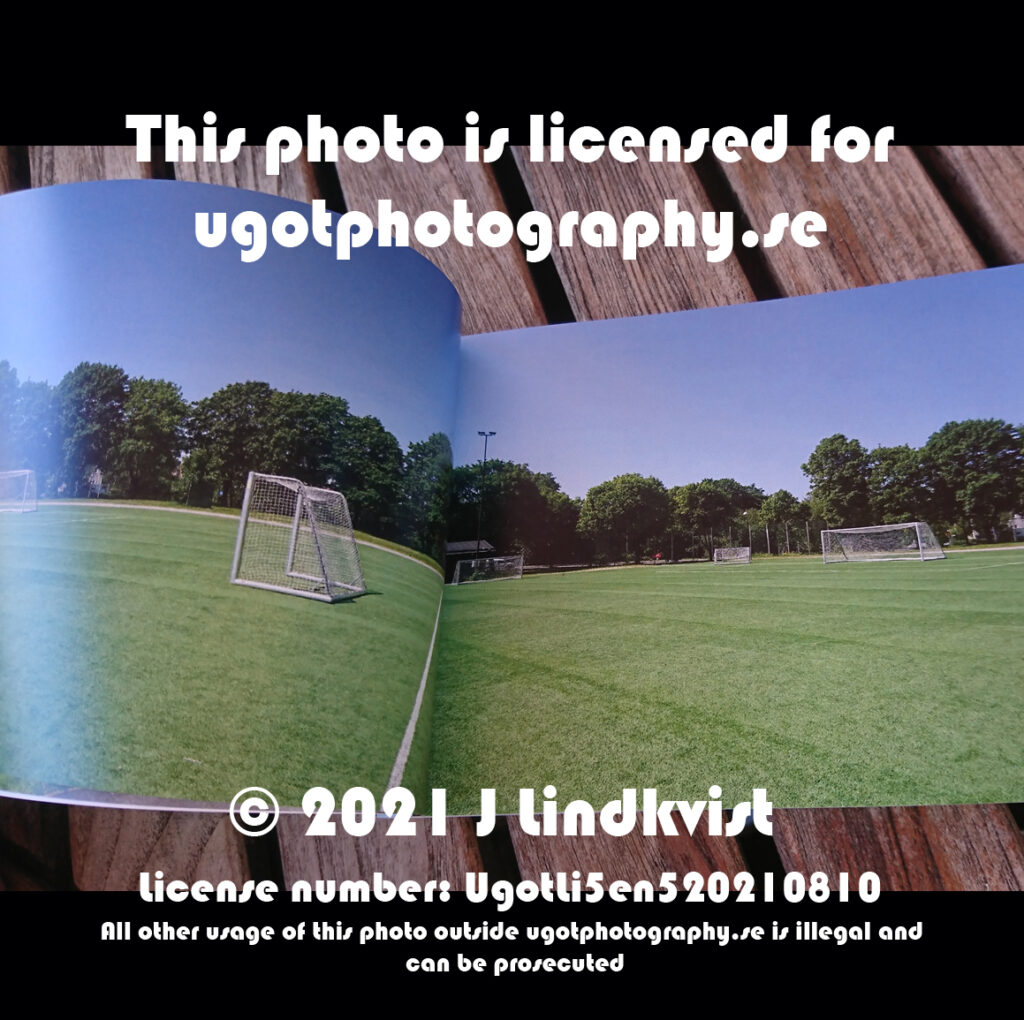
Of my 428 images Google Maps only published 378 on Google Maps publically, they haven’t highlighted which photo’s are not published or told me why. That’s why I won’t provide a link to Google Maps, because the project is not shown the right way.
From this project I created a photobook, Cheap Vacation. In it I included photo’s from places censored by Google maps. The book is a document of my photographic process and not a representation of the photo’s I published on Google Maps. The photo book photo’s are documentary. I’ve felt more free, as a photographer, in my photo book project, non censored. I have also created a homepage for my photo projects, where some of the photo’s are published.
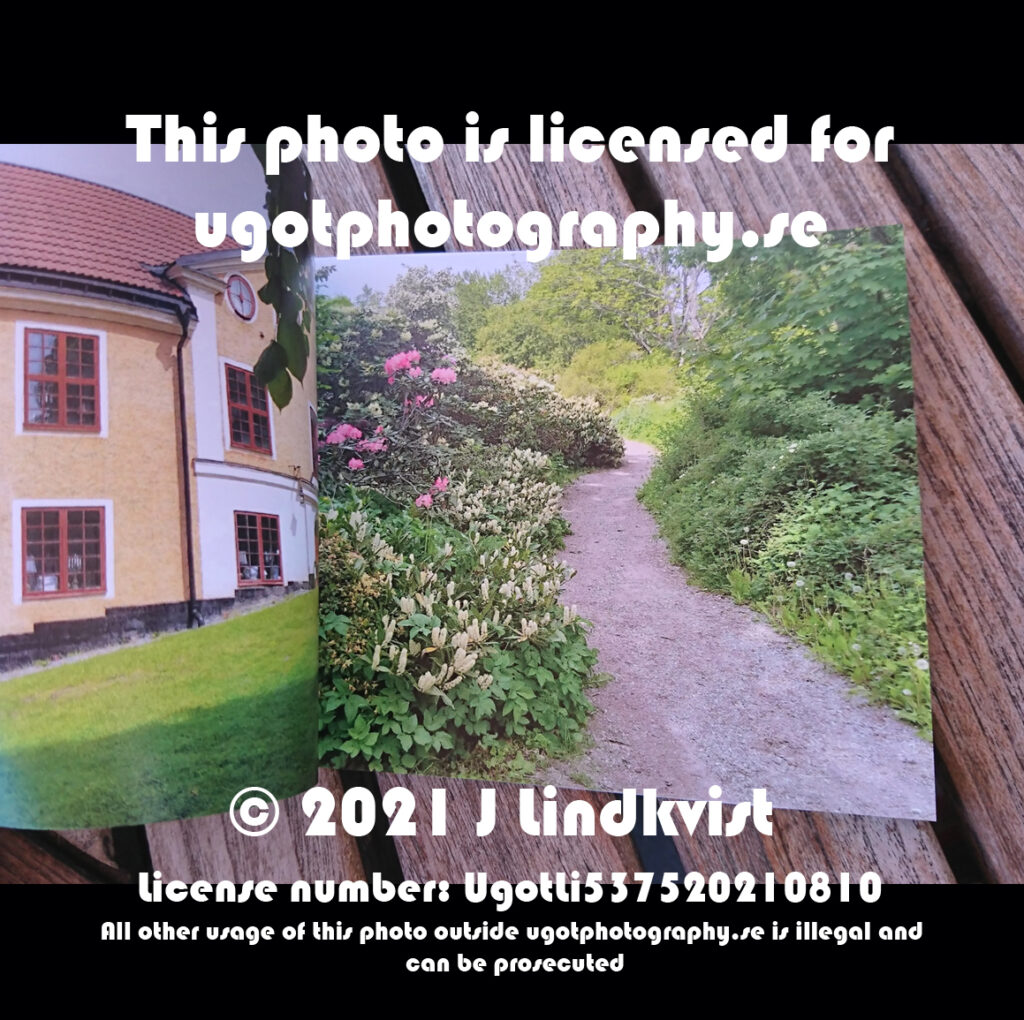
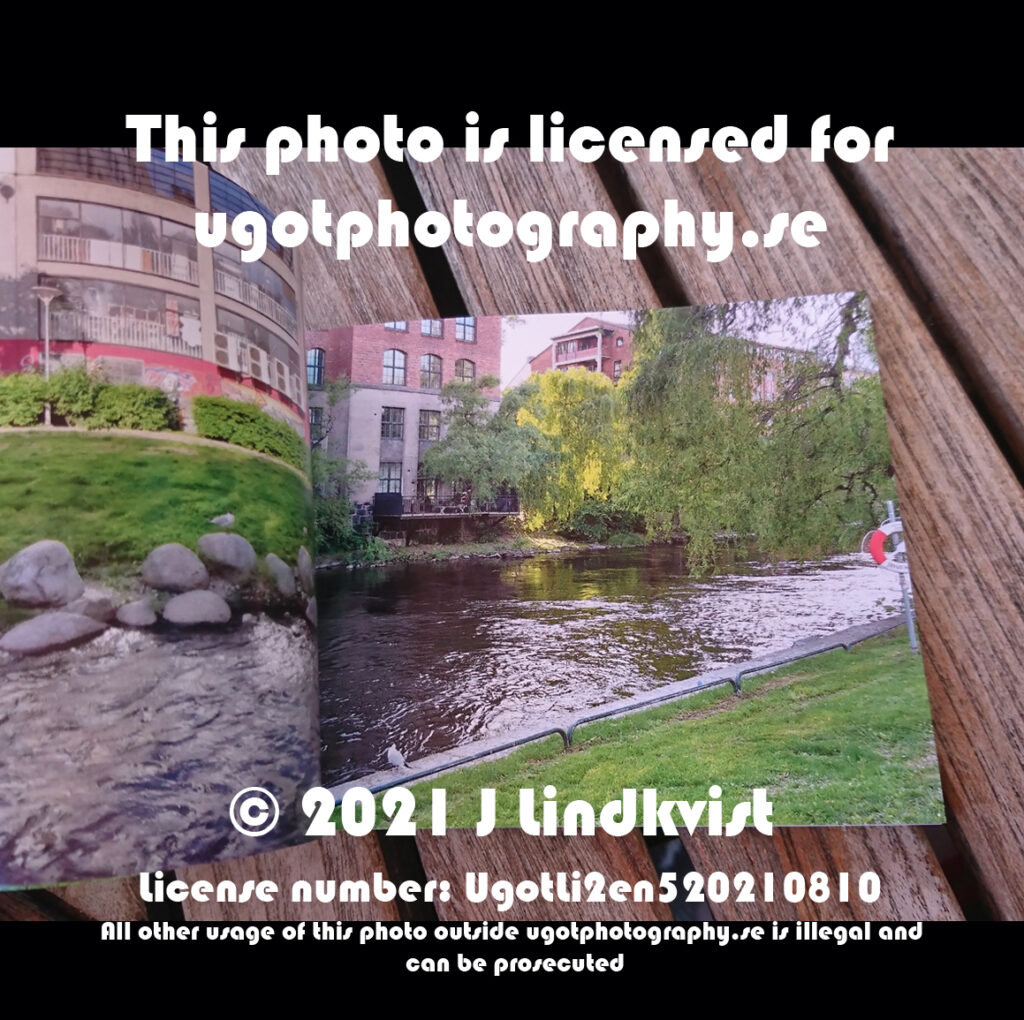
My photo’s are time stamp of places I visited the summer of 2021. Places for free picnic’s, free activities like soccer and swimming, nice places to visit for free for any group of friends or families.
***
It was in New York City
A study in fluff!
Michaela Lind
Using New York City as the backdrop. I have now lived in this city for quite some time, and I have seen many things such as buildings, bars, restaurants, cafes, theater spaces, galleries, and iconic landmarks come and go in a rapid speed. But I have never done the tourist thing and tried to avoid these areas with all my might, but as this summer project evolved, I decided to explore the insanity of “what a tourist should do” while visiting the big apple using Instagram as the communication platform, following the character Keith played by Drew Valins. The photos were aimed to have a touristy feel where both the actor made selfies with his iPhone at the same time as I was photographing him. It was quite impossible to master all the sightseeing places as cost were inevitably very high, so I had to make some decisions on what and where etc. by my own interest, what Instagram tells you as well as google.
Diving into the medium of Instagram I discovered a huge discomfort on my own behalf as the platform automatically lends itself to self-promotion, which is out of my own comfort zone despite my background in theater. I wanted to create a fictional character that had a symbolic image to America, aka Mickey Mouse, with a slight stupidity to it, and try to push the boundaries of the” no filter” and “no boundaries” that especially New York City and Los Angeles promotes. What I realized along the way was, the repetitive and slightly boring nature of touristy and self-promoting pictures as they tend to stay within the similar realm of object with the “fantastic” background. Instagram also showed me the extreme power that lay in the finished picture as it is in the end a very revised and fluffed version of the self, and anything tends to pass for success if it is captured in the “right” angle with the “right” thing. During this time, I stumbled upon a documentary called “Fake Famous” by Nick Bilton and it showed behind the scenes of the reality of Instagram and the photos taken for its platform, it honestly made me cringe!
So, after starting the page I was hit with the main question: Where can this Instagram page go when all there is, is fluff? The algorithms which guard the public and steer them only to the page of people with similar interests (or just depending on your presented concept of your page or any of your main hashtags, that then becomes the guide for you to continue to stay within your own created bubble), so is there any value in keeping an Instagram page?
Is the value to keep the illusion alive around our self-manifested and curated view of ourselves and the wish for others to see us exactly like that? Why has this medium become such a valued importance in our society to feel once own existence? By the end of my project, I realized that the project had created its own two potential roads, the focus on curating the photography of the tourist character in New York City(according to the concept created and not as much to a photographic exploration of interesting possibilities), and the research and editing the Instagram medium. As the final question arise of where to go from here?
I have decided to end here.
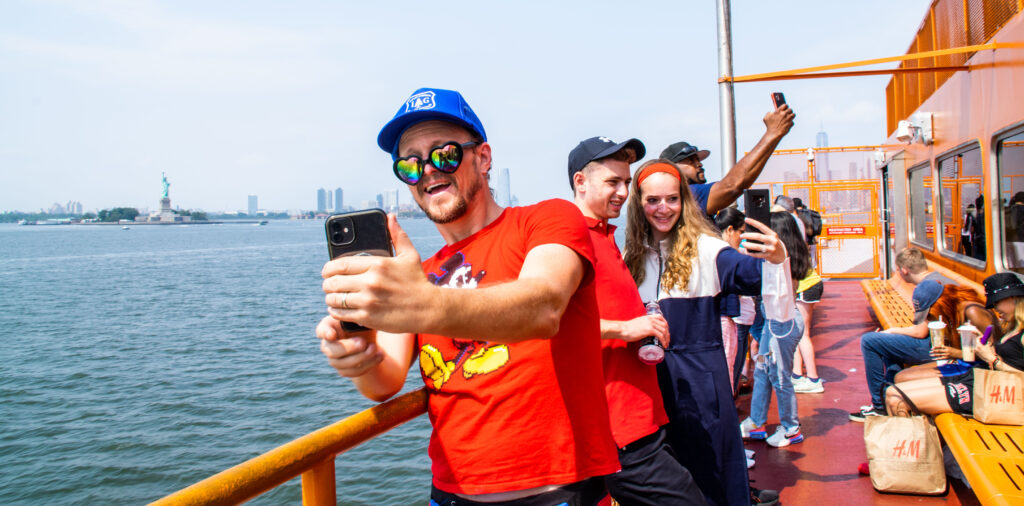
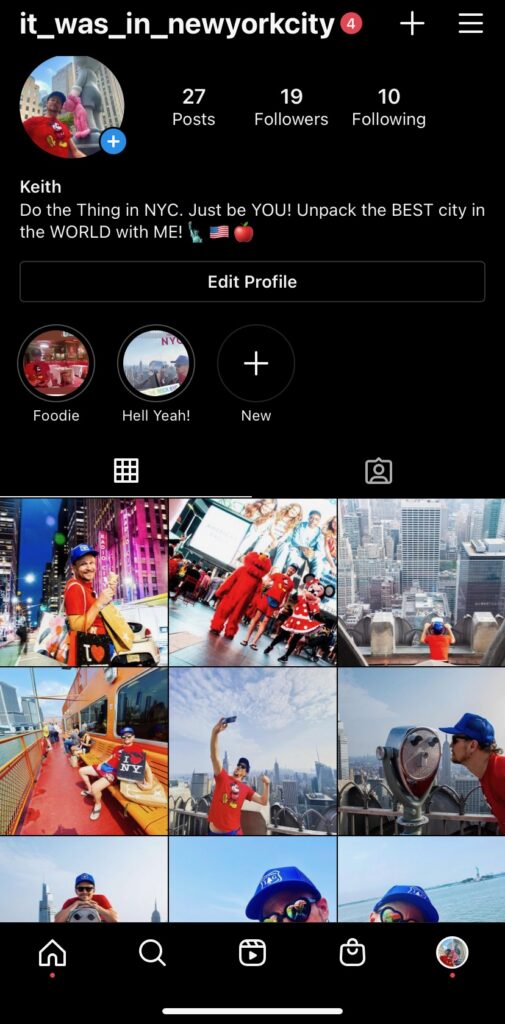
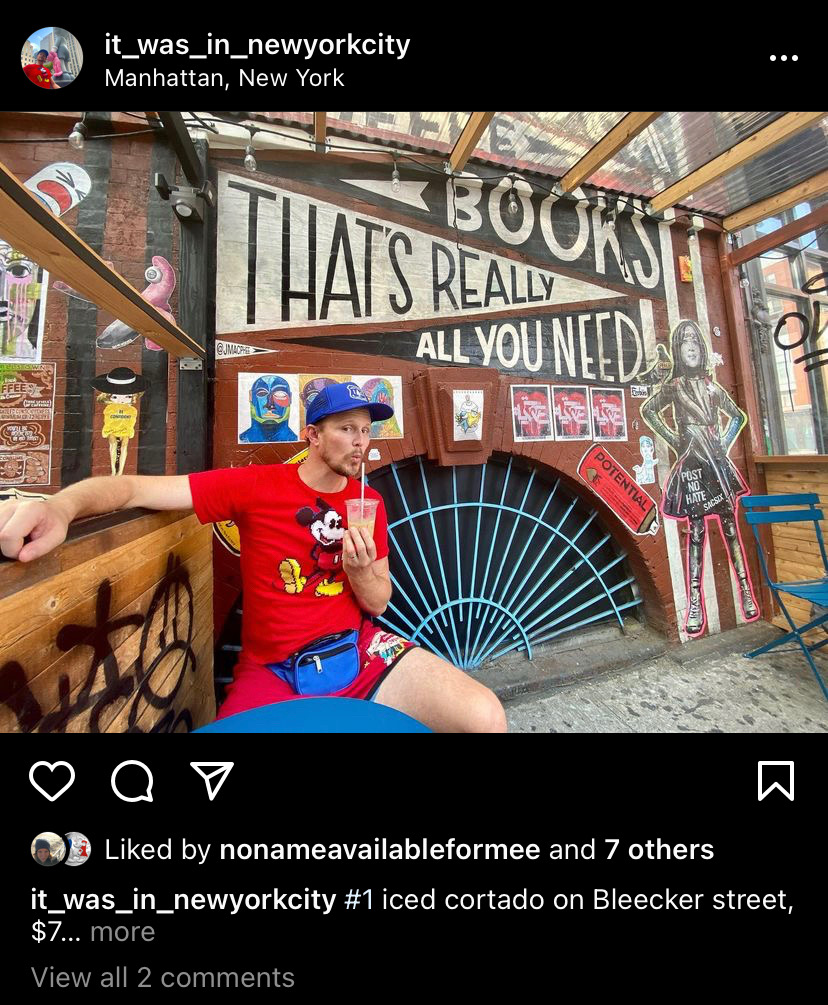
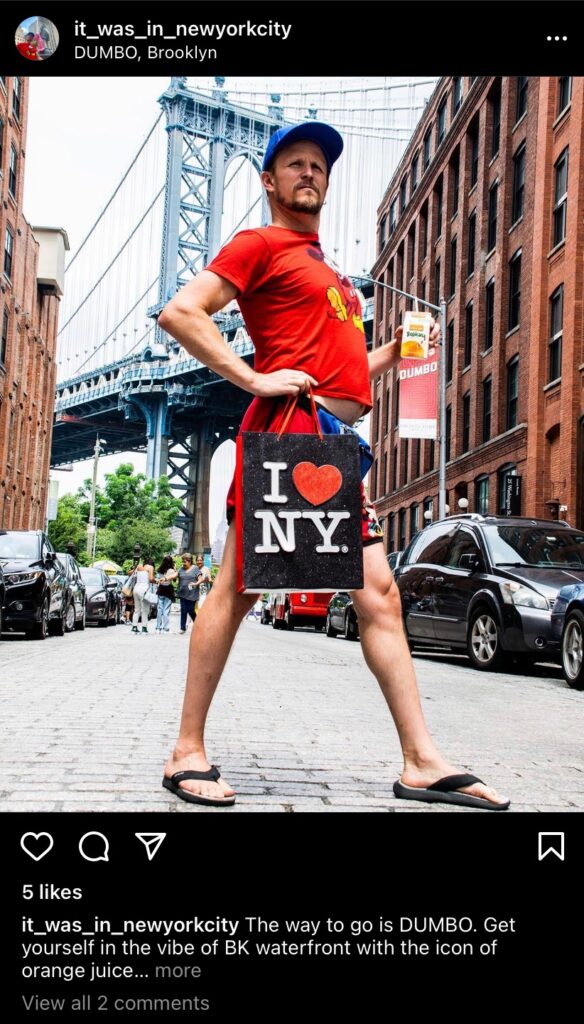
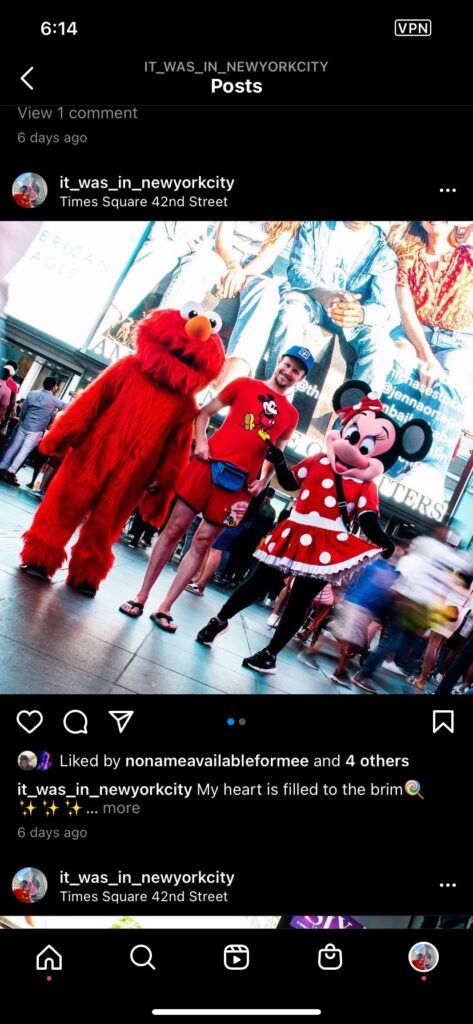
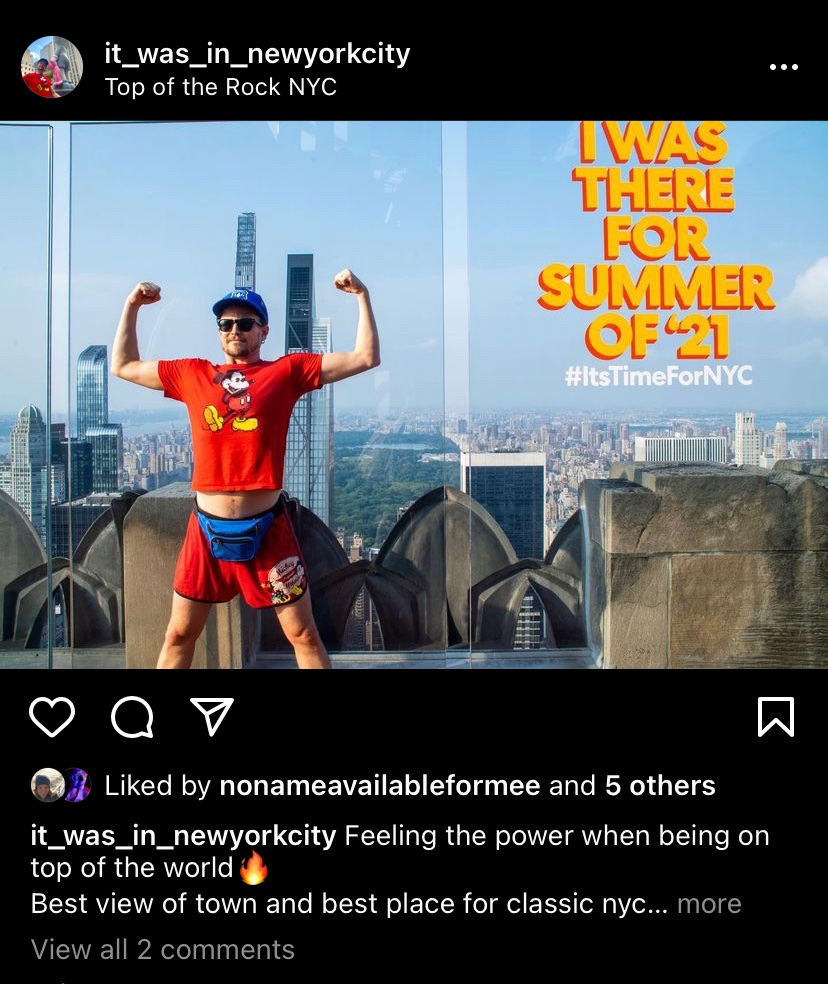
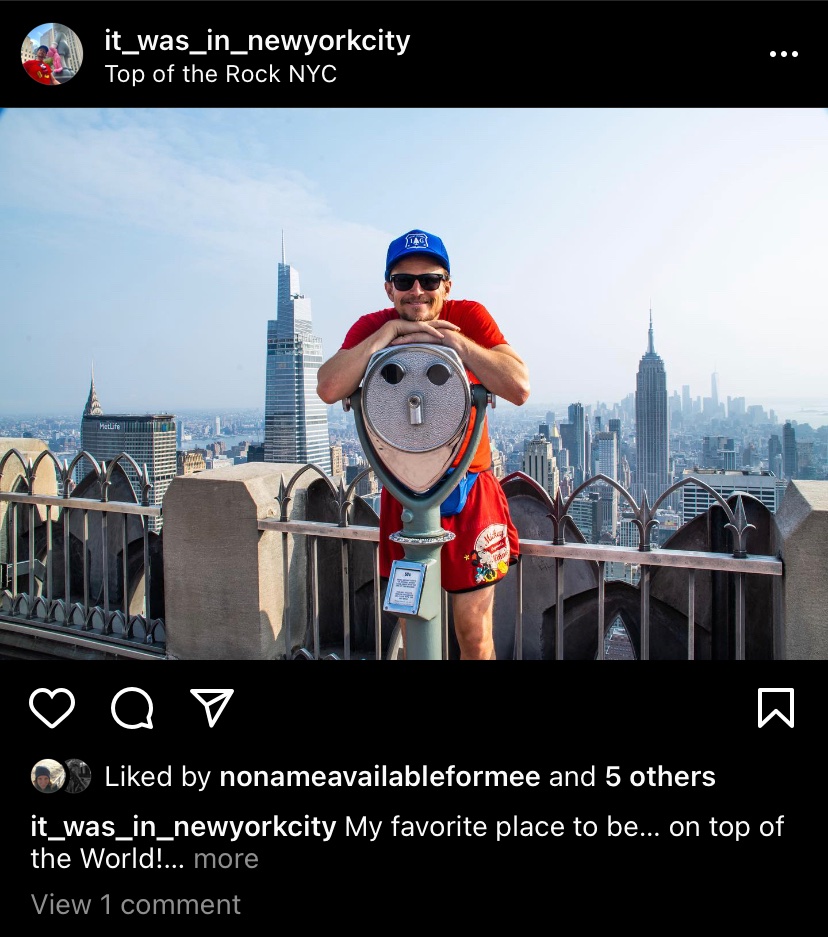
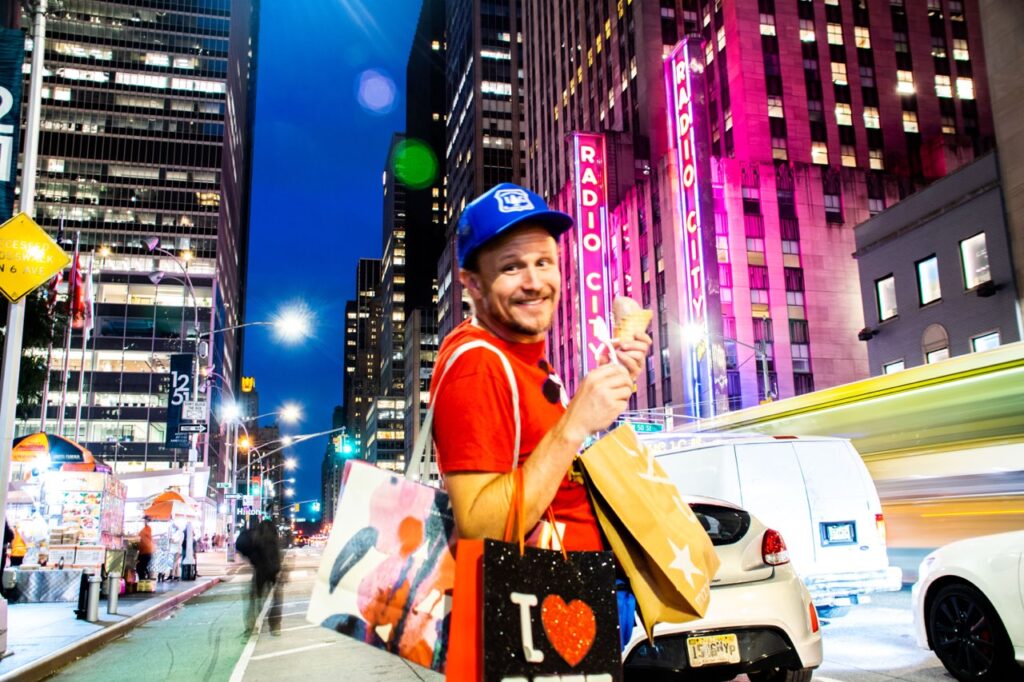
***
ATLANTIS
Axel Lundgren
In Platons stories, Atlantis is portrayed as a utopia, the theoretical ideal society as an unrealistic desire rather than as a real goal. Utopia originates from the Greek ”ou-topos” and means ”no place”. From the story of Atlantis, this project takes shape. The idea of the past exists only as a version in my or others’ consciousness, shaped and processed through old memories. Atlantis is a story that explores a generation’s homesickness and the pursuit of self-realization and meaningfulness. By returning to significant places from my youth, I visit and reshape old memories connected to myself and people around me.

Atlantis terminology is based on melancholy and escapism. Melancholy faces the longing and loss of something undefined, while it also examines a creative and exploratory state of mind. The images depict the loss of something, but also what arises from the emptiness created after the realization of the decay of utopia and the search for new meaning.


Escapism contains an escape from reality, fantasies or handling that expresses a state we wish to be in. In my work, escapism is manifested through alcohol, drugs and psychedelic elements. Escapism can be seen as a response or temporary solution to the melancholy state.


I’m in a place between lives, with one foot left in nostalgia and the other on the way to demands and expectations.


***
nomen nescio
Donna Lee
nomen nescio utforskar motsättningen mellan förväntning och verklighet med utgångspunkt i den mänskliga silhuetten. Själva uttrycket – som på latin betyder ”jag vet inte namnet” – används i skrift för att ange ett okänt namn, men anspelar i detta fall på silhuettens ano




nymitet. Människans silhuett avlägsnar hennes särdrag – varken klädstil, ansiktsdrag eller etnicitet kommer fram. Bara kroppen i sin renaste form, avpersonifierad men på samma gång definierad av rörelse och kroppsspråk.
Med inspiration från den negativa skulpturen utforskar nomen nescio hur annorlunda en silhuettbild kan te sig från det bakomliggande motivet. Något sker när en detaljlös och förvrängd skugga ställs mot sitt facit. Förväntan kolliderar med verklighet. Genom att ställa silhuett och motiv sida vid sida tvingas våra förutfattade meningar fram i ljuset.




***
We go around at night and we are consumed by fire
Julian Redaelli
I det här projektet har jag utforskat människans levnadsvillkor i det postindustriella samhället. Det som har intresserat mig är individens förhållande till staden samt människans existentiella villkor och känsla av främmandeskap i relation till platsen den befinner sig i. Jag har kartlagt Stockholms övergivna tomter, motorvägar och byggnationer sökandes efter det som gömmer sig under ytan. Genom den situationistiskatraditionen dérive har jag utforskat olika stadsmiljöer för att se hur de påverkar sinnesstämningar och känsloliv. I mina stadsvandringar har jag letat efter det förbisedda eller det som vi annars förväntas filtrera bort, på så sätt vill jag ifrågasätta vad som är värt att se och vad vi har rätt att betrakta i staden.
För mig är ickeplatserna eller ”Non-lieux”det som definierar våra städer, de förekommer överallt av nödvändighet för att våra städer ska fungera. Det är platserna där infrastrukturens behov dominerar, där människan blivit undanskuffad i förmån för strukturen. Ickeplatser är som mellanrum mellan riktiga platser, deras huvudsakliga avsikt är att vara ett övergångsutrymme som vi tar oss igenom. Att aktivt rikta blicken mot och kontinuerligt fotografera dessa ickeplatser förändrar vår uppfattning av dem och deras innebörd, det skapar ett utrymme för en djupare reflektion kring platsen vi lever på och vårt förhållande till den.
Fotografierna blir en inbjudan till att låta betraktaren se staden ur mina ögon, det blir en sorts civilisationskritisk readymade. När vi tar ett steg tillbaka och bejakar helhetsbilden får vi en möjlighet att se städer i ett annat perspektiv. Genom att visa alla de nedklottrade bänkarna, rivningsobjekten och parkeringsplatserna blottas människans faktiskt villkor i städernas inre.
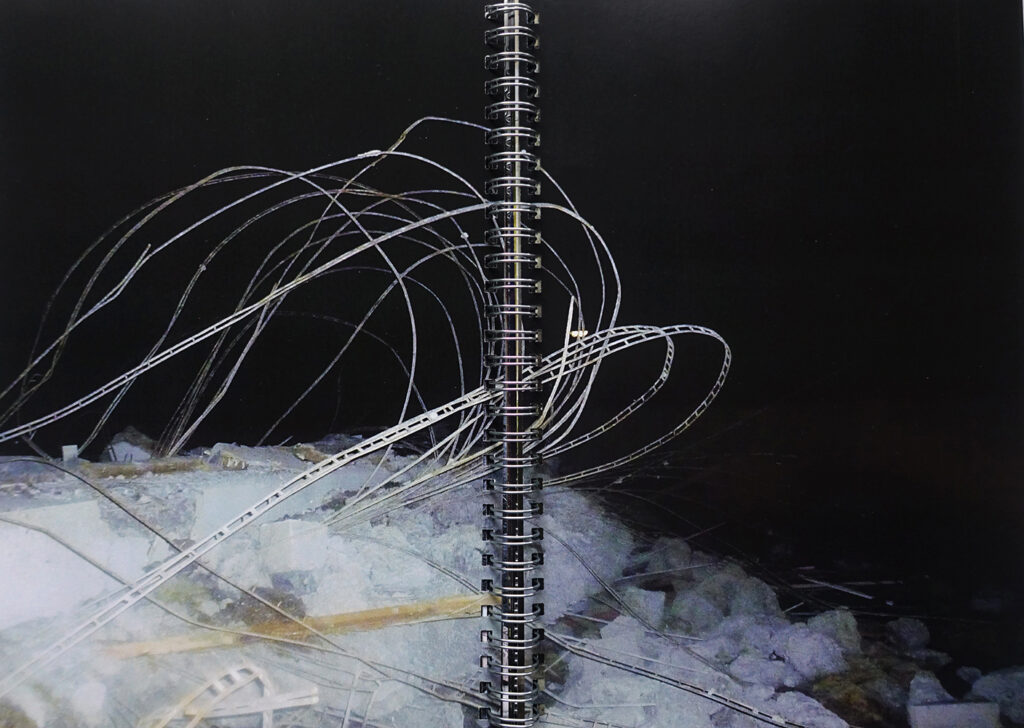
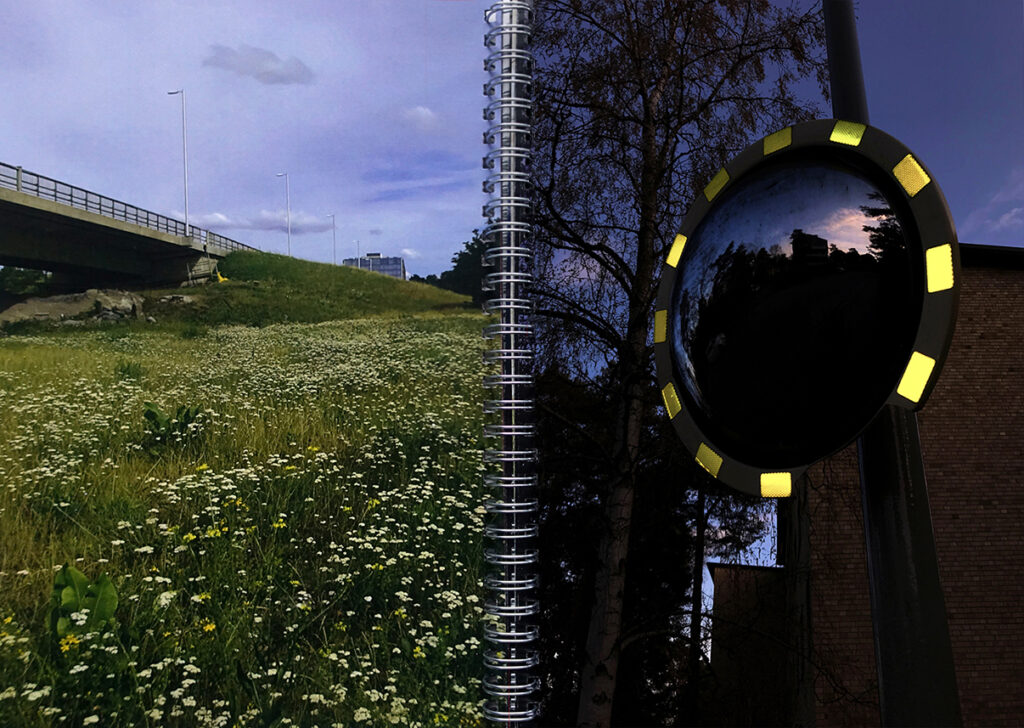
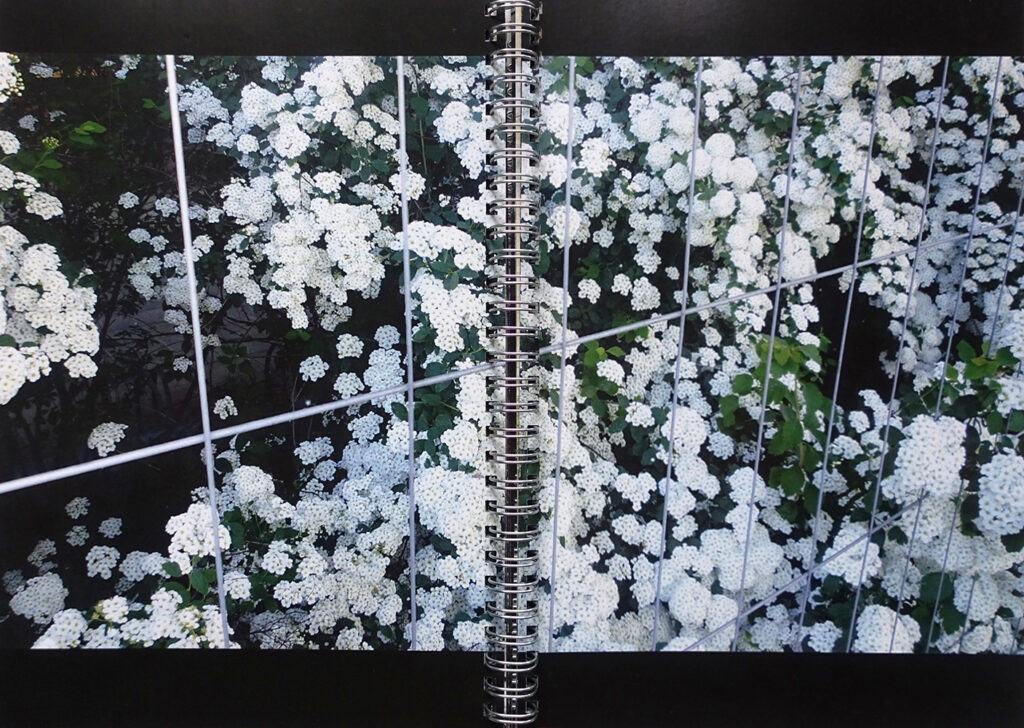
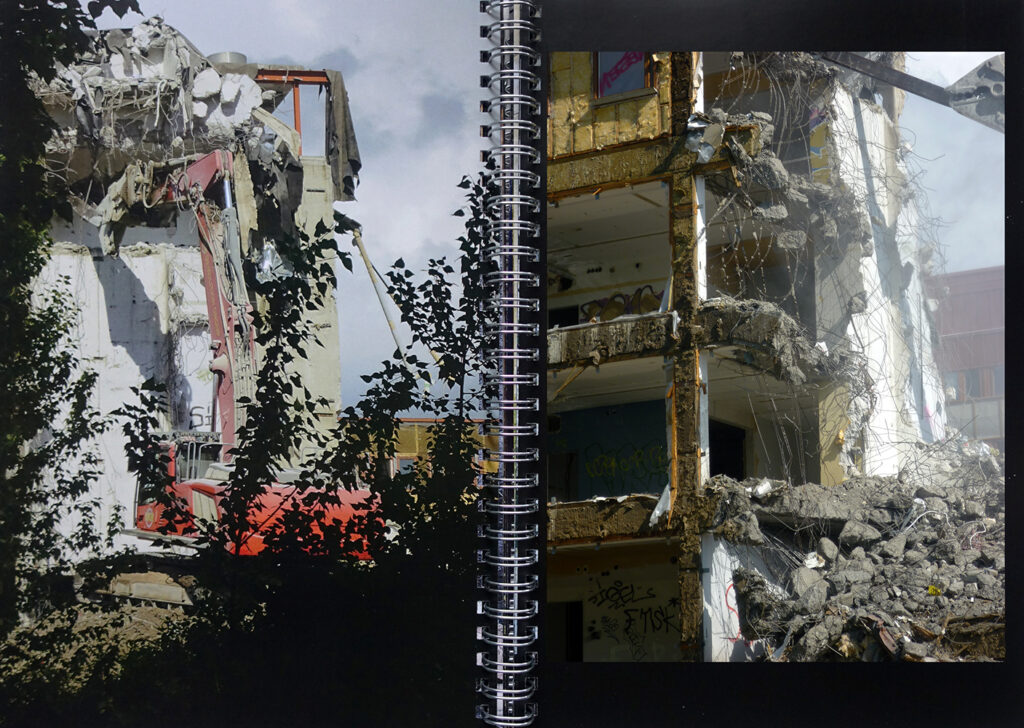
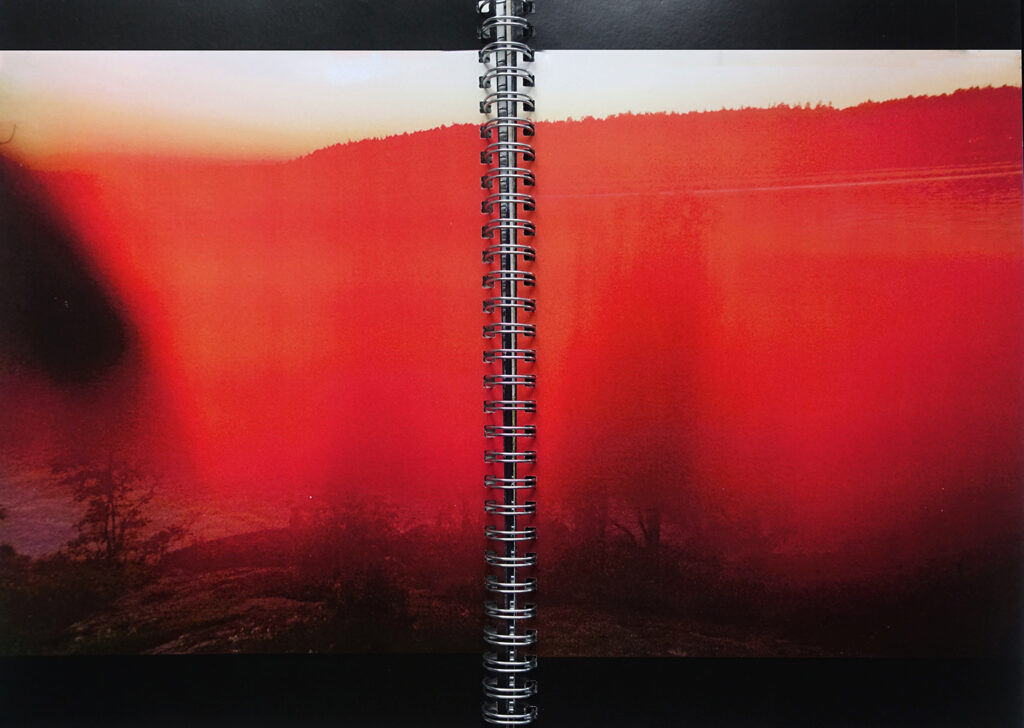
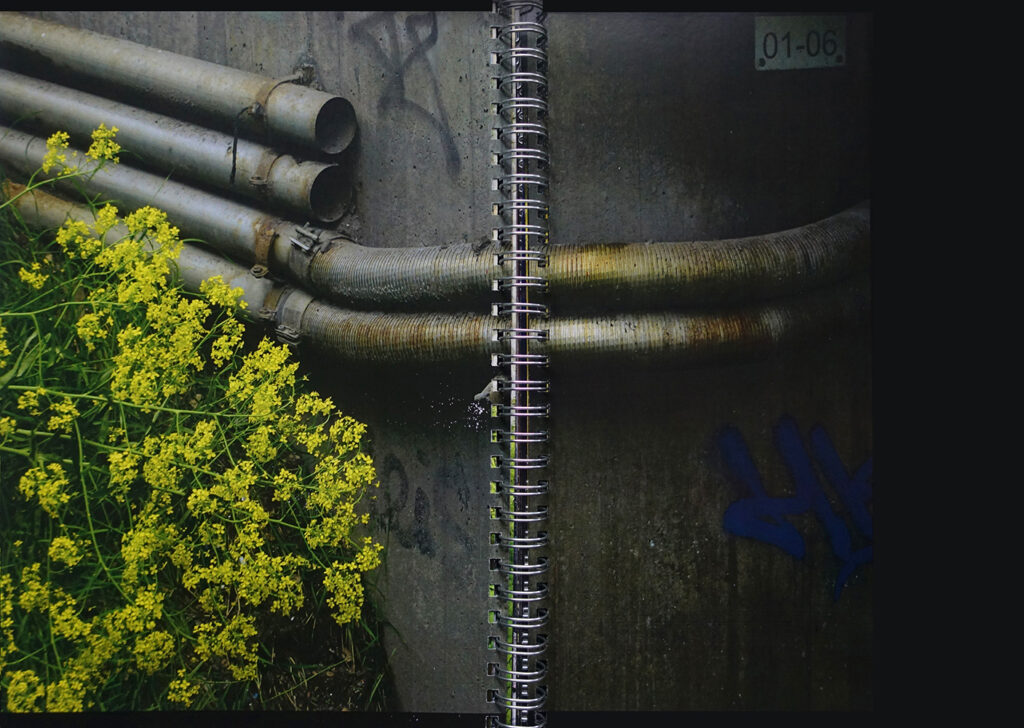
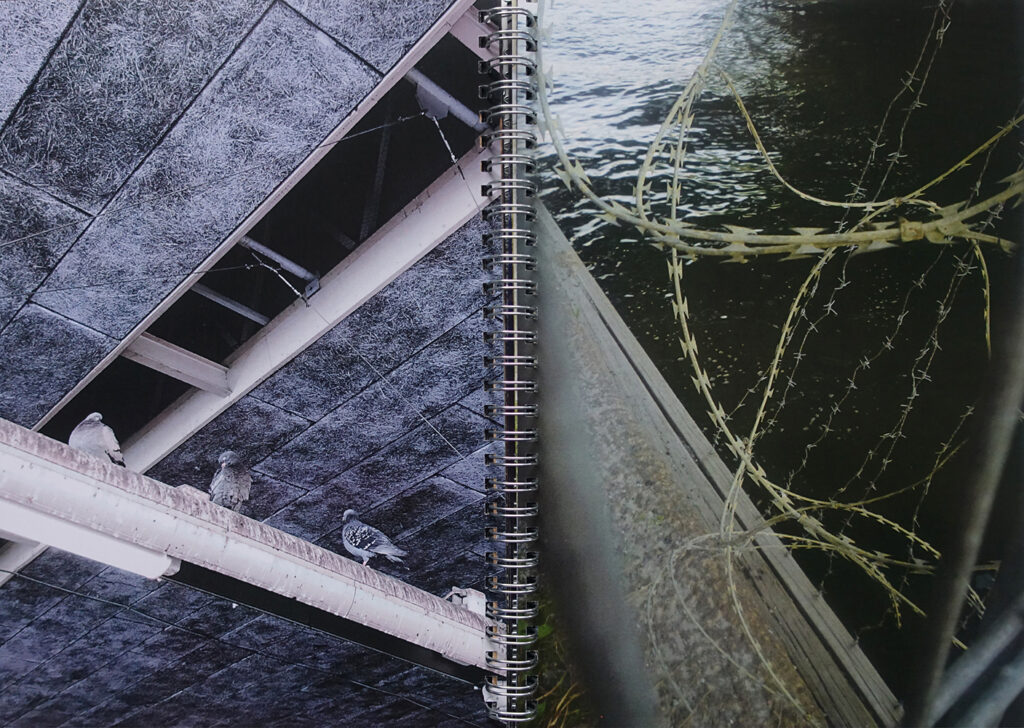
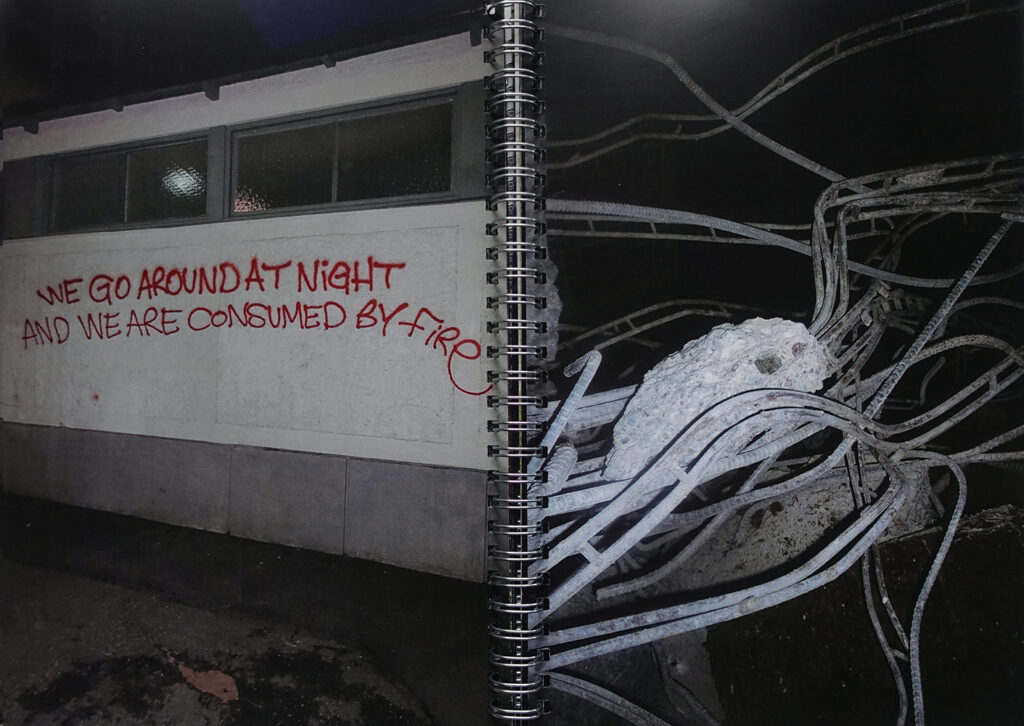
***
Archetypes & the Margins of Experience
Martin Simonic
In this project, I have been referencing CG Jung’s thoughts on the collective unconscious and the rhizome as an illustration of the invisible and underground nature of life, contrasted with an illustration of four major Jungian archetypes.
“Life has always seemed to me like a plant that lives on its rhizome. Its true life is invisible, hidden in the rhizome. The part that appears above the ground lasts only a single summer. Then it withers away – an ephemeral apparition. When we think of the unending growth and decay of life and civilizations, we cannot escape the impression of absolute nullity. Yet I have never lost the sense of something that lives and endures beneath the eternal flux. What we see is blossom, which passes. The rhizome remains.”
– CG Jung (Prologue from ‘Memories, Dreams, Reflections’)
I have used fungi and their rhizome-like mycelium as a metaphor for the underlying mechanisms of the psyche and life itself, as well as the collective unconscious. For fungi to grow, they require darkness and solitude. They are born of the dark and bring forth associations of depth and abjection – much like some of the archetypes portrayed.




***
Surge
Olivia Westling
Surge är att leta efter något, något stillsamt, något som kan laga. Att be om hjälp från något istället för någon. Vi dyker ner mot botten för att leta efter något, något vi tappat, något vi vill finna eller för en närhet, en säkerhet. En parallell verklighet där vi kan vara och flyta eller sjunka som vi själva vill. Som världen ovanför, men med en annan typ av gravitation. I Surge har jag befunnit mig i havet, där bilderna togs, och sedan använt mig av havsvattnet för att framkalla bilderna. Det sterila och kemiska möter det levande, flyktiga och förändrande havet. Hur kommer de agera och interagera med varandra? Kan detta levande vatten läka, lugna och hela sår inombords?
Detta möte mellan den kemiska filmframkallning och det organiska havsvatten har skapats genom att filmrullar har lagts i det havsvatten jag tidigare befunnit mig i innan framkallningsprocessen börjat, en process som kallas film soup. Havsvattnet kryper in mellan den tajt rullande filmen för att sprida sig och ta plats på filmen. Resultatet blir olika ljusfält, färger och mönster som annars inte varit där. Man kan se förändringen.
Att växa och att krympa
Att gå framåt och sen bakåt
Att sjunka och att flyta
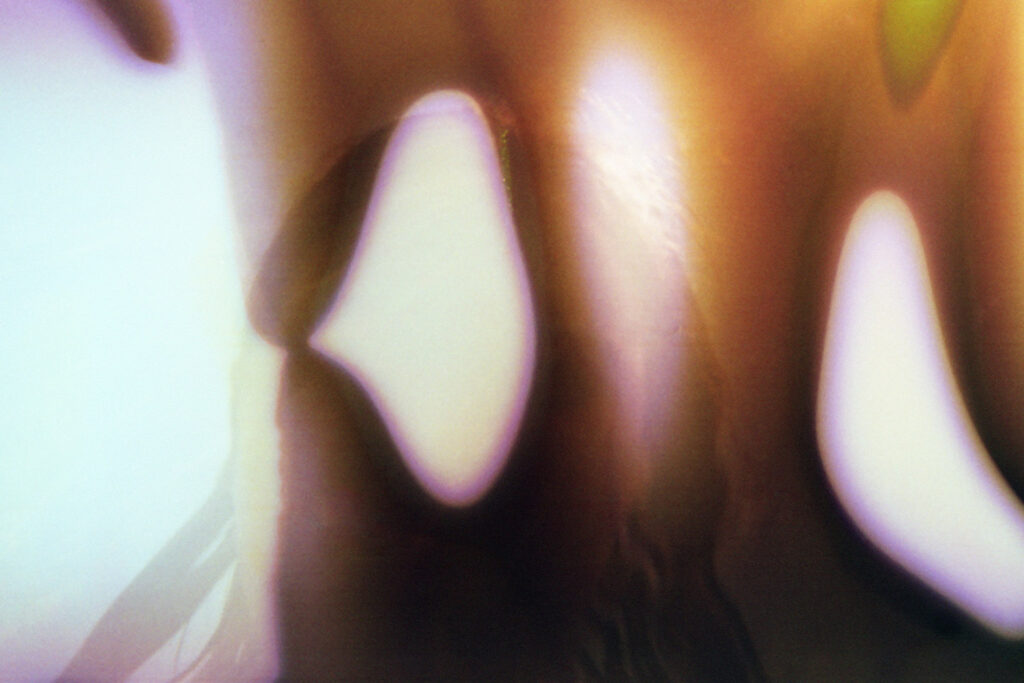
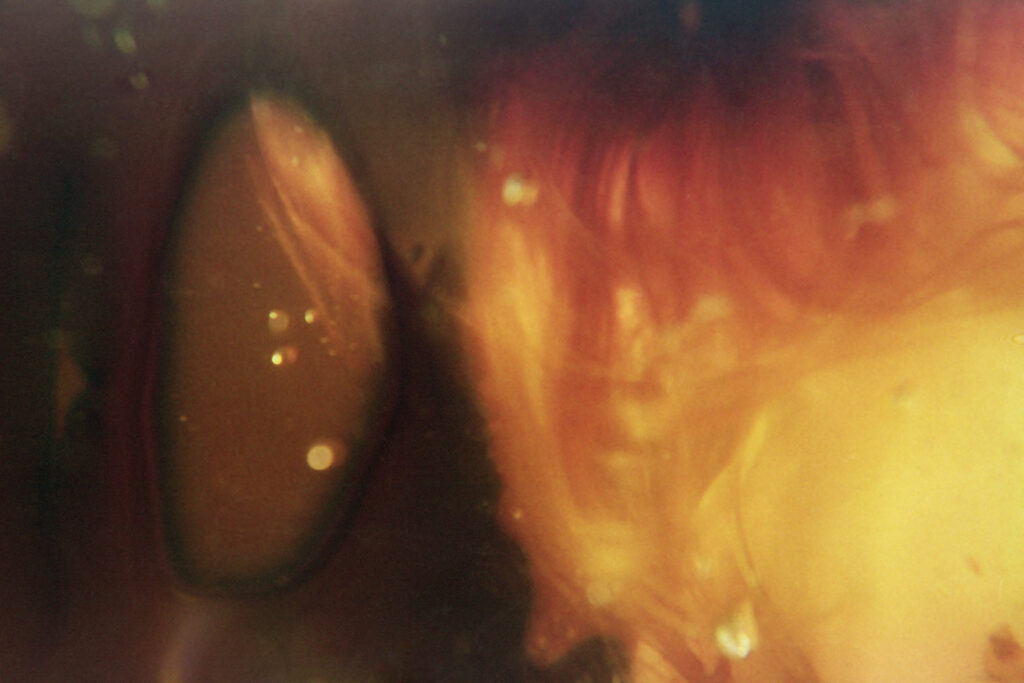
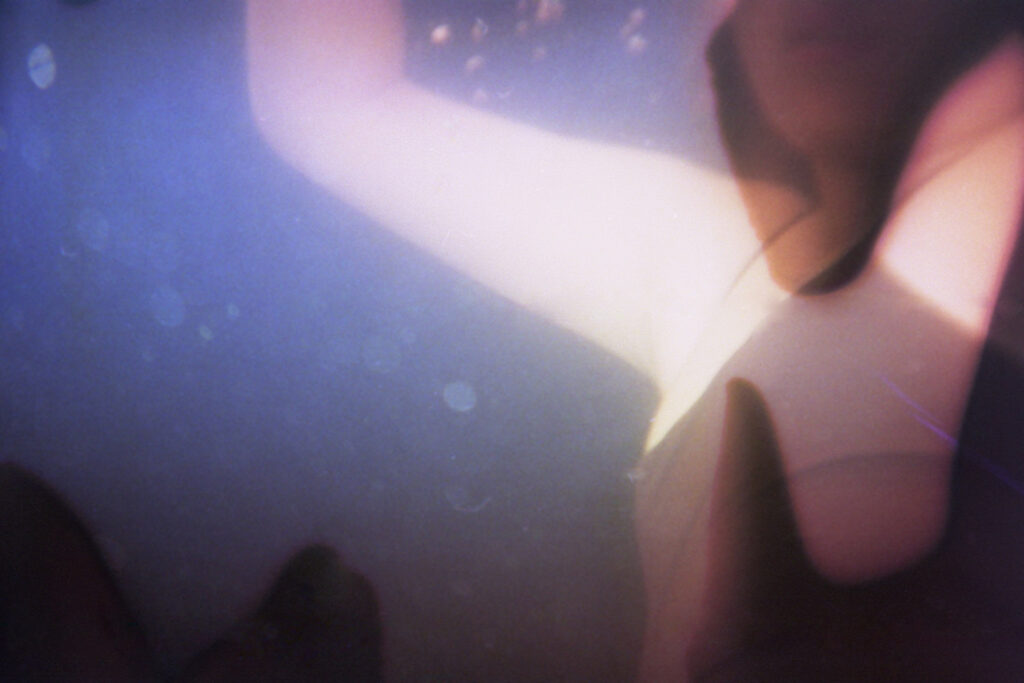
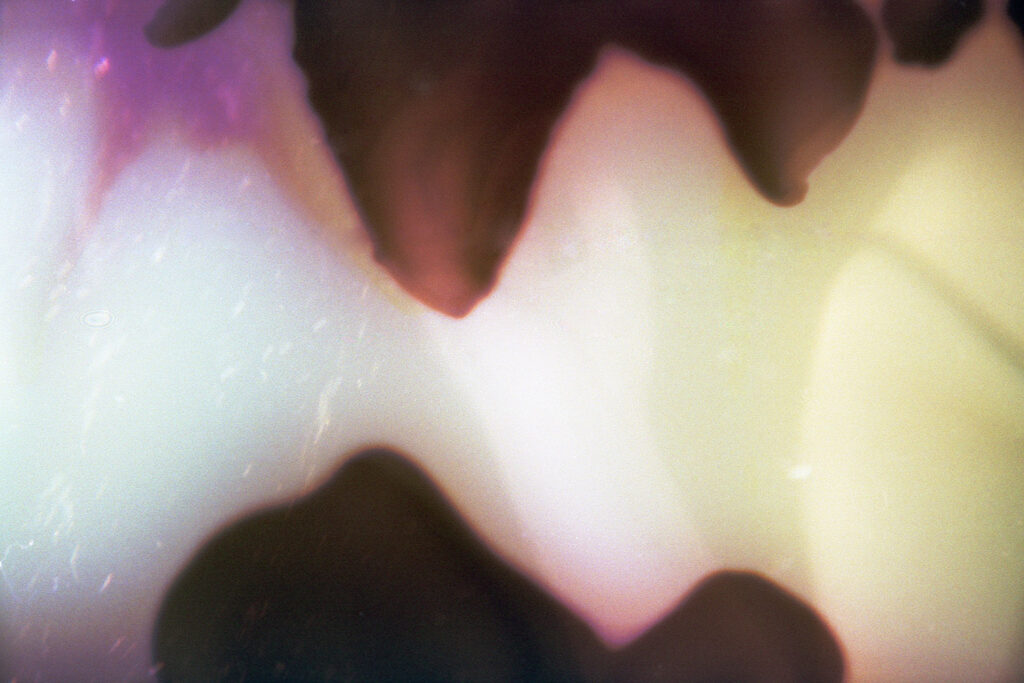
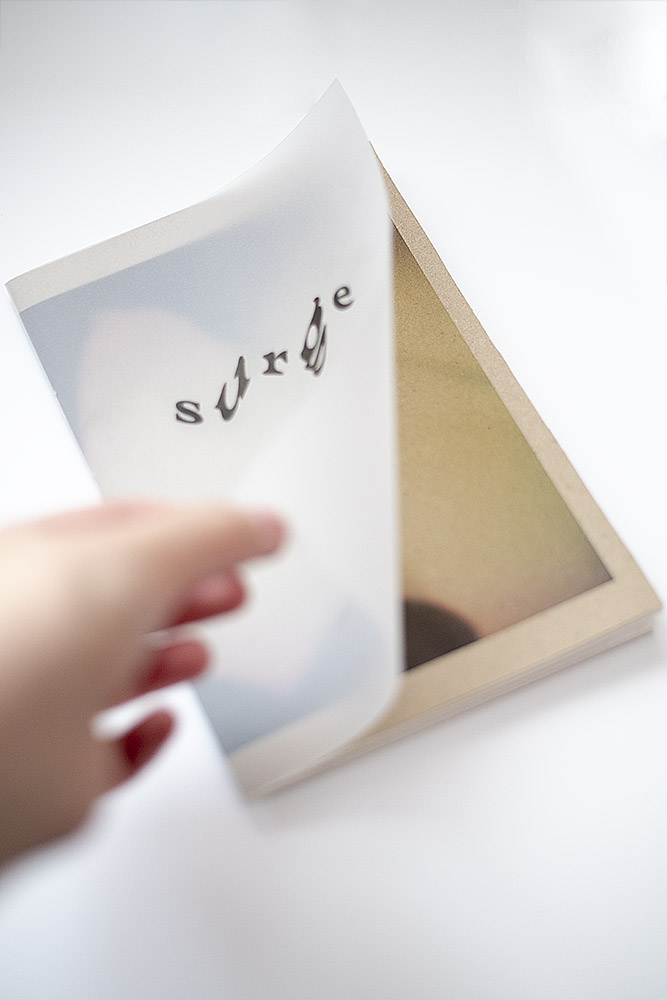
***
The Corona Summer of 2021 – Closeness and Distance
Martin Wilson
Some photographers prefer to use old vintage cameras. They think that the chipped and the skewed will help them catch magic. Unfortunately, I don’t believe in magic. Instead I take a perfect digital camera with a razor-sharp lens and put it in the hands of a chipped and skewed photographer. I can’t catch magic, so I aim for people.
During the year of 2020 the corona virus spread around the globe. Social distance, disease and death followed in its footsteps. When new waves of the virus came, people were torn between hope and despair. In the spring of 2021 the trends were positive. The restrictions were partially lifted, but at the same time social distance was still recommended. A state of limbo occurred. People yearned for company, but were at the same time urged to avoid human contact. At that time I took my camera and went out in society.
This is not one story about people and corona. There are many stories. What happens when people are forced to social distance? How do people react when some form of freedom is allowed? Which meetings take place, which meetings do not occur? These pictures are the result, from the chipped and skewed photographer with the perfect camera.
The final result of this project is a book. The first picture shows the book cover. The other pictures are selections of book spreads.

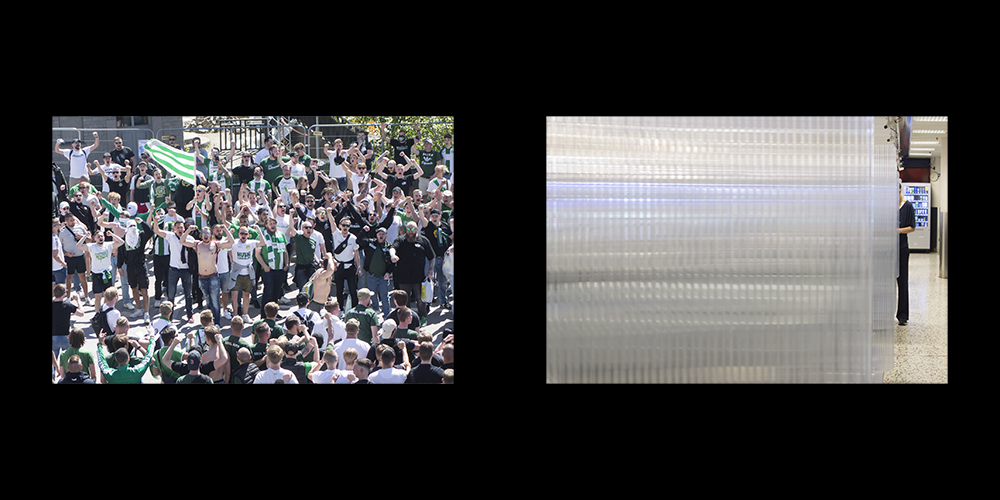
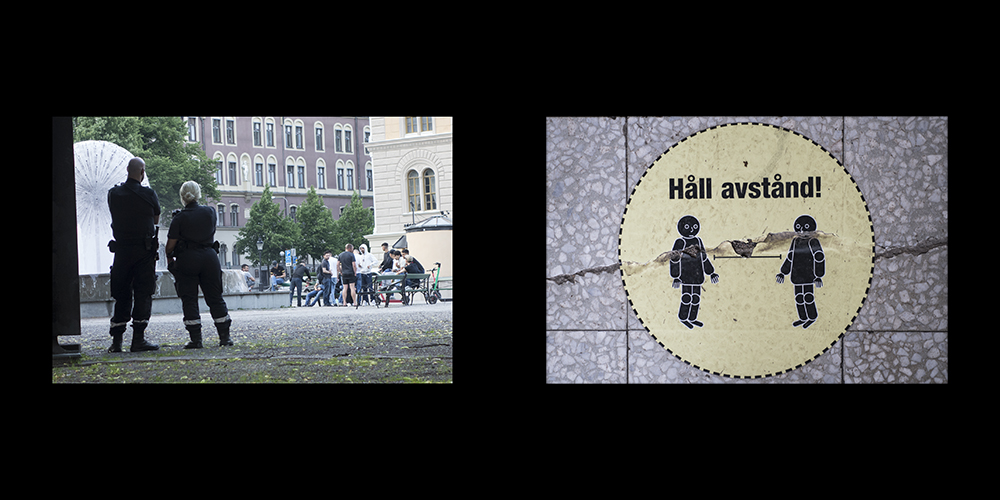
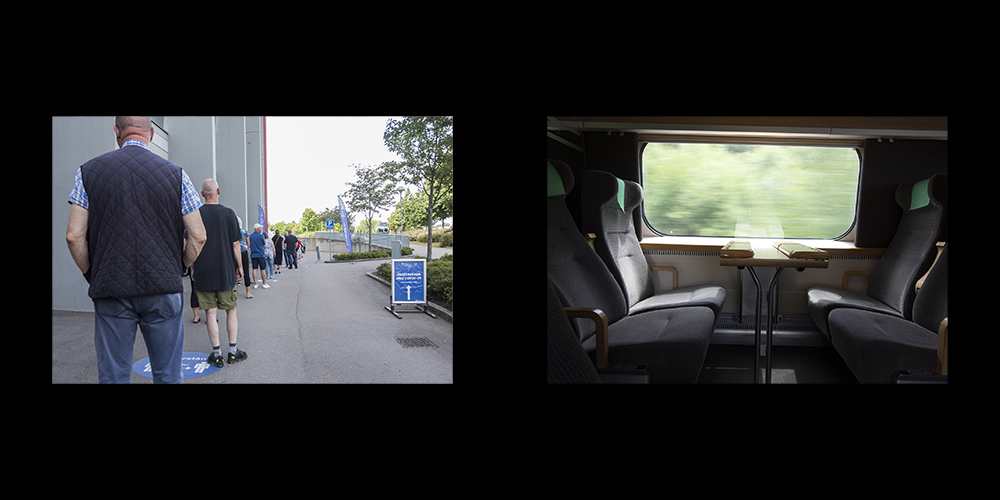
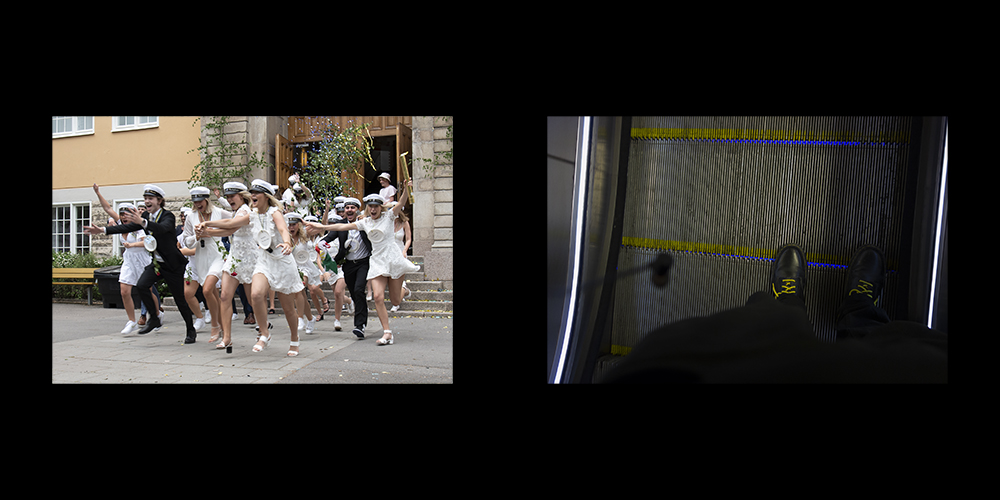
***
Vykort från Göteborg
Arianna Masciolini
Jag är ingen konstnär, och mitt yrke spelar en viktig roll i detta projekt (som har en webbplats som slutprodukten): jag är mjukvaruutvecklare och arbetar med språkteknik. Då får man säga att jag är mest intresserad av språk, vilket avser både programmering och mänskliga språk.
Projektet inspireras av en bok om kreativt skrivande som har en ganska teknisk inriktning: Grammatica della Fantasia (“Fantasins Grammatik”) av Gianni Rodari. Rodari förespråkar lärande genom lek och föreslår en rad kreativa övningar som låter vuxna och barn leka med ord. Målet är, förklarar förfättaren, att se till att alla, oavsett social status, kan använda språket på alla möjliga sätt, inklusive kreativt. “Inte för att alla ska vara konstnärer”, skriver han, “utan för att ingen ska vara slav” ¹.
Enligt min åsikt gäller detta för alla konstformer, och alla kan dra nytta av att utöva en av dem. Med detta projekt är det då syftet att lära mig att arbeta med fotografi systematiskt, och på tal om systematik minns jag ett annat litterärt verk: Raymond Queneaus Exercices de Style ² (“Stilövningar”), där samma historia omvandlas och berättas på 99 olika sätt.
Ordet omvandla är viktigt, eftersom de “stilövningar” som jag valt är arkitektoniska omvandlingar. Fotografierna, som visar icke-turistiska byggnader och landmärken i Göteborg, tas i par: en experimentell bild, där motivet omvandlas, och en “vykort” eller referensdbild. De som följer är exempel på hur jag använder olika omvandlingstekniker.
Detaljframhävning
En enkel idé är att bara visa en detalj av en byggnad, som i fallet med den här fabriken.

Okonventionella synvinklar
Ett alternativ är att välja en okonventionell synvinkel. Johanneberg Science Park fotograferades till exempel under- och bakifrån.

Reflektioner
En annan möjlighet är att inte visa landmärket direkt, utan snarare dess reflektion.

Funktionssändring
Man kan även få en byggnad med en viss funktion (t.e. ett bibliotek) att se ut som en med ett annat syfte (i detta fall en kyrka).

“Landmärke A som landmärke B”
Sist kan man försöka framkalla ett annat, kanske mer välkänt landmärke (Disneyslottet i exemplet).

¹ Gianni Rodari, Grammatica della Fantasia. Einaudi 1973. Egen översättning.
² Raymond Queneau, Exercices de Style. Publicerades första gången i tidskriften Messages 1943.
***
Having a coffee in Stockholm 2021
Lenita Tinkanen Sandbäck
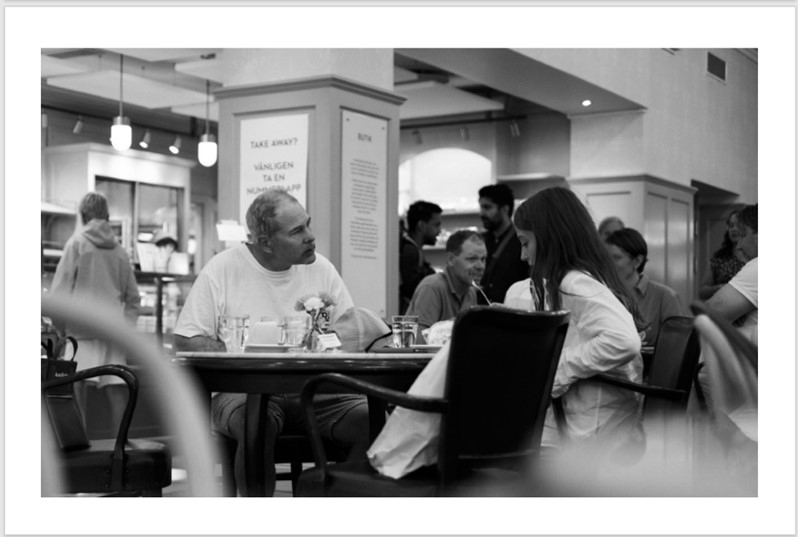
In the photo from a café there is much more than just a table and a body. The pictures are snapshots, often taken from the hip without me having a clue what is to be found in the view-finder. I capture the moment with my camera but when I look at the picture I become an observer and the picture is then more about me than the person in the picture. The sound is gone and there is time to see and experience the feeling of reading a newspaper, of laughing with friends, of resting during a shopping tour or of coming out from loneliness and experiencing being with others. The picture makes the content universal. Human beings are beautiful and we are all so much alike but in the world there is still no equality. There are socio-economic differences between the districts in Stockholm and the differences are said to increase. In the series of pictures I am taking photographs of people in cafés in different parts of the city to see if and how the socio-economic differences between the districts can be viewed in the environment of the café. Equality is not only about economy but also about values and norms, unspoken rules defining who has the right to public space. I want to make visible how far we have come as a community towards equality, to see what social groups have access to public space in the form of cafés in Stockholm 2021.
